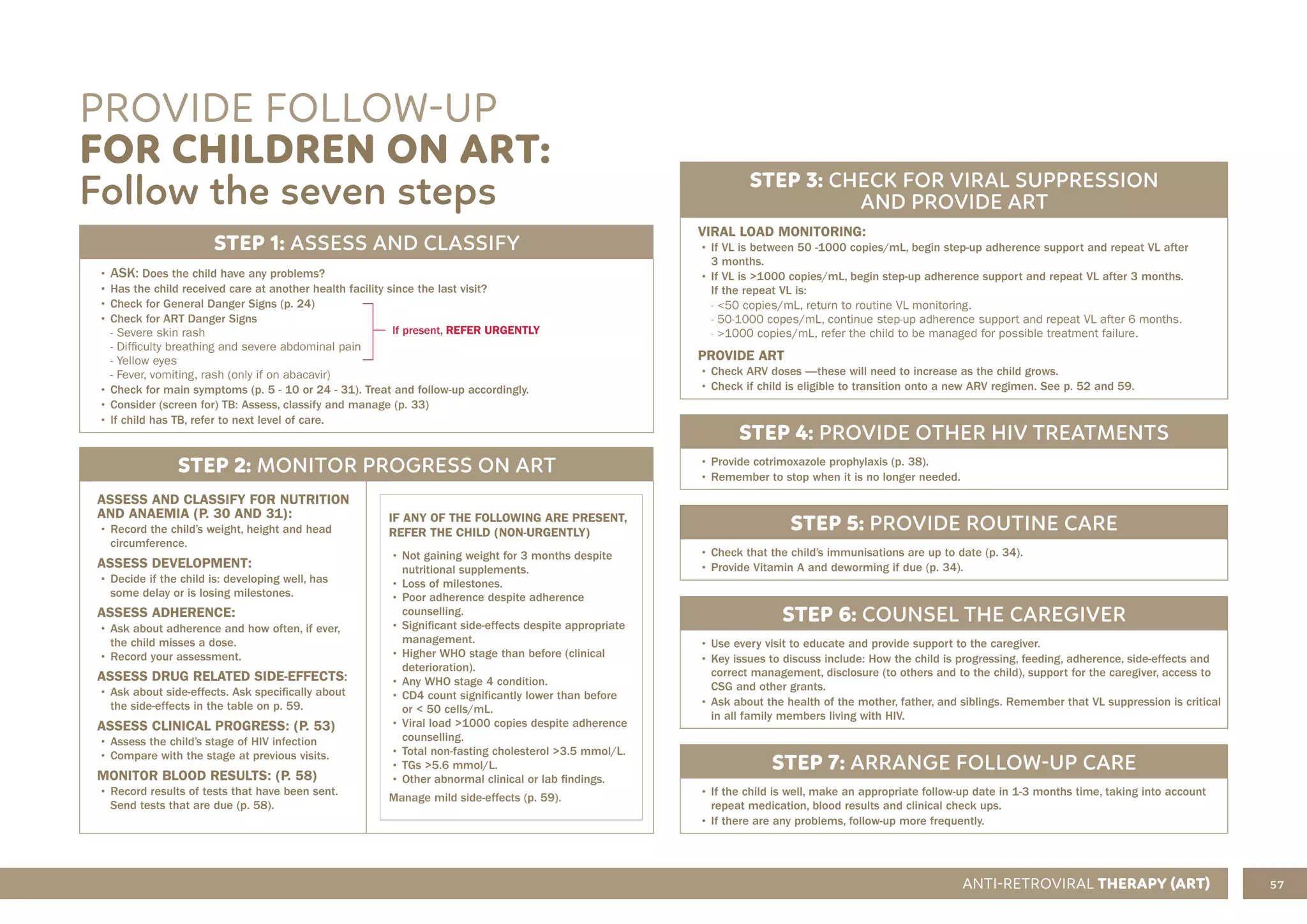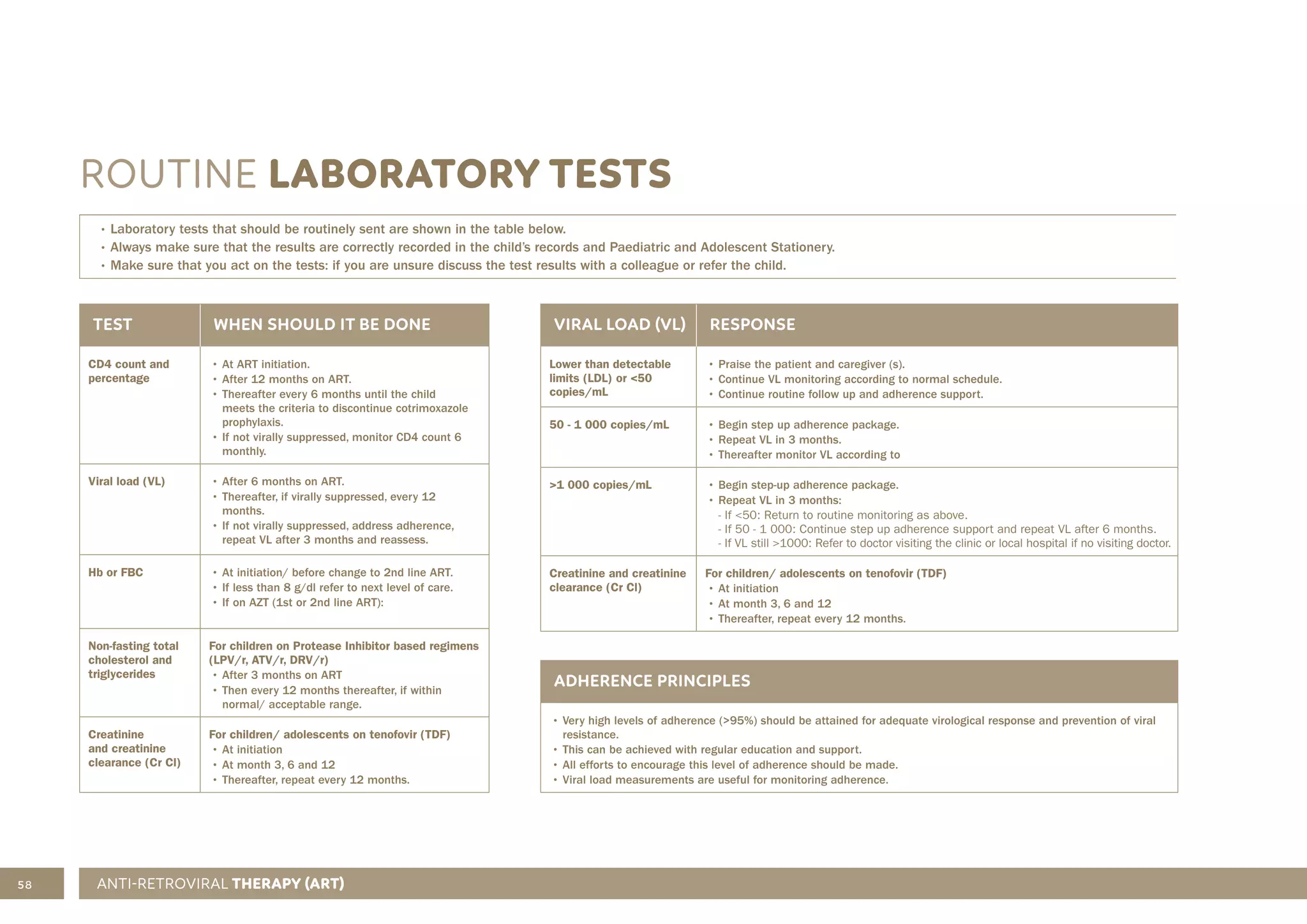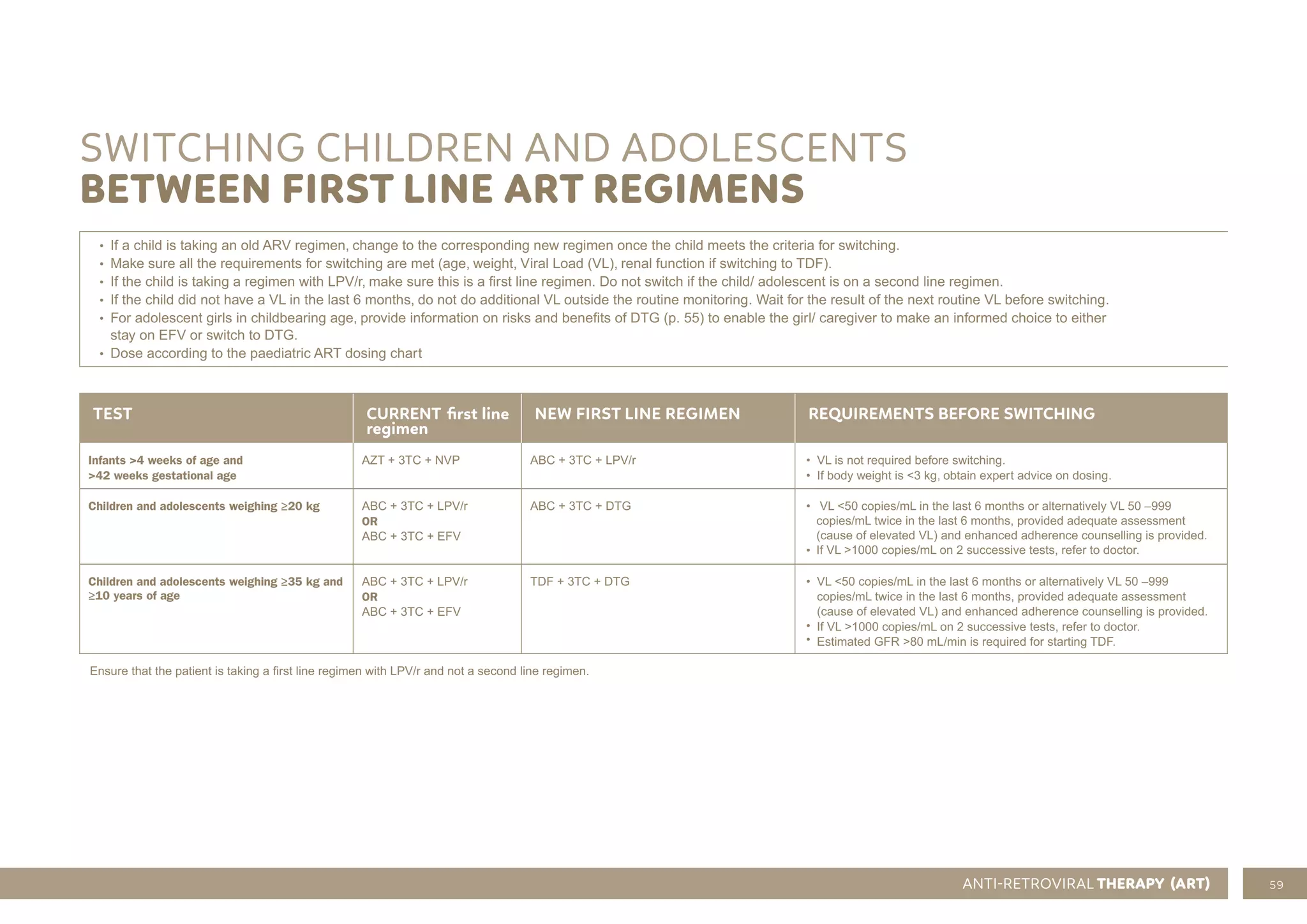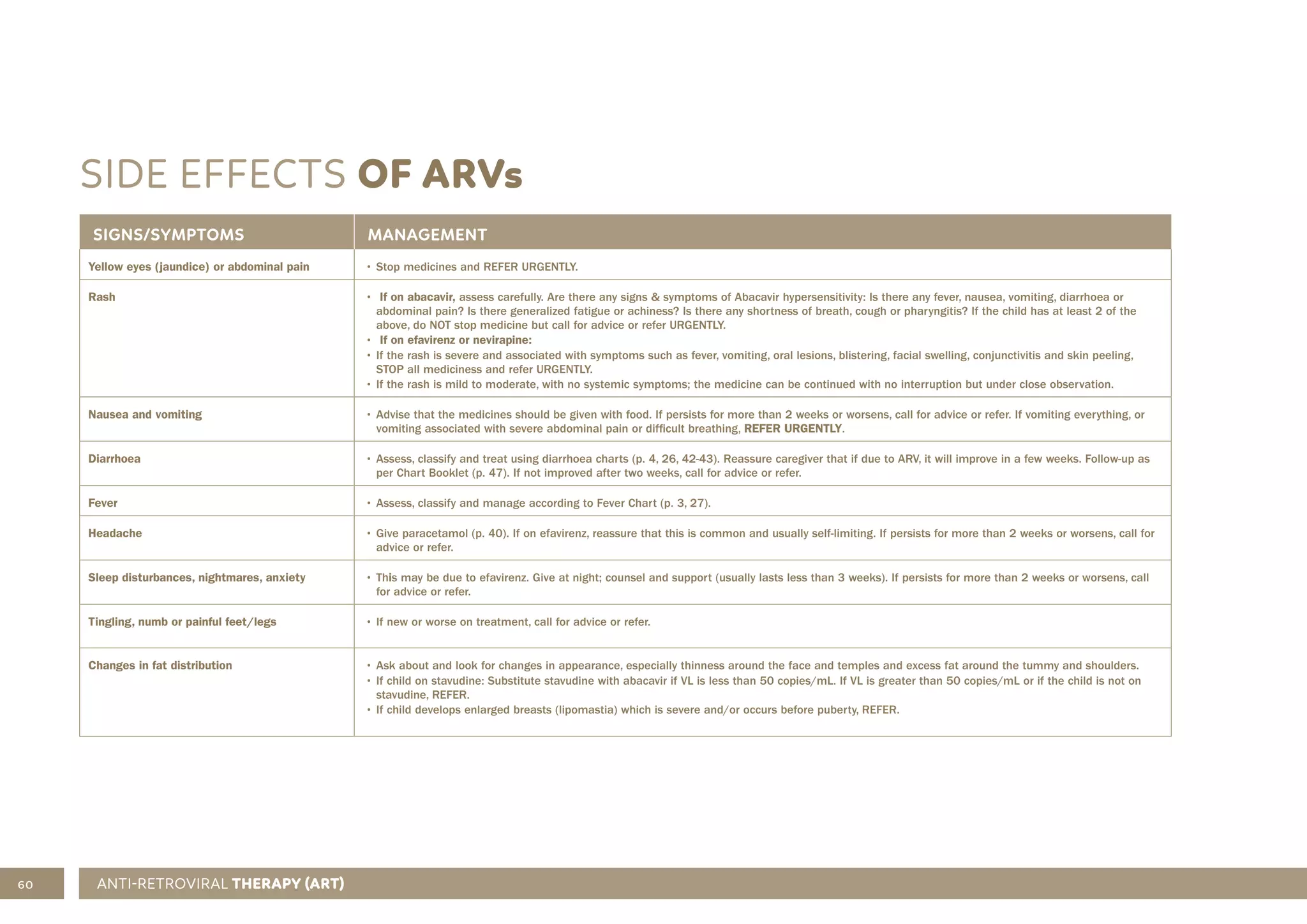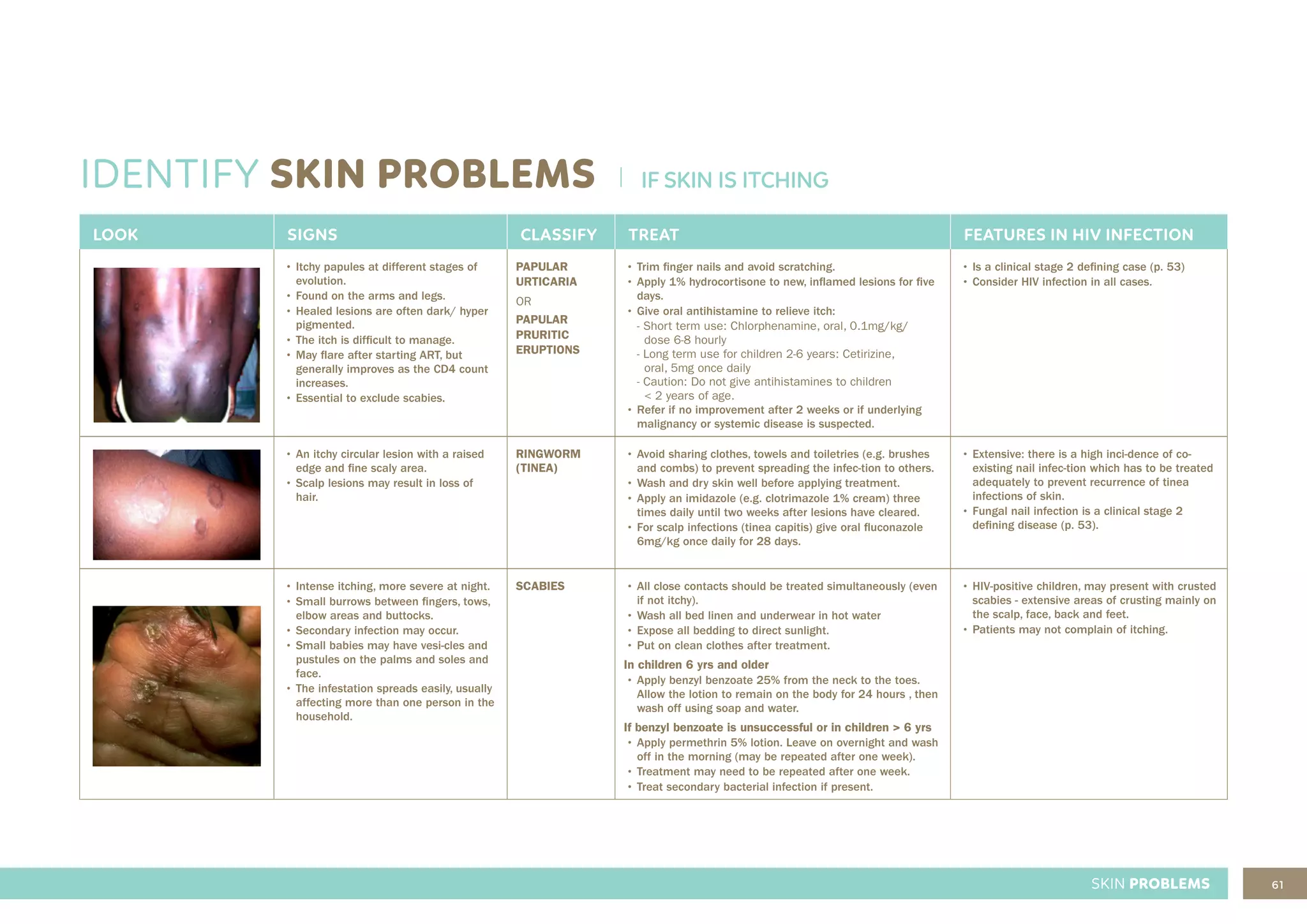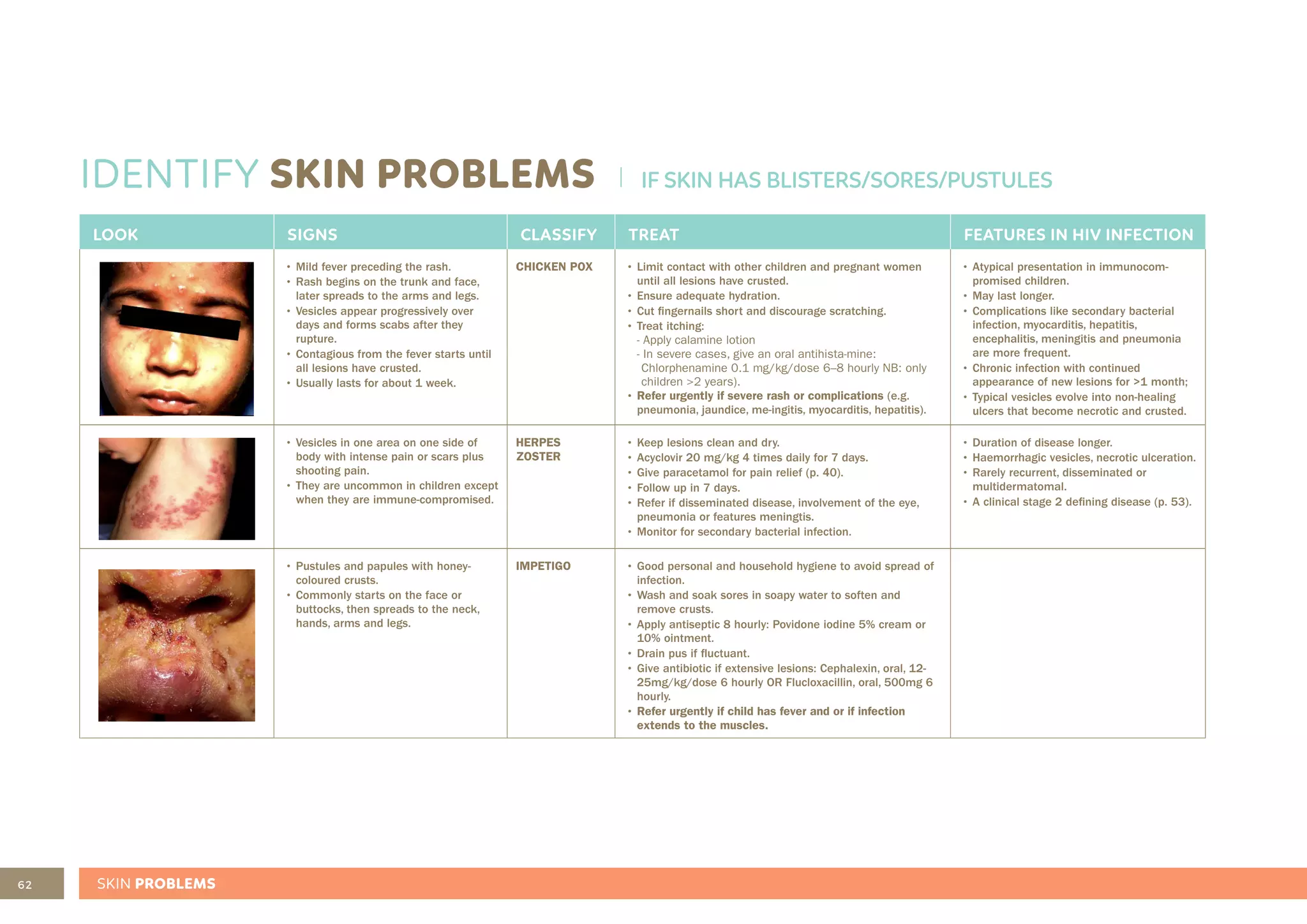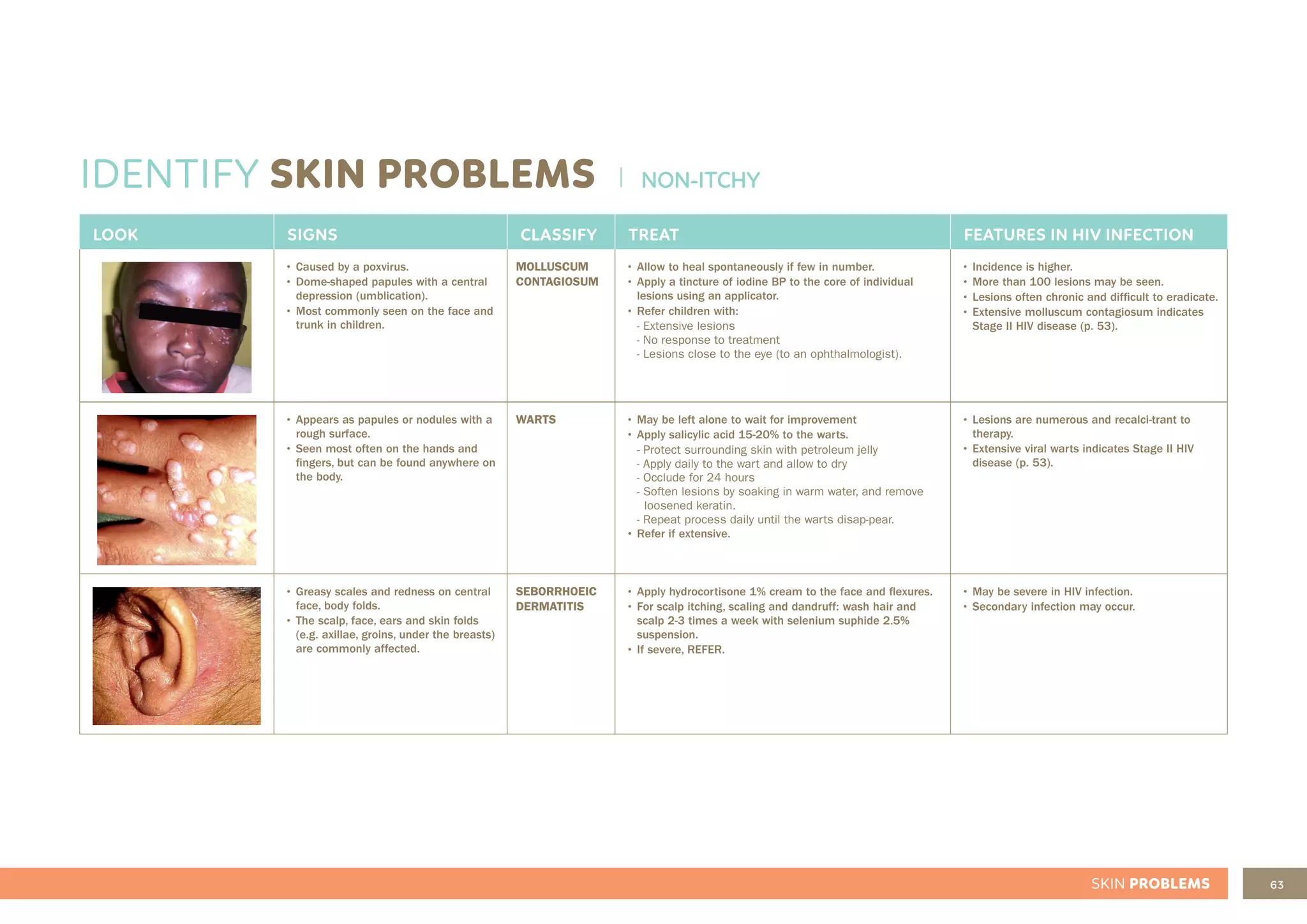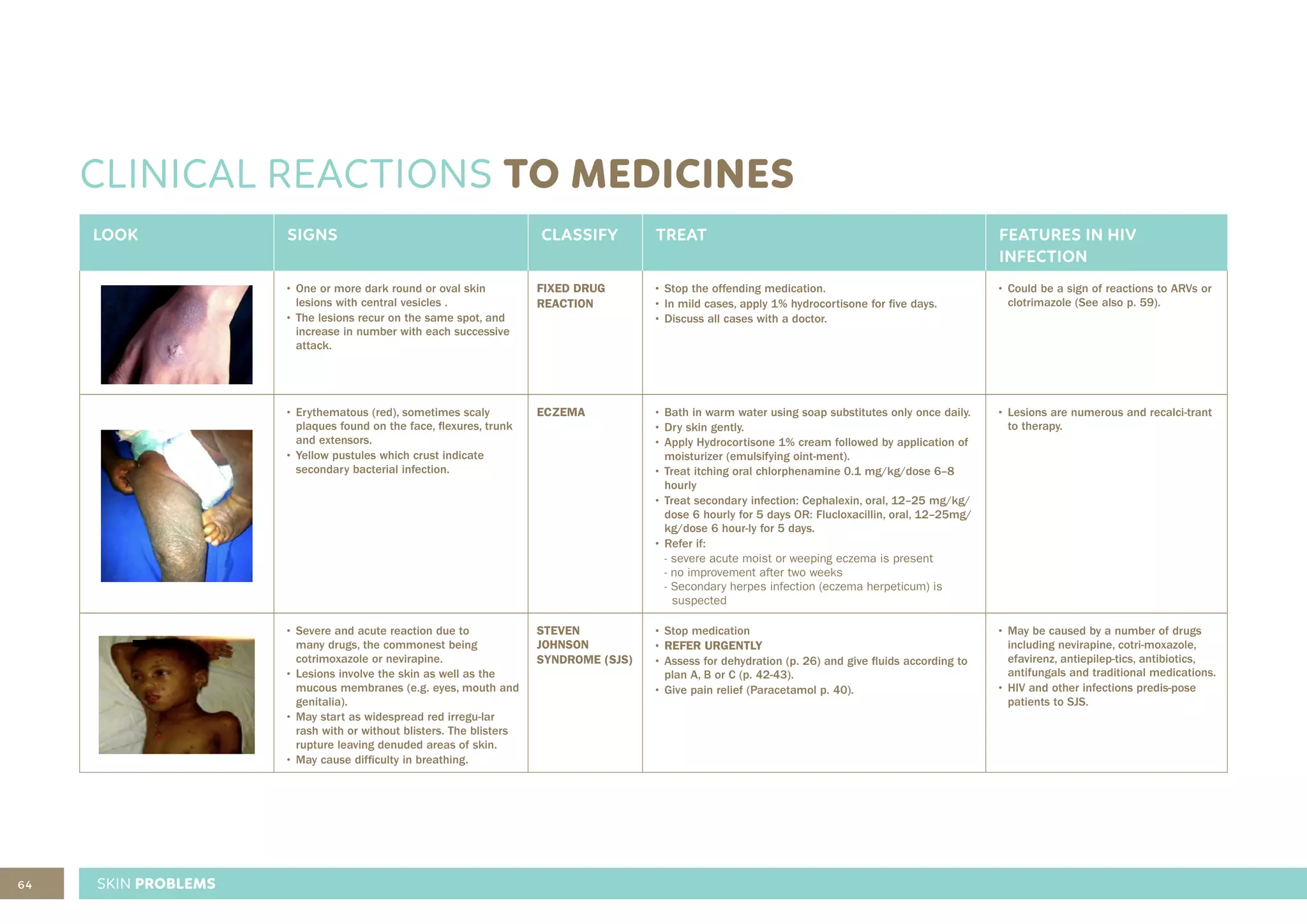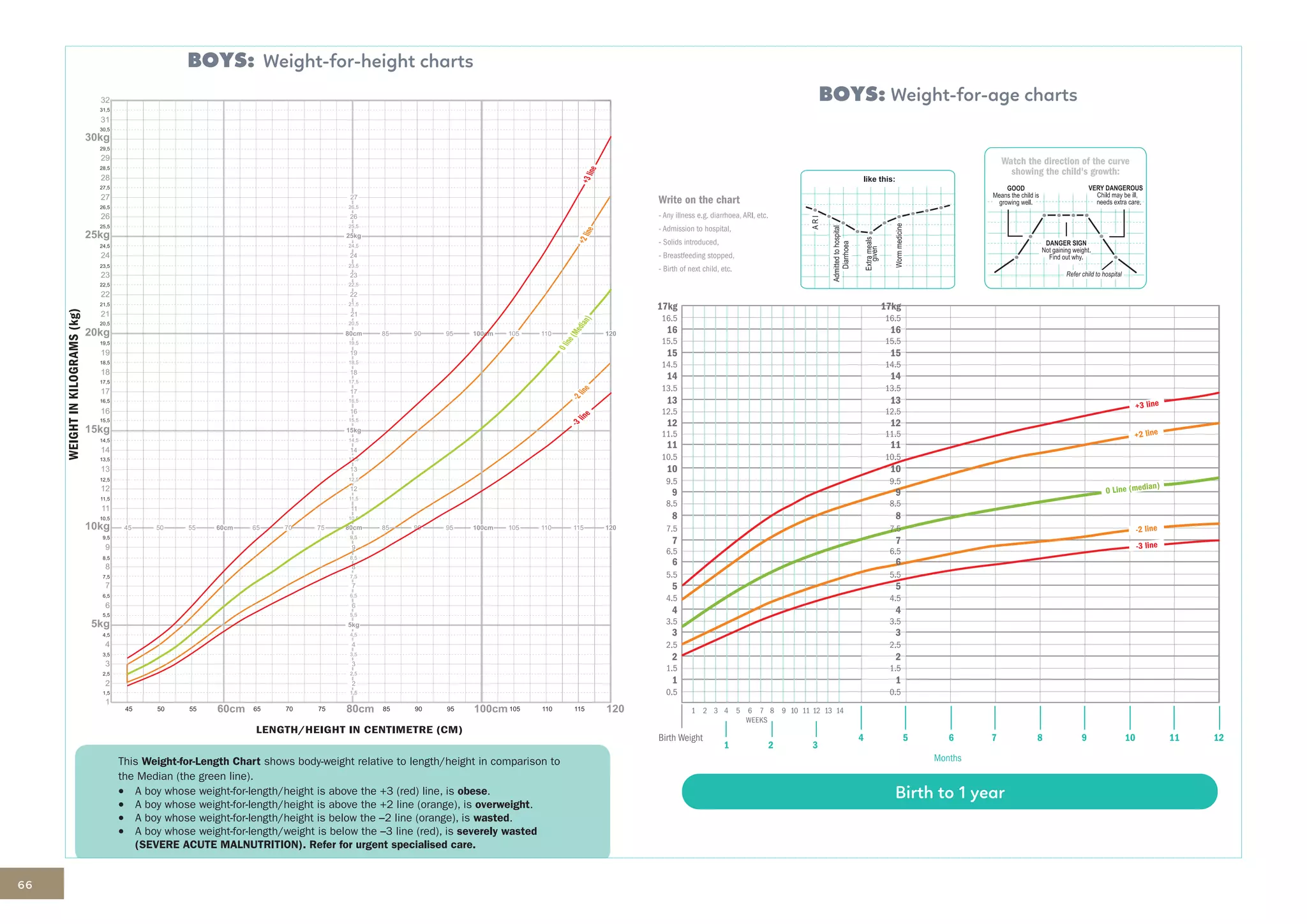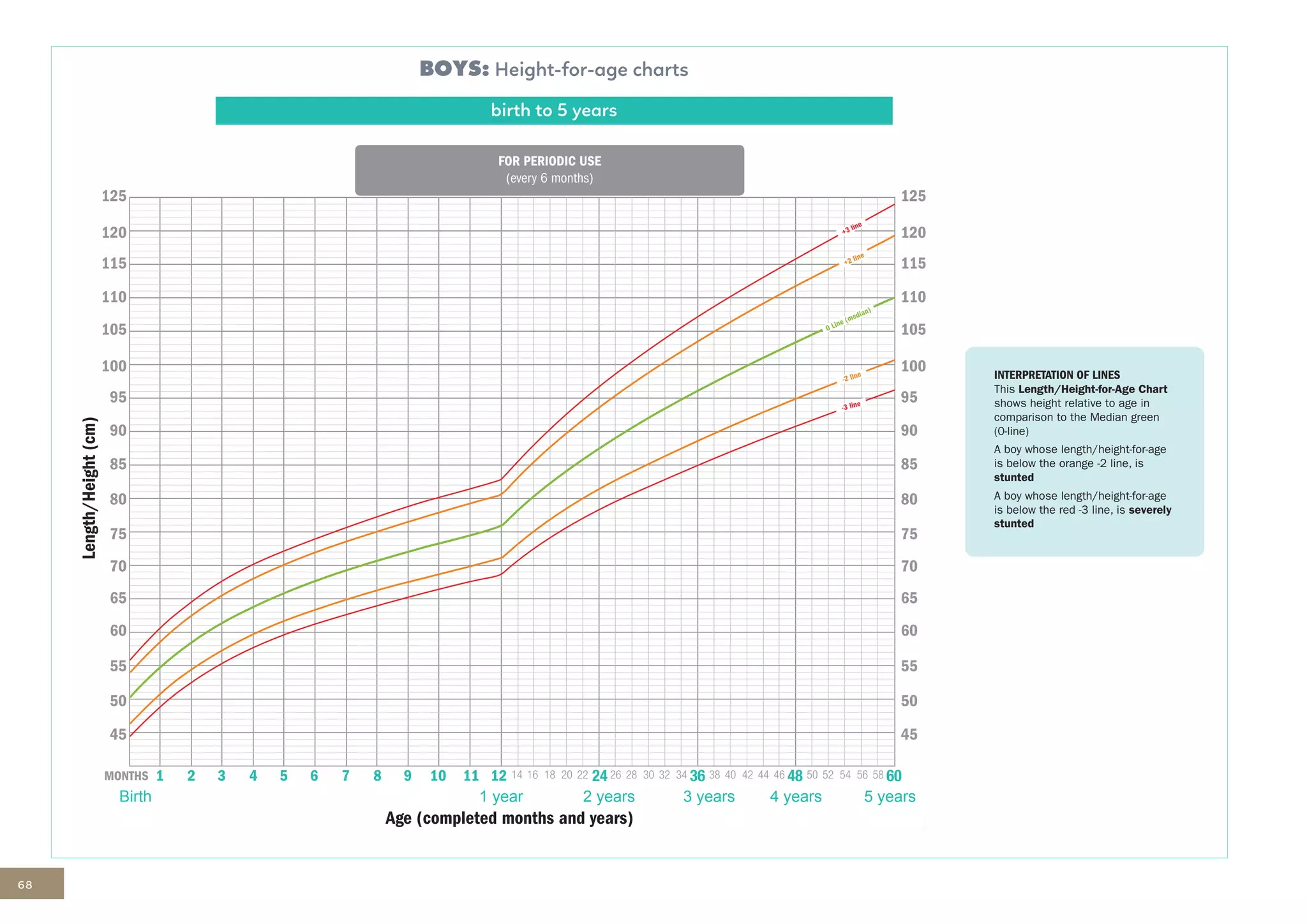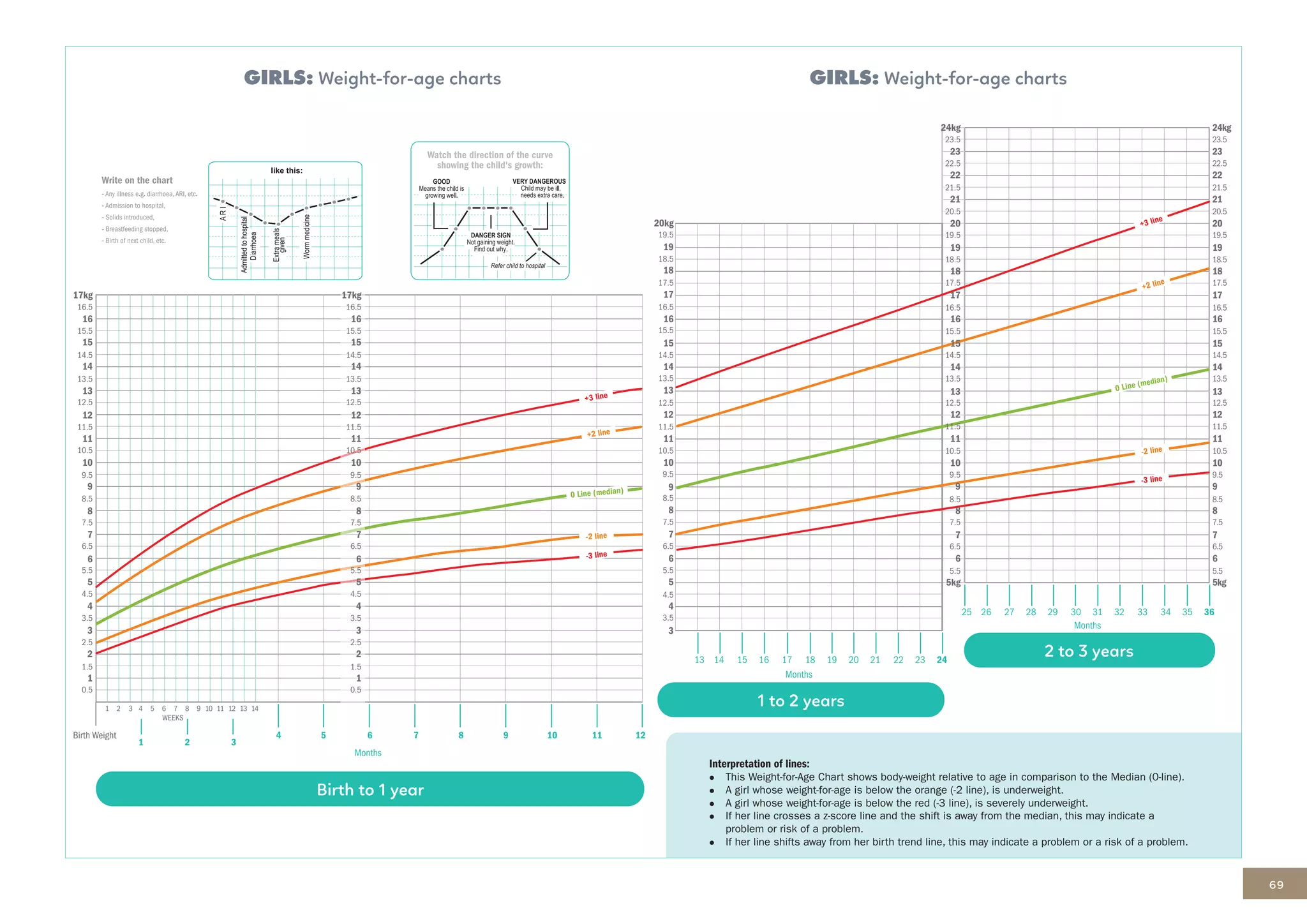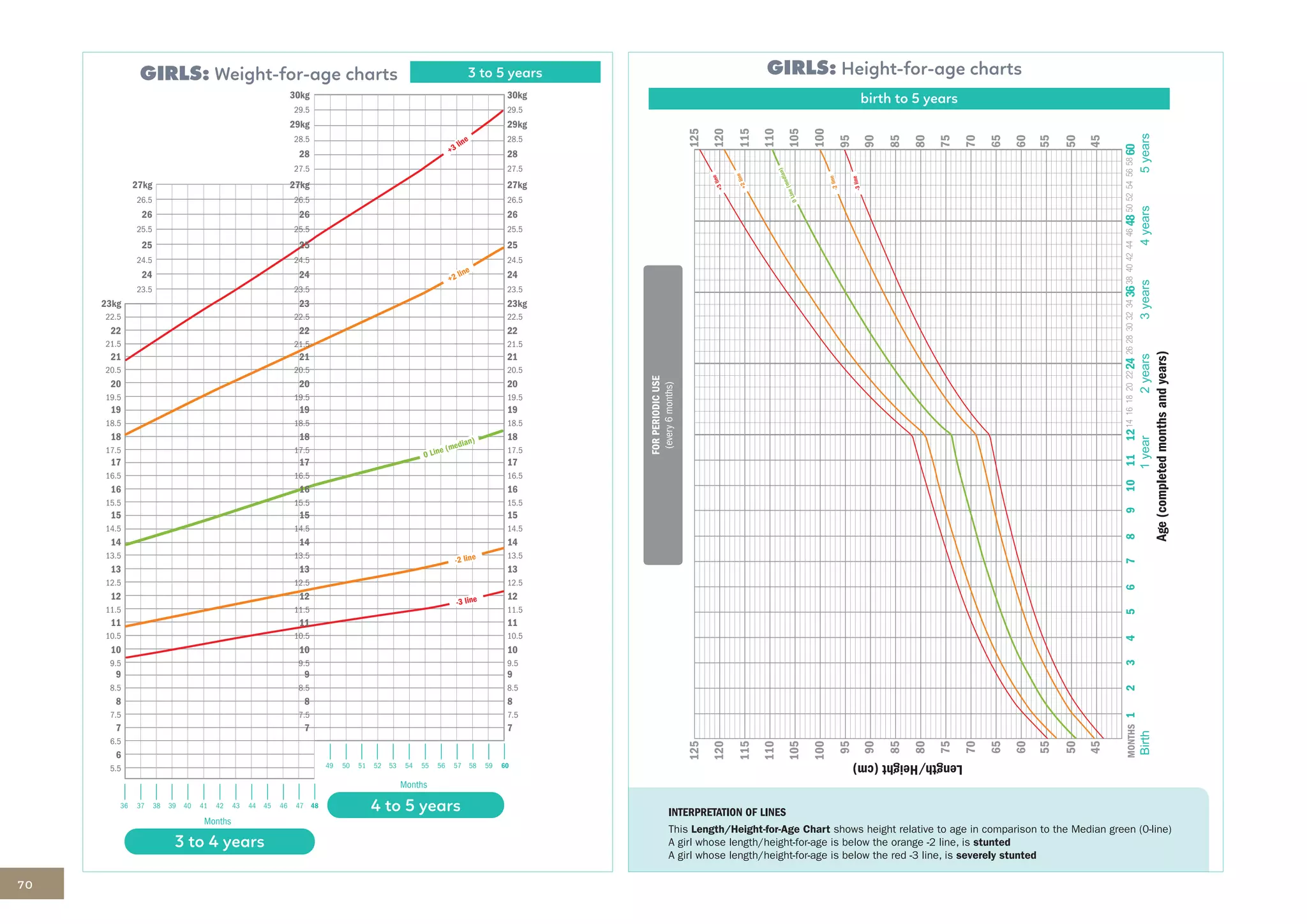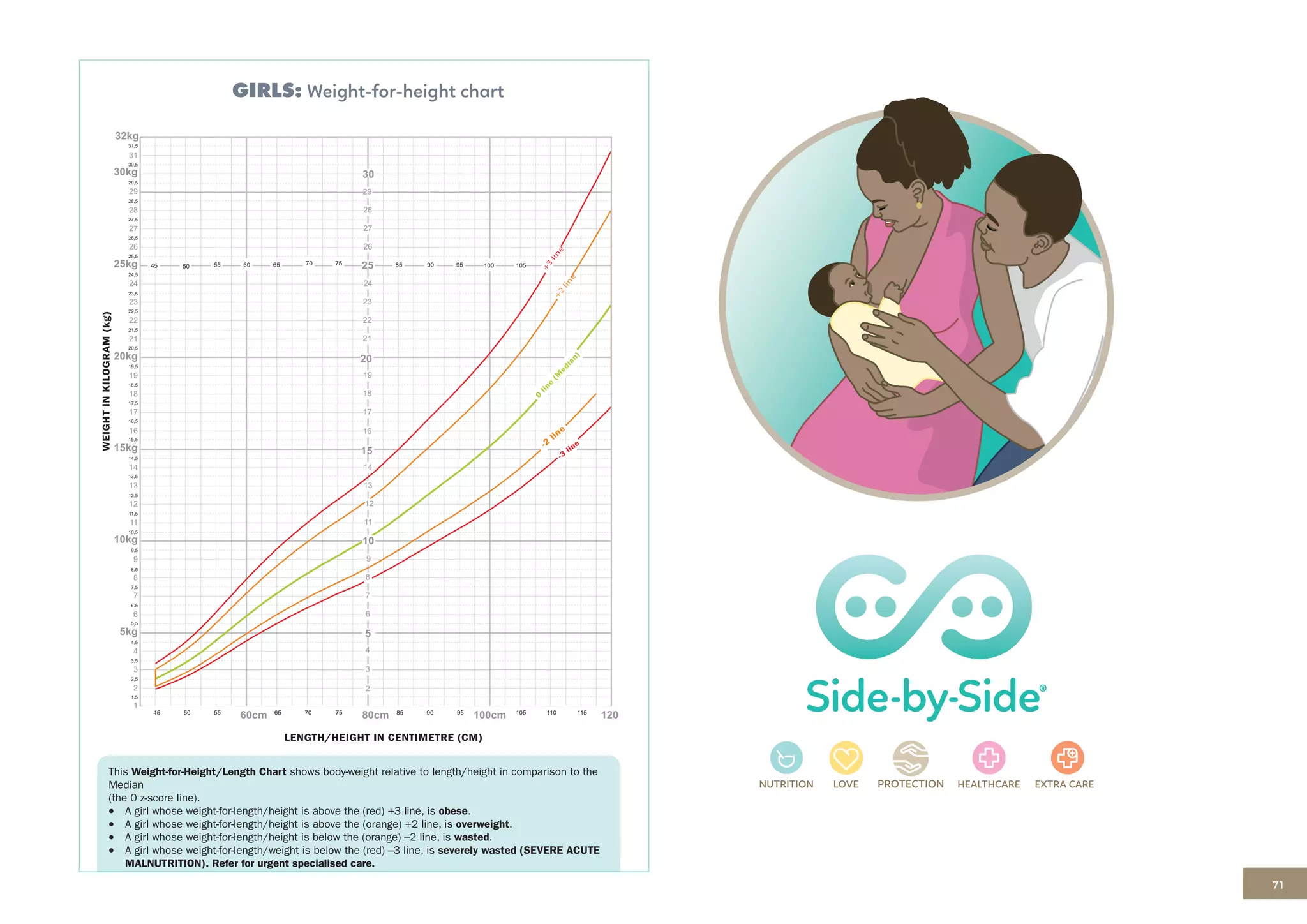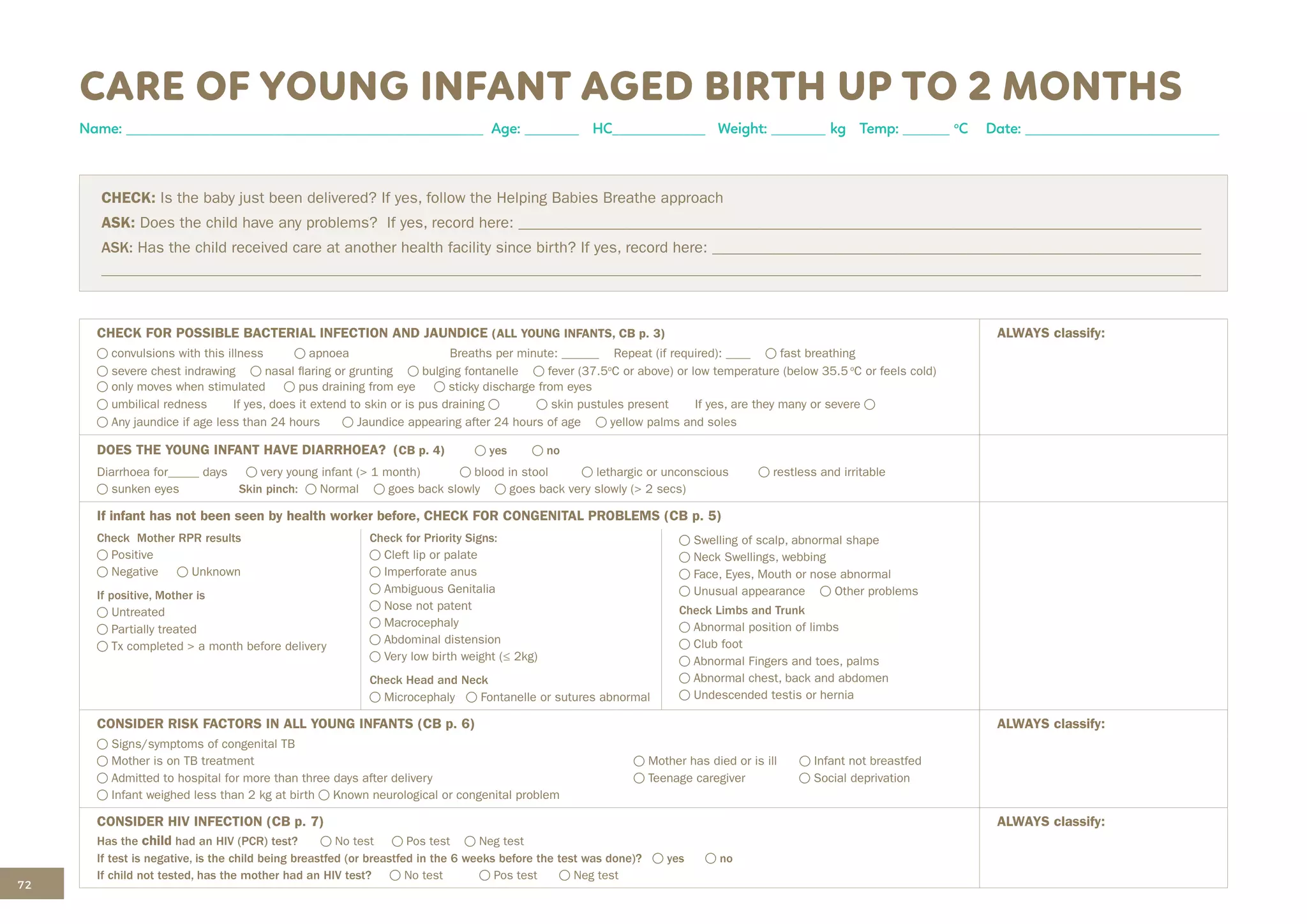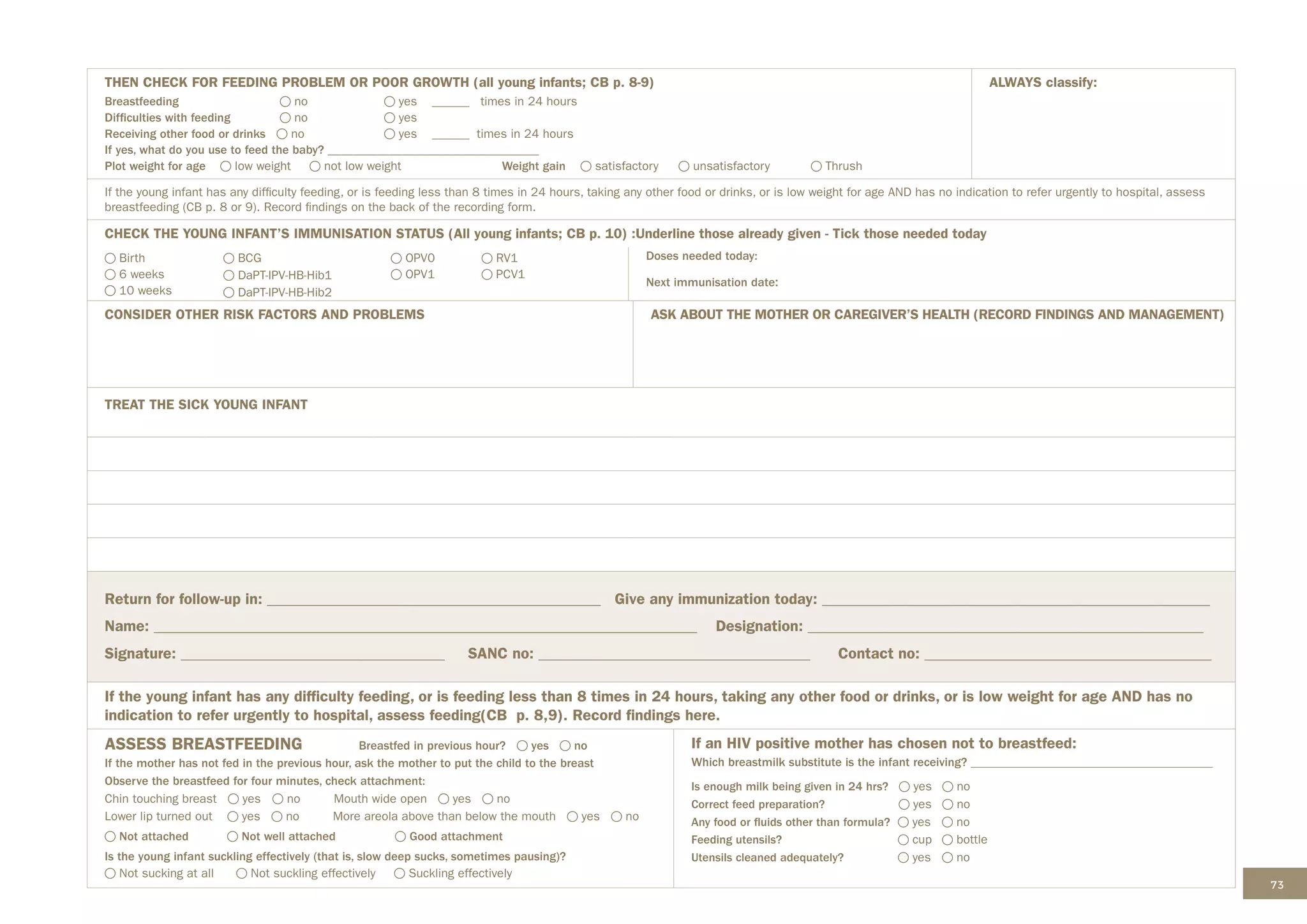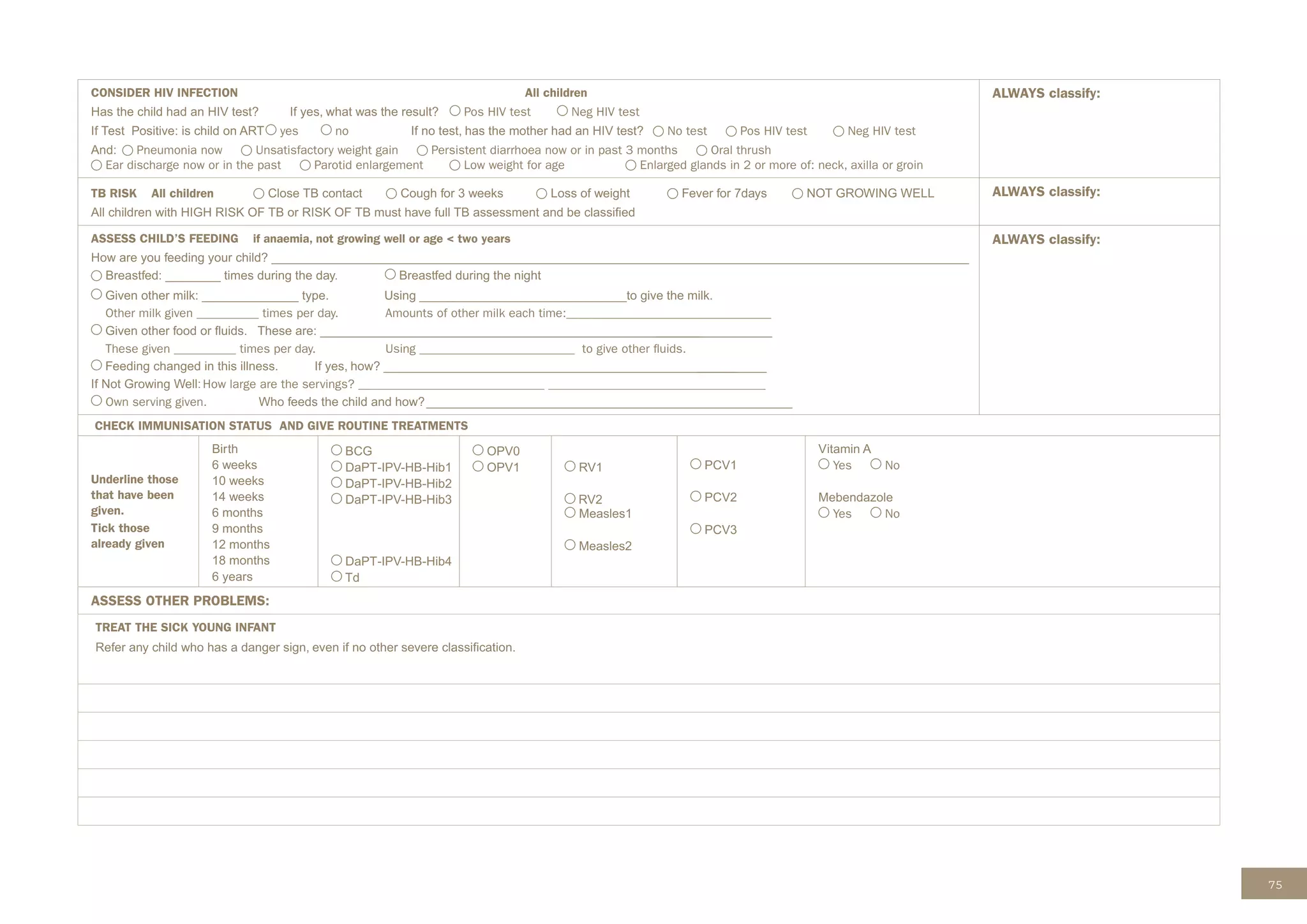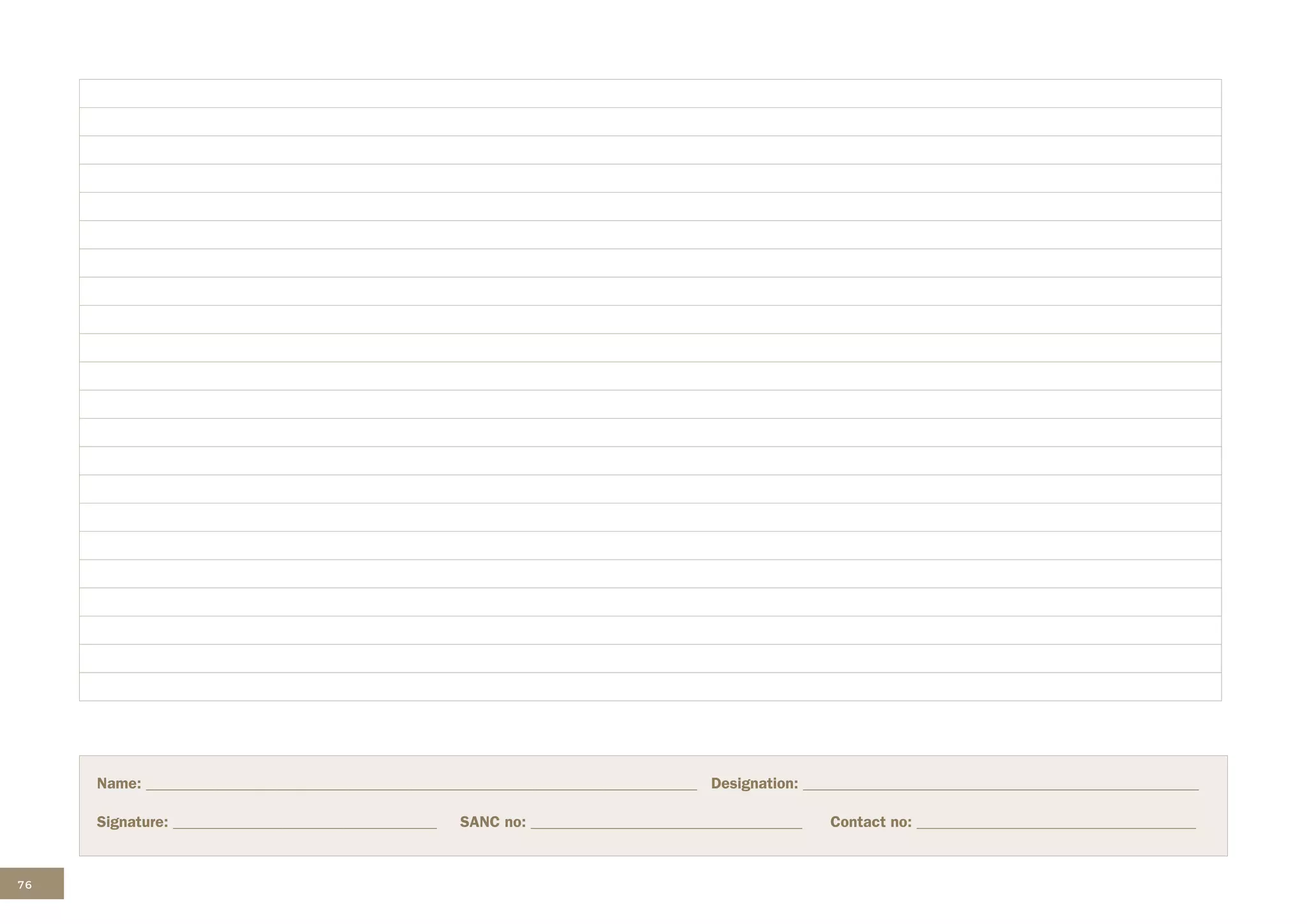This document provides guidance for healthcare workers on assessing and treating common childhood illnesses in young infants from birth to two months old using the Integrated Management of Childhood Illness (IMCI) process. It includes:
1. An overview of the IMCI process for young infants, including assessing for possible bacterial infection, jaundice, diarrhea, and other issues.
2. Details on classifying and treating illnesses like possible bacterial infection, local bacterial infections, jaundice, and diarrhea.
3. Instructions for counseling caregivers on home care, follow-up care, breastfeeding support, and other topics.
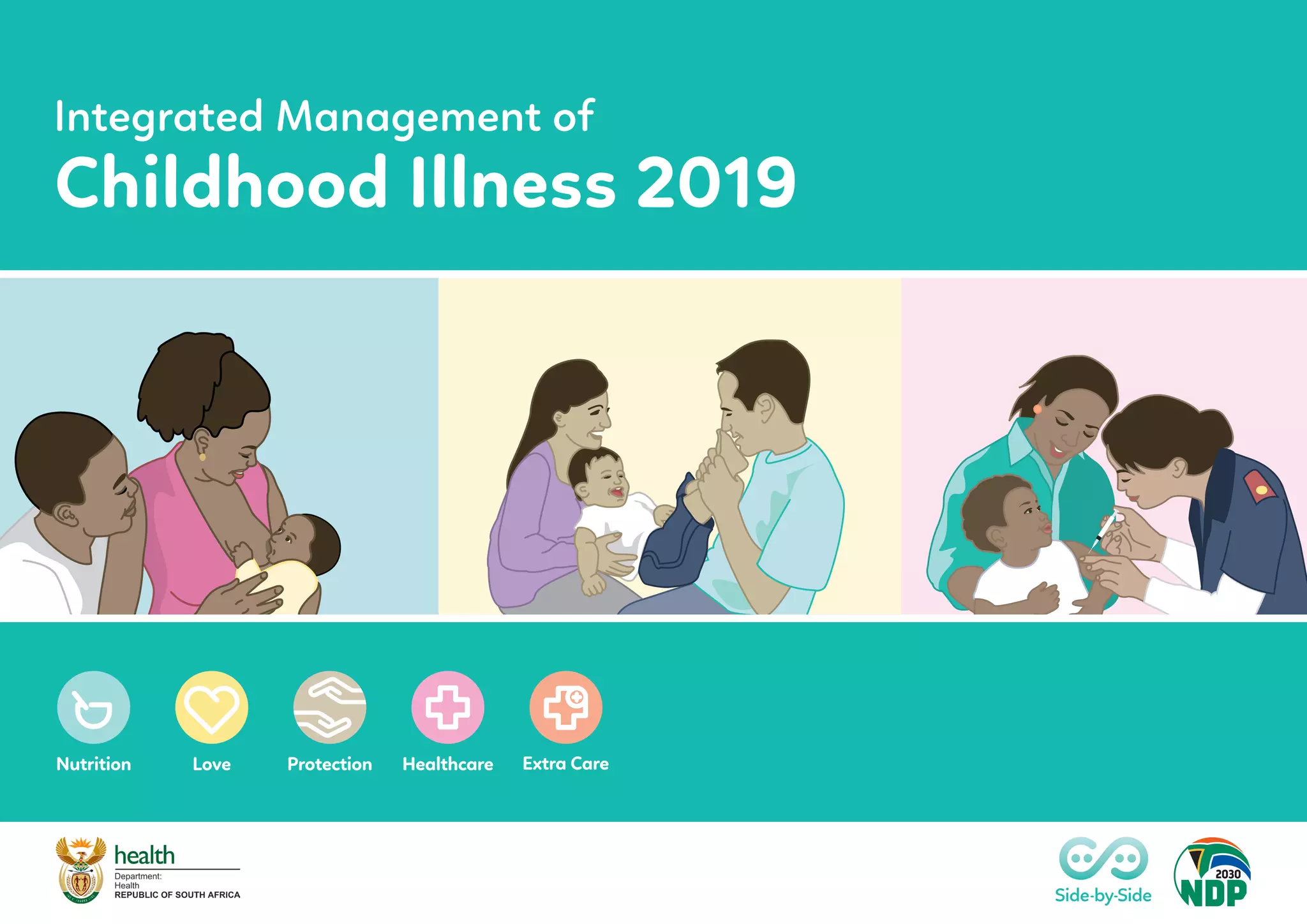

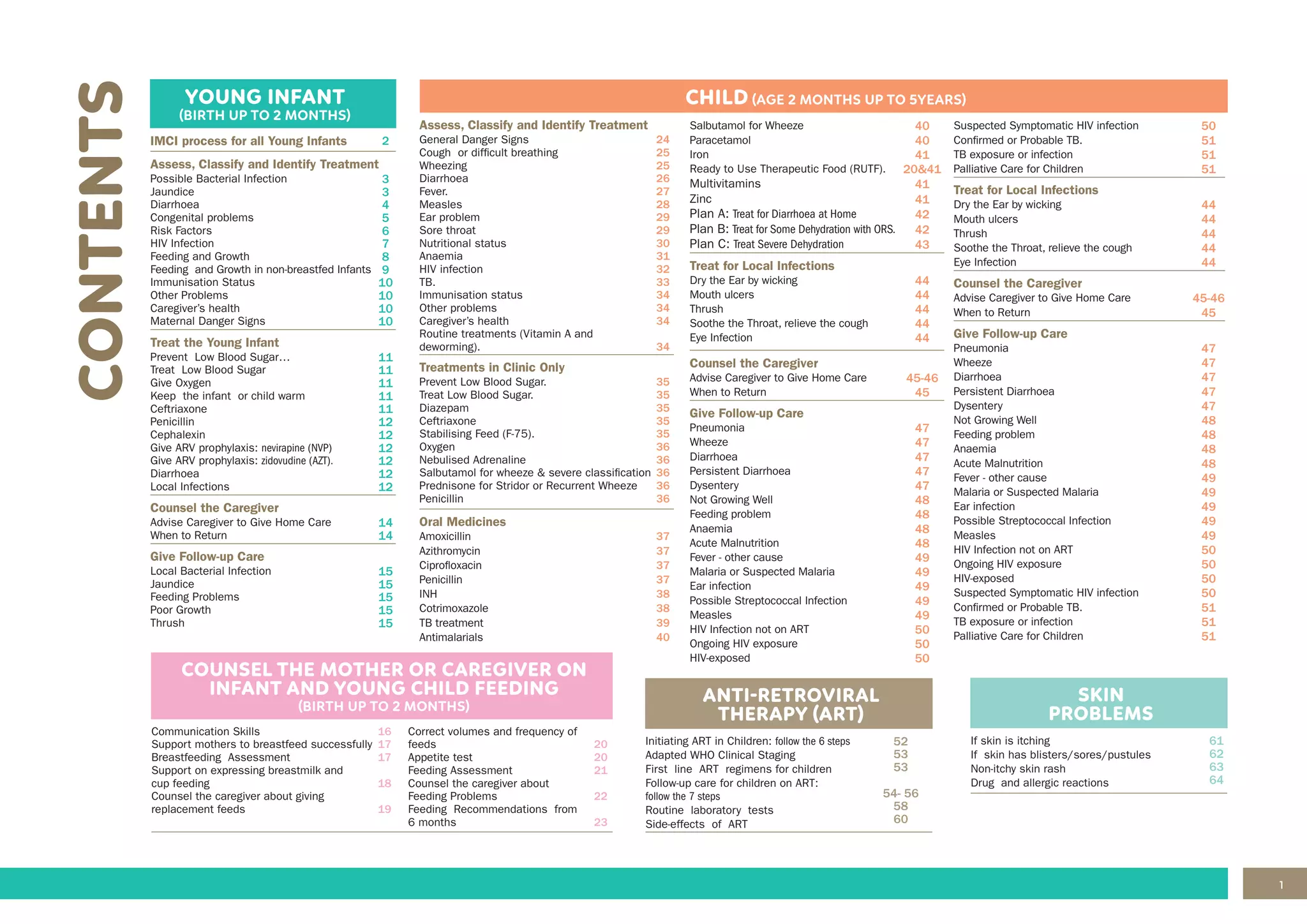
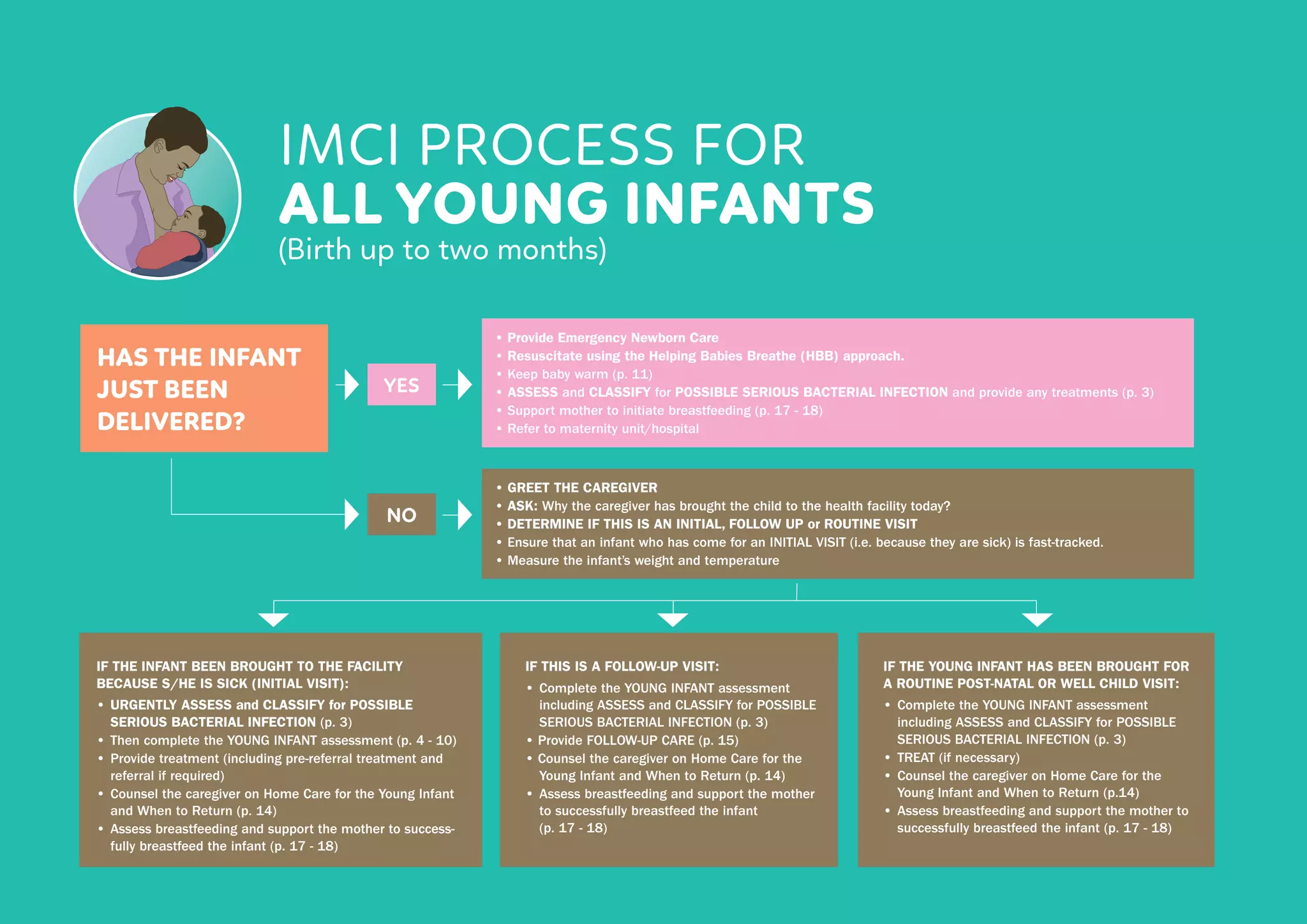
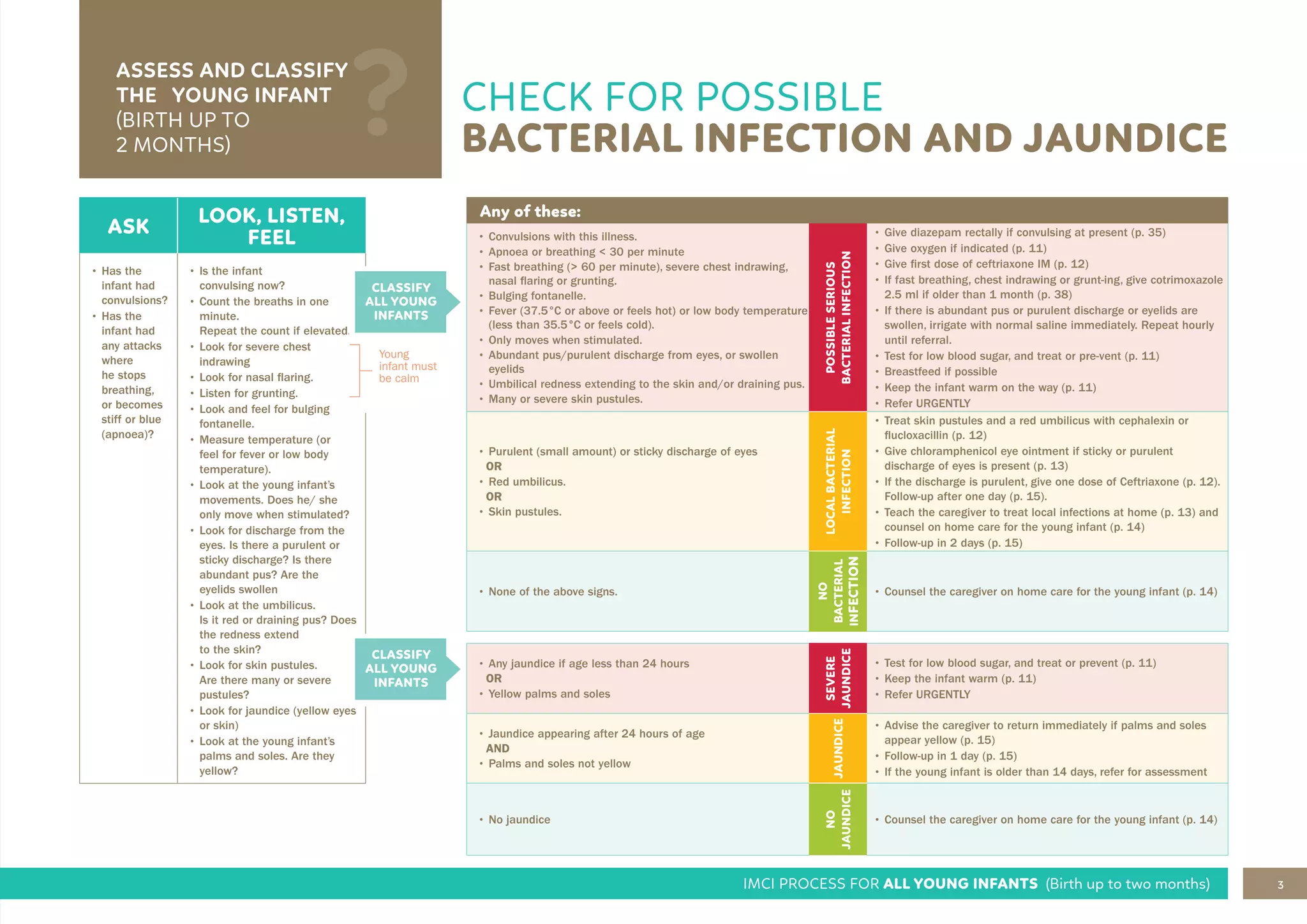
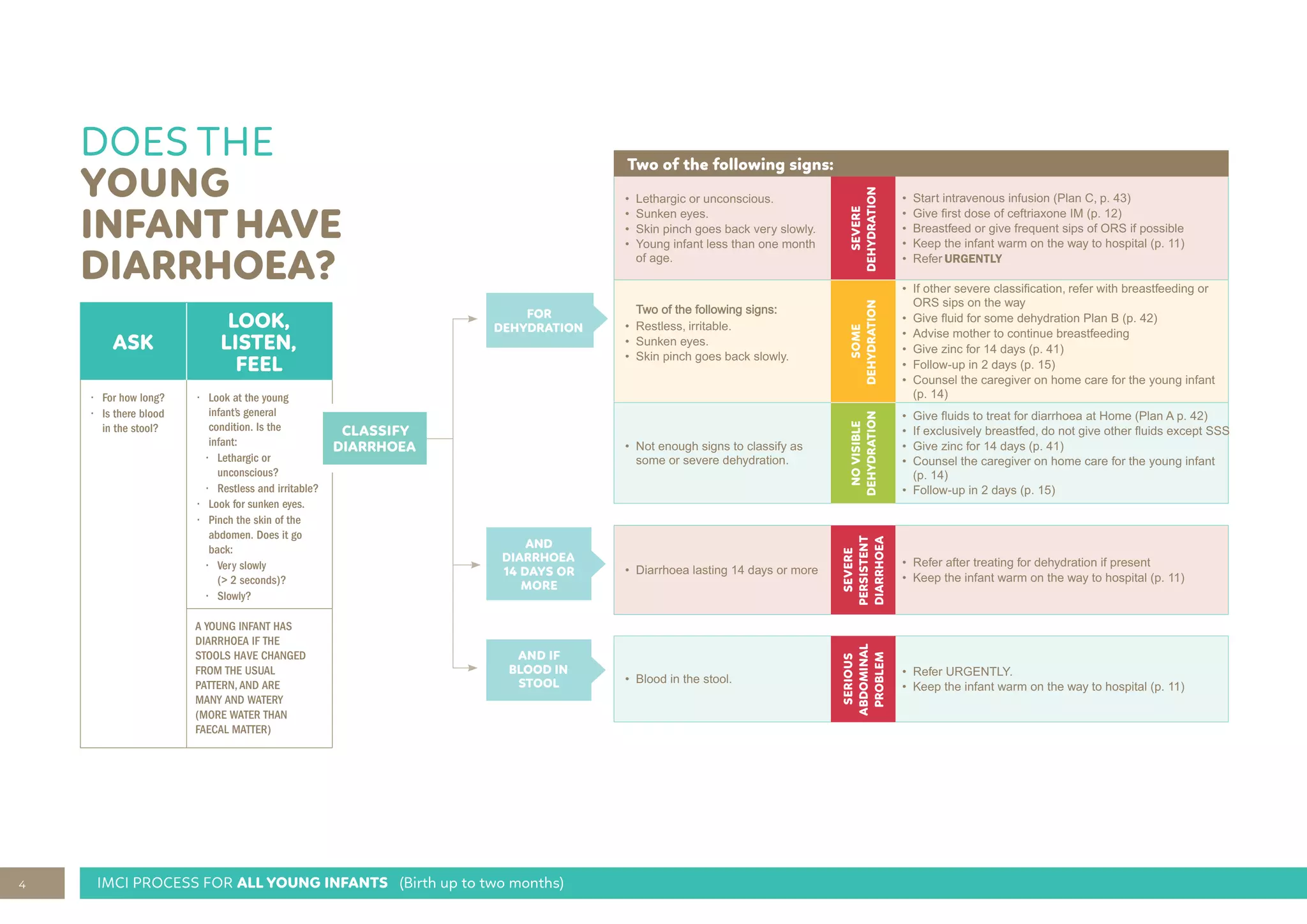
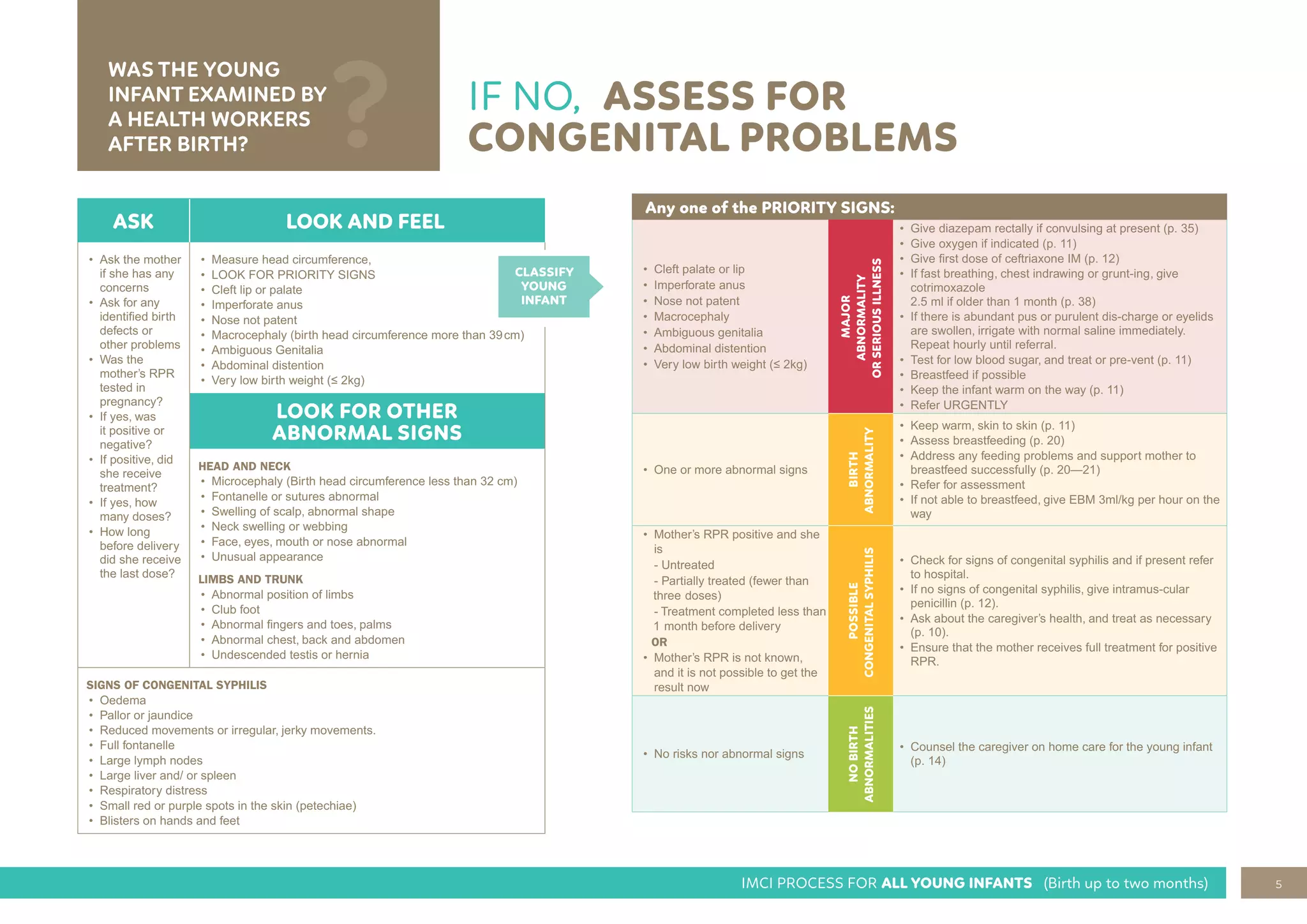
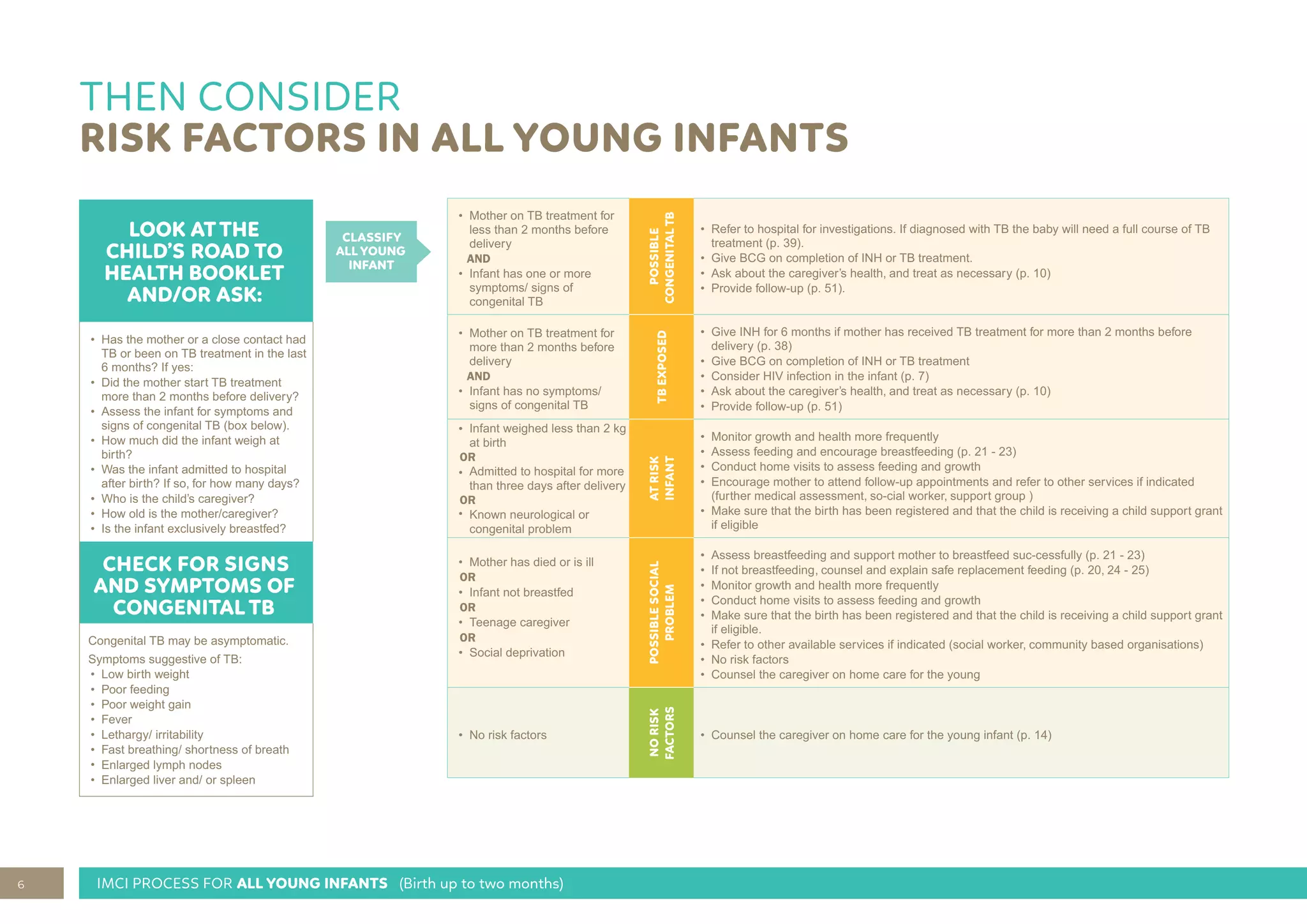
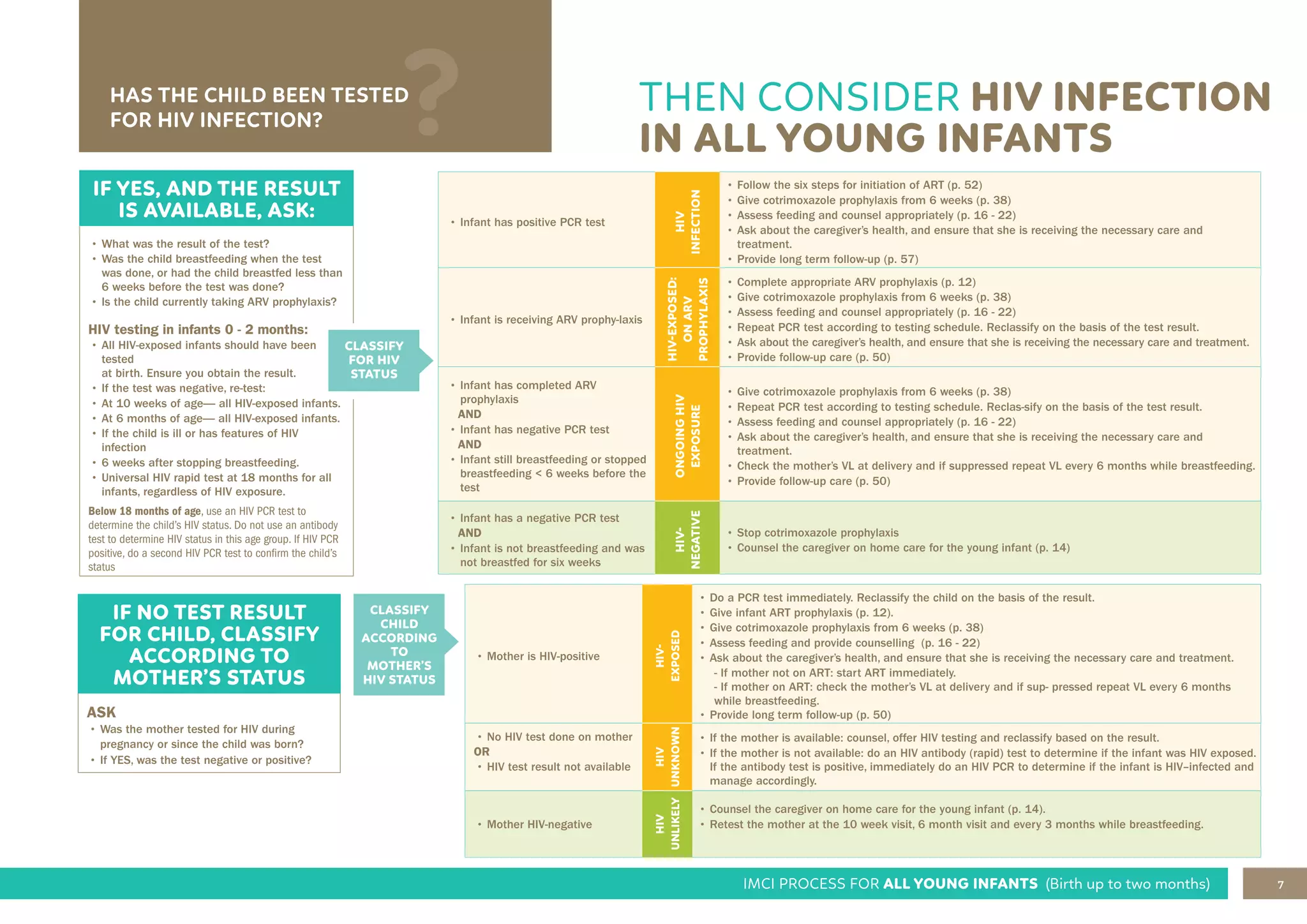
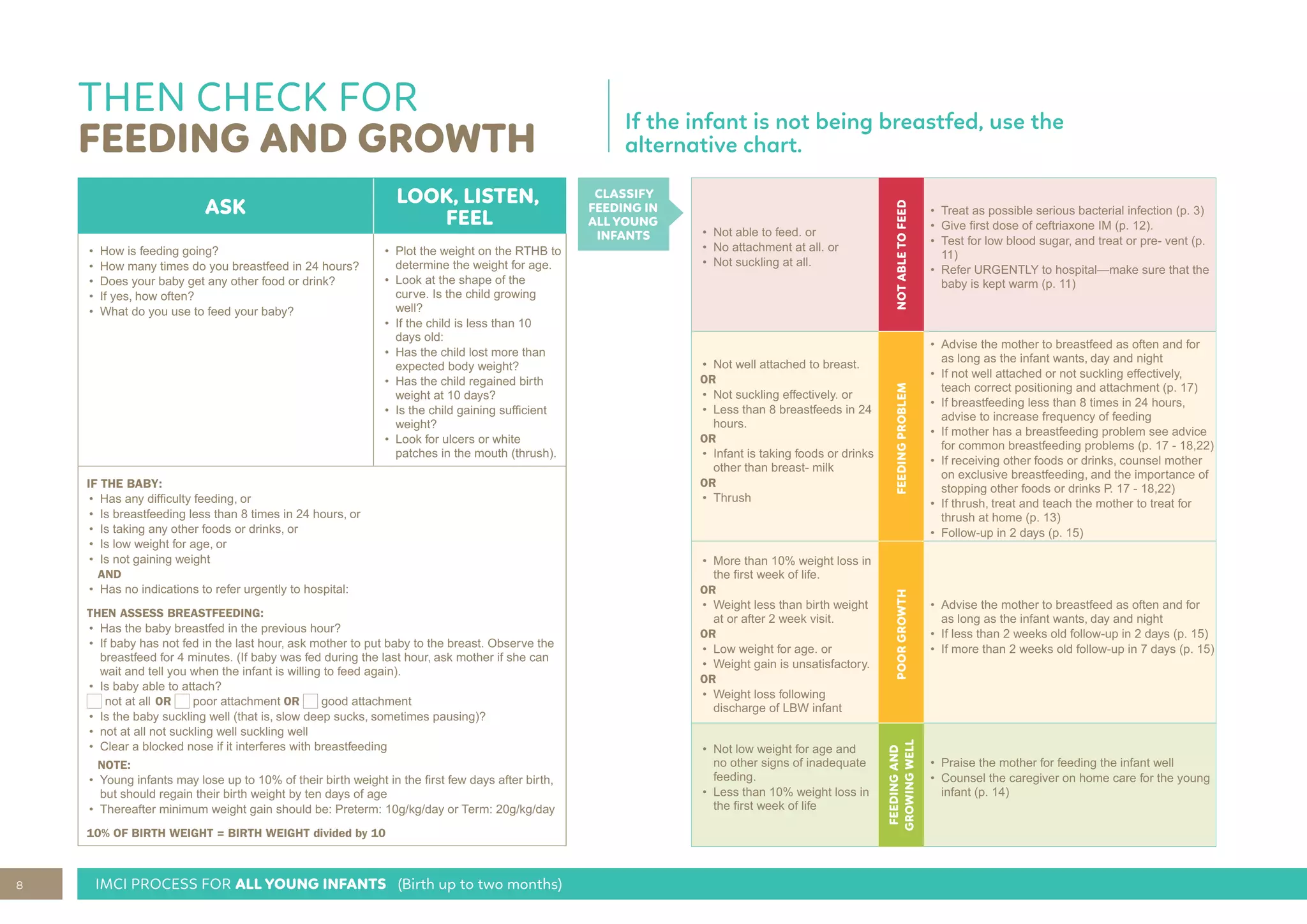
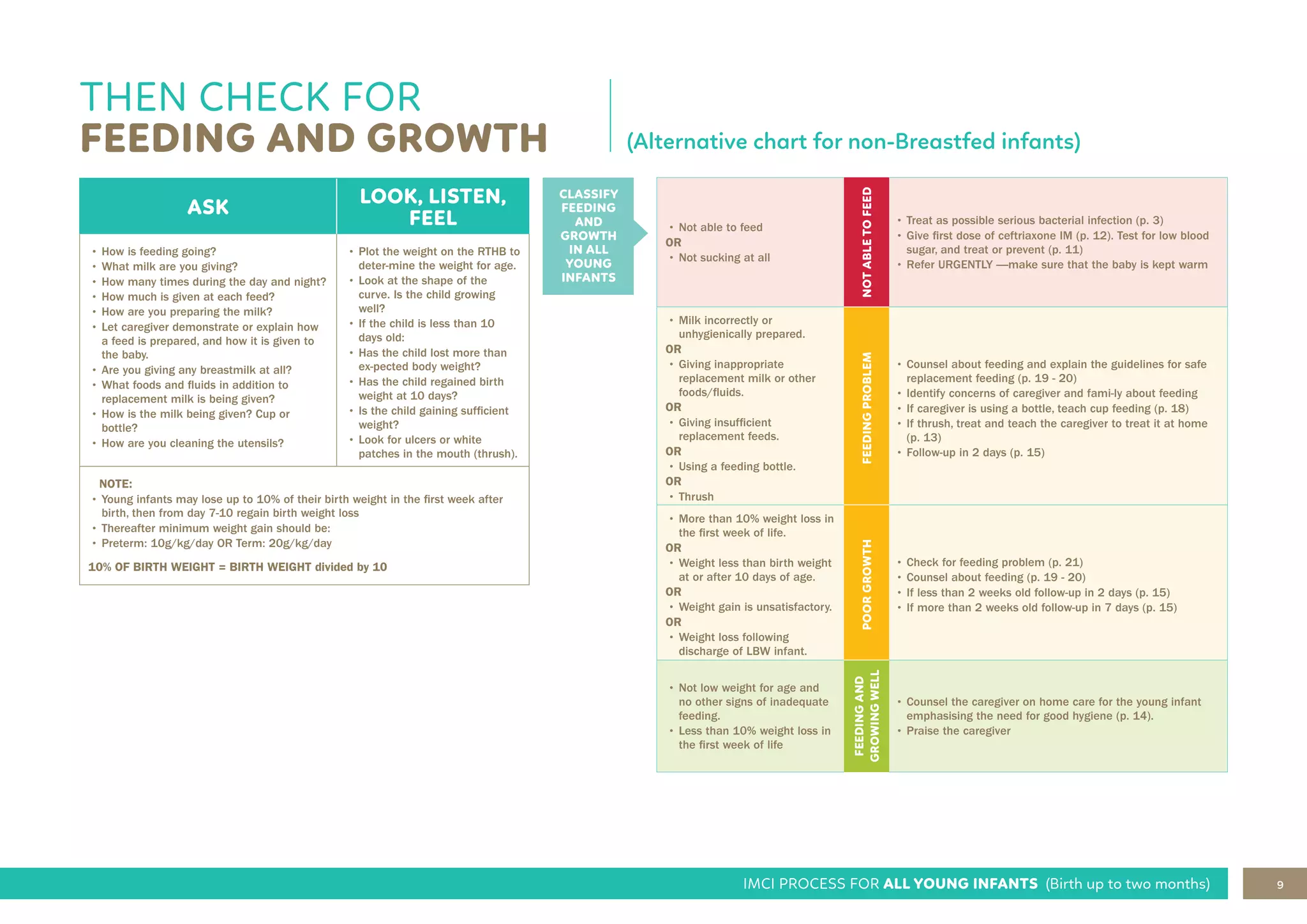
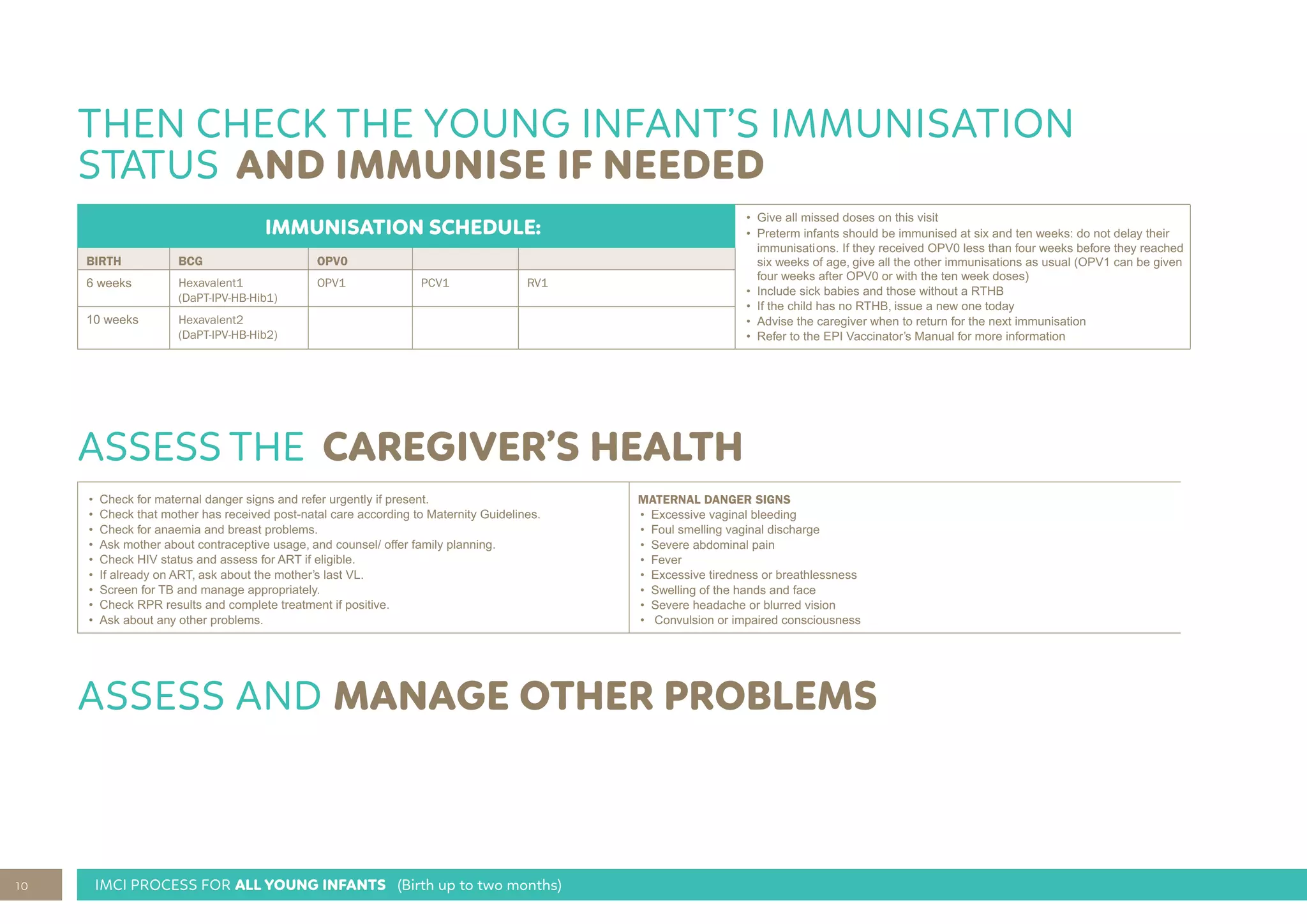

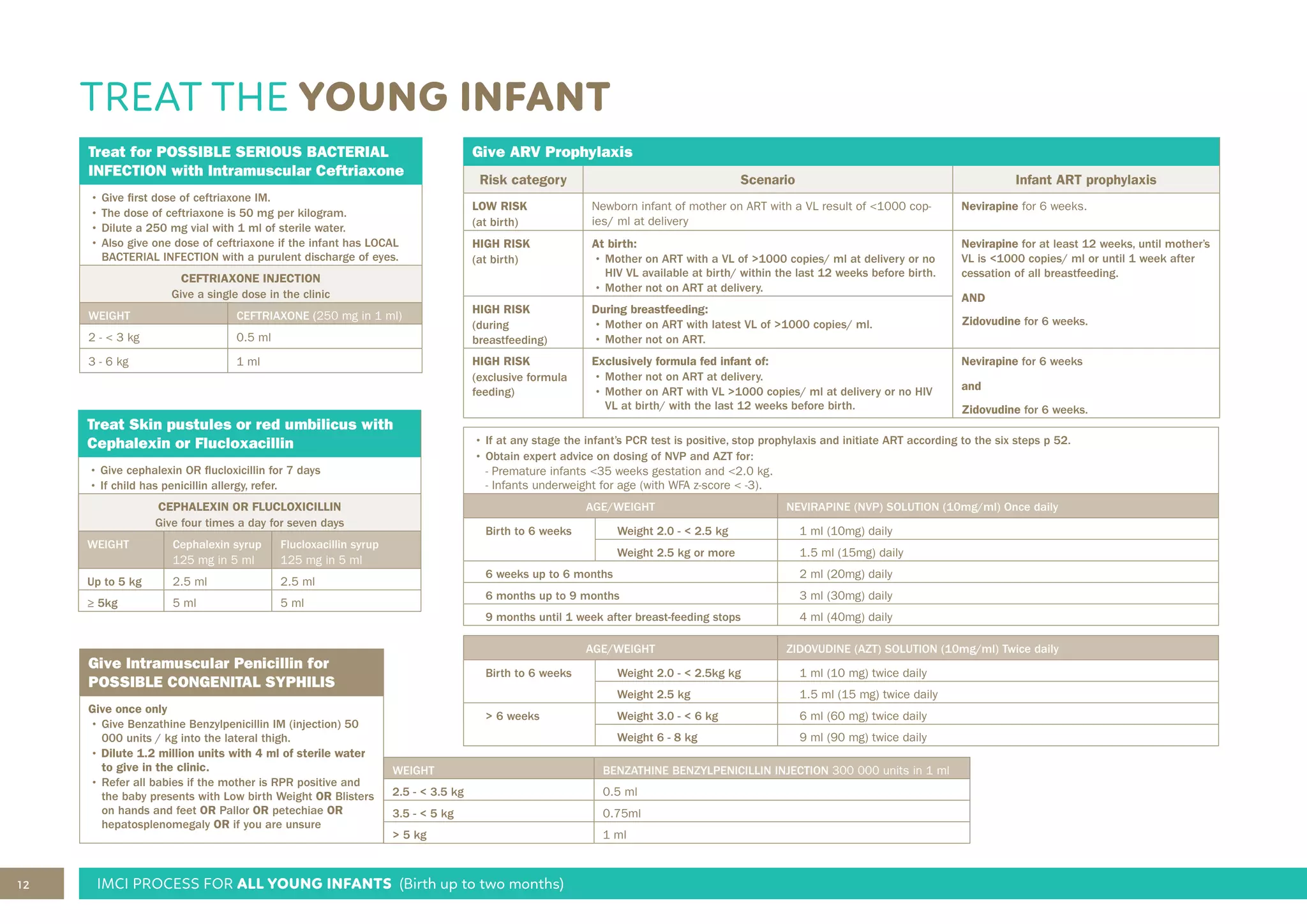
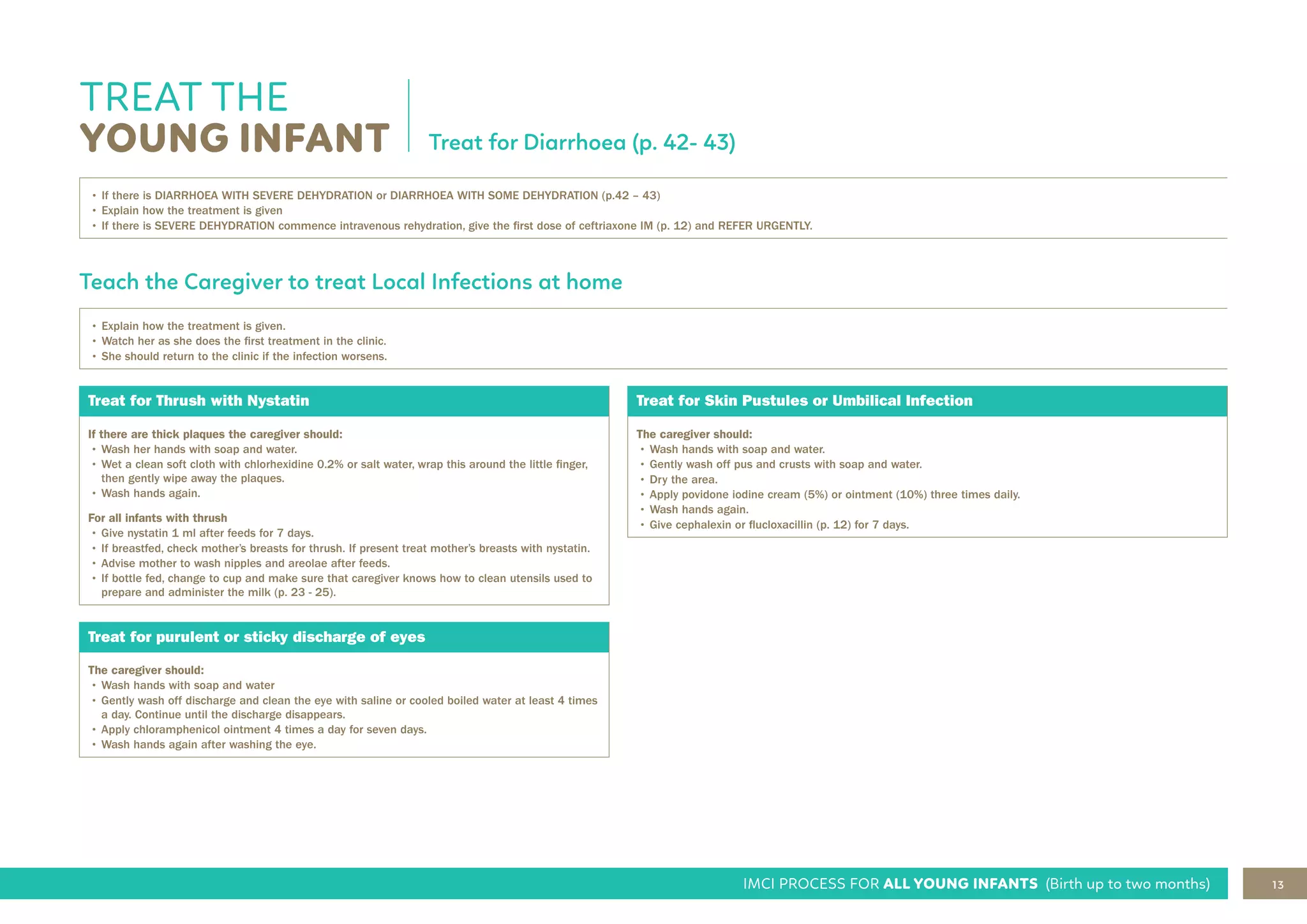
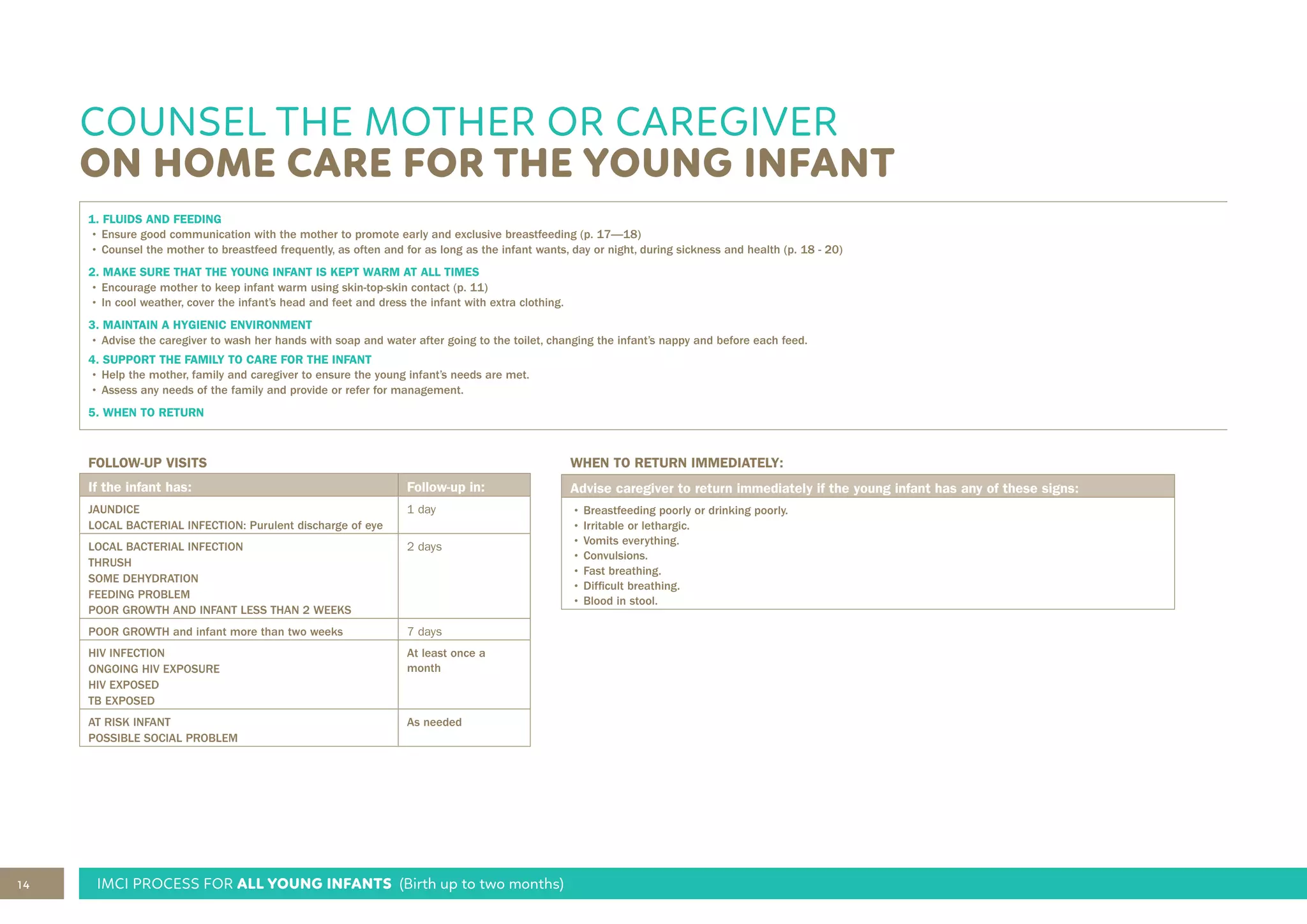
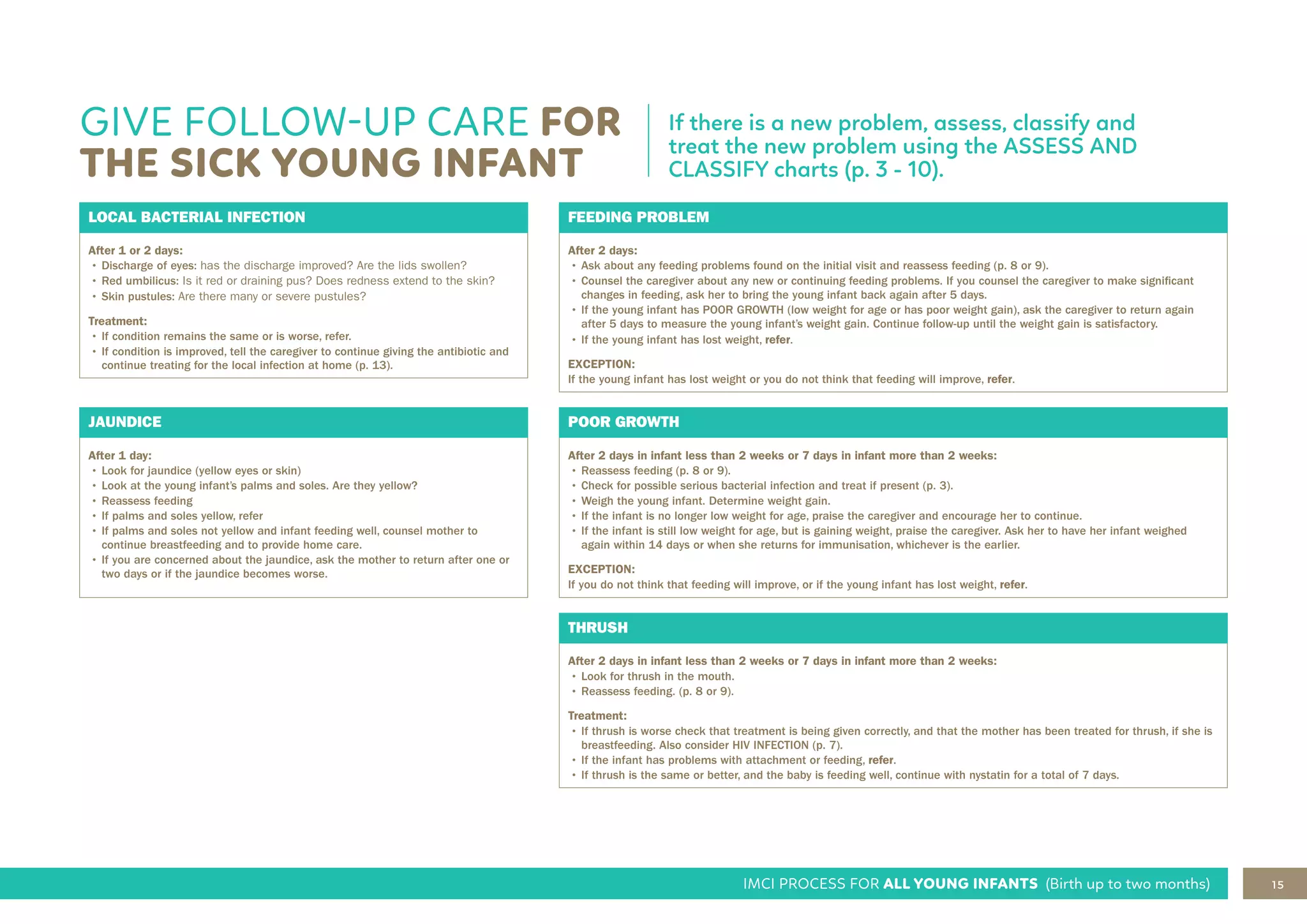
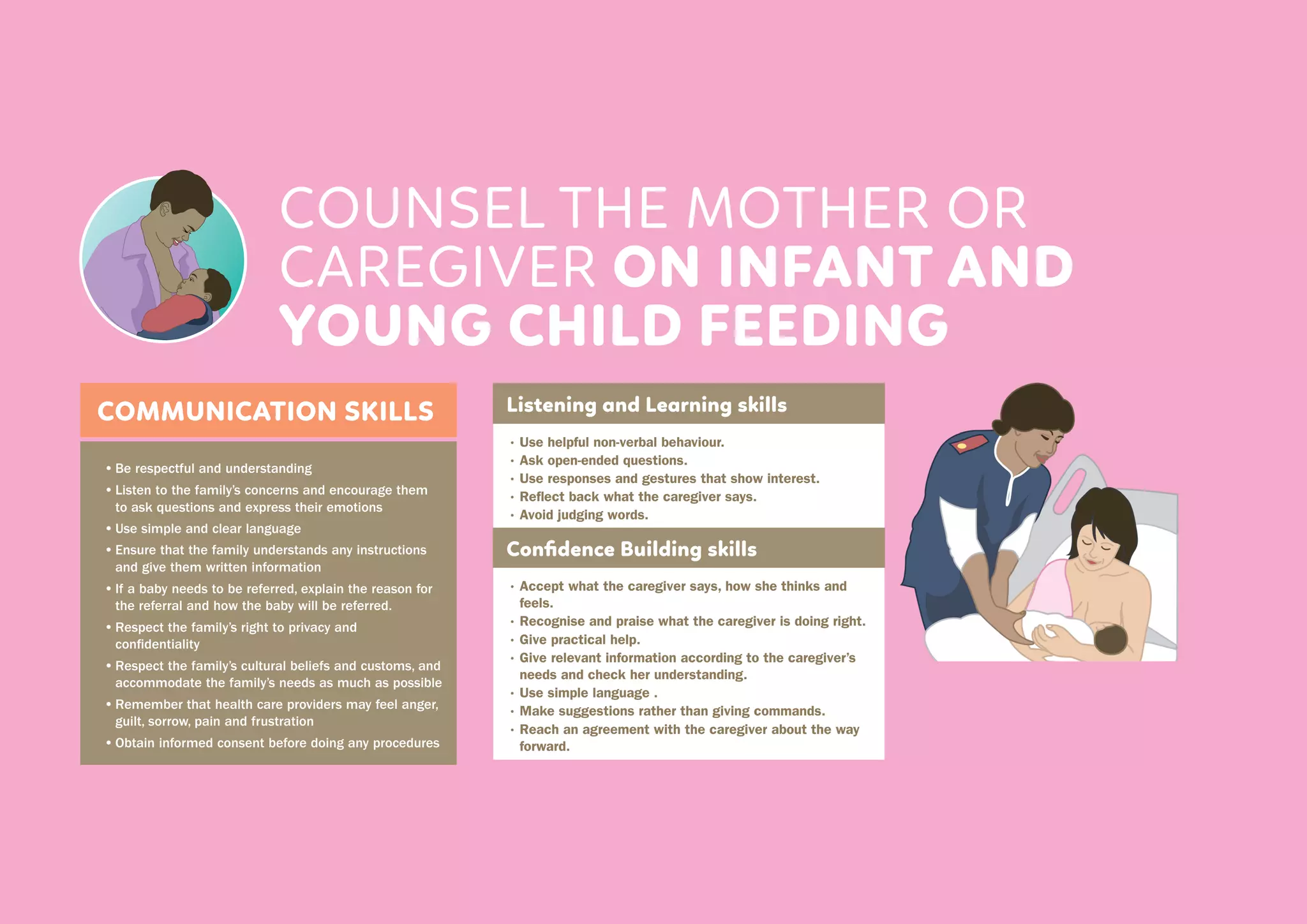
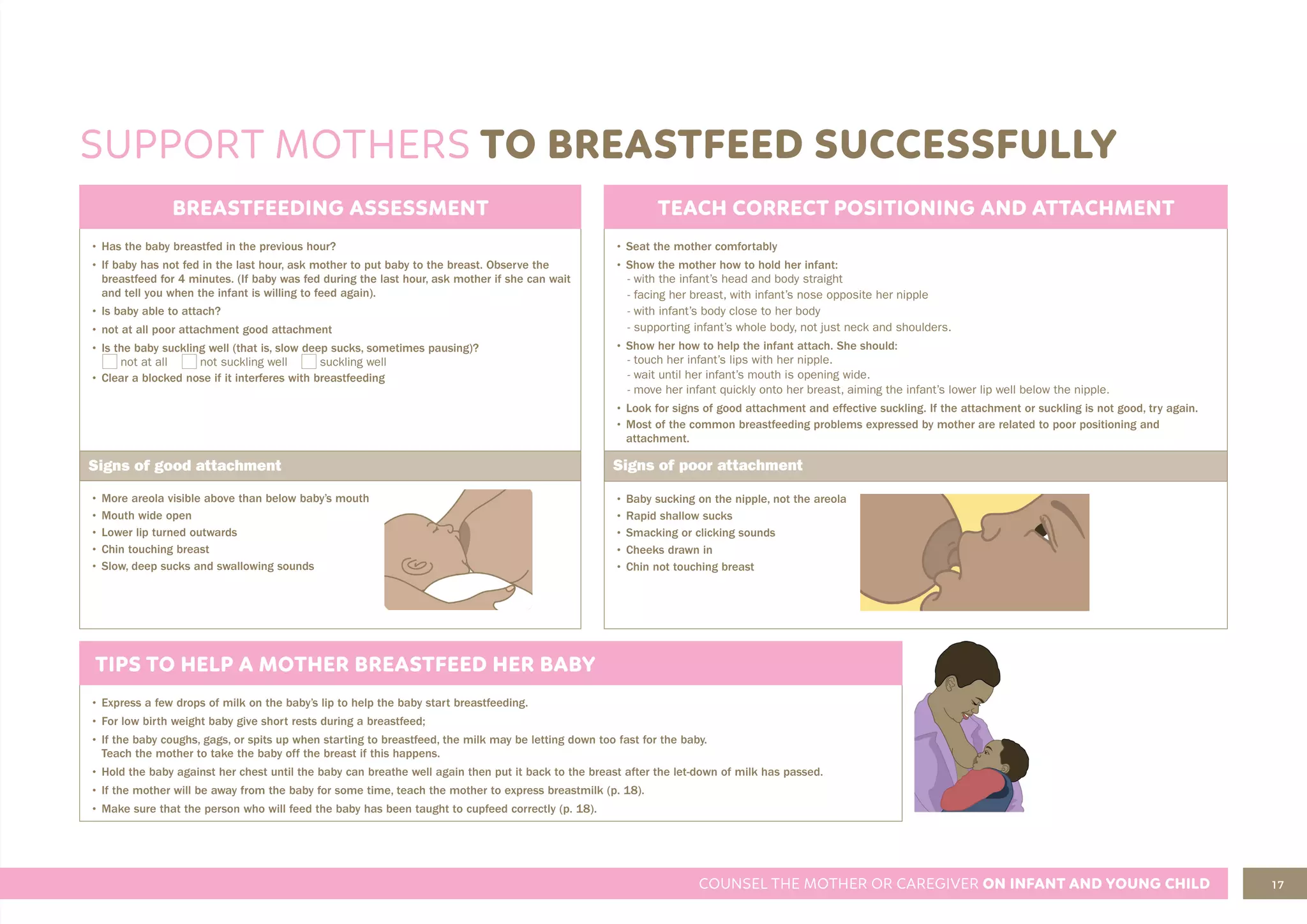
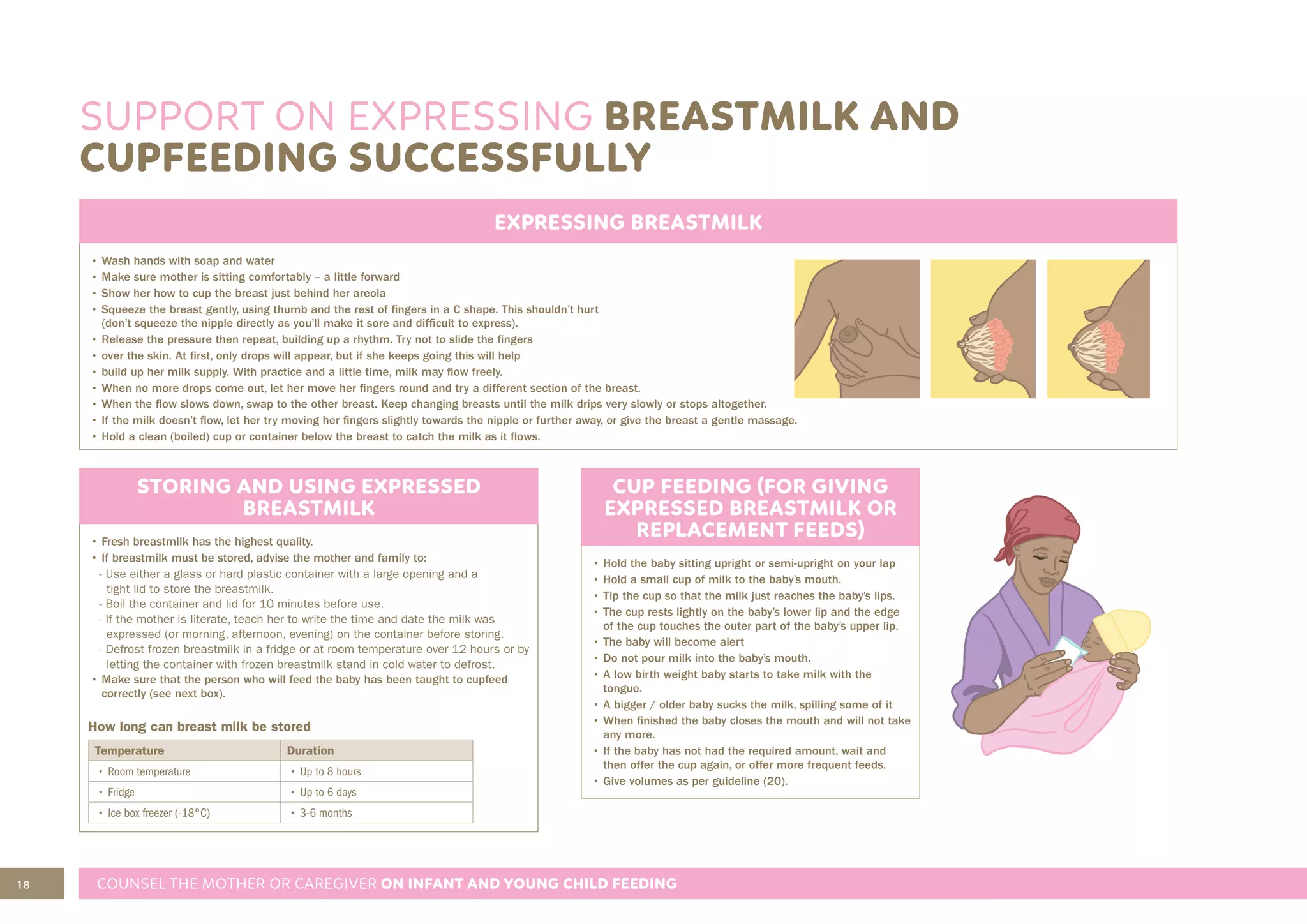
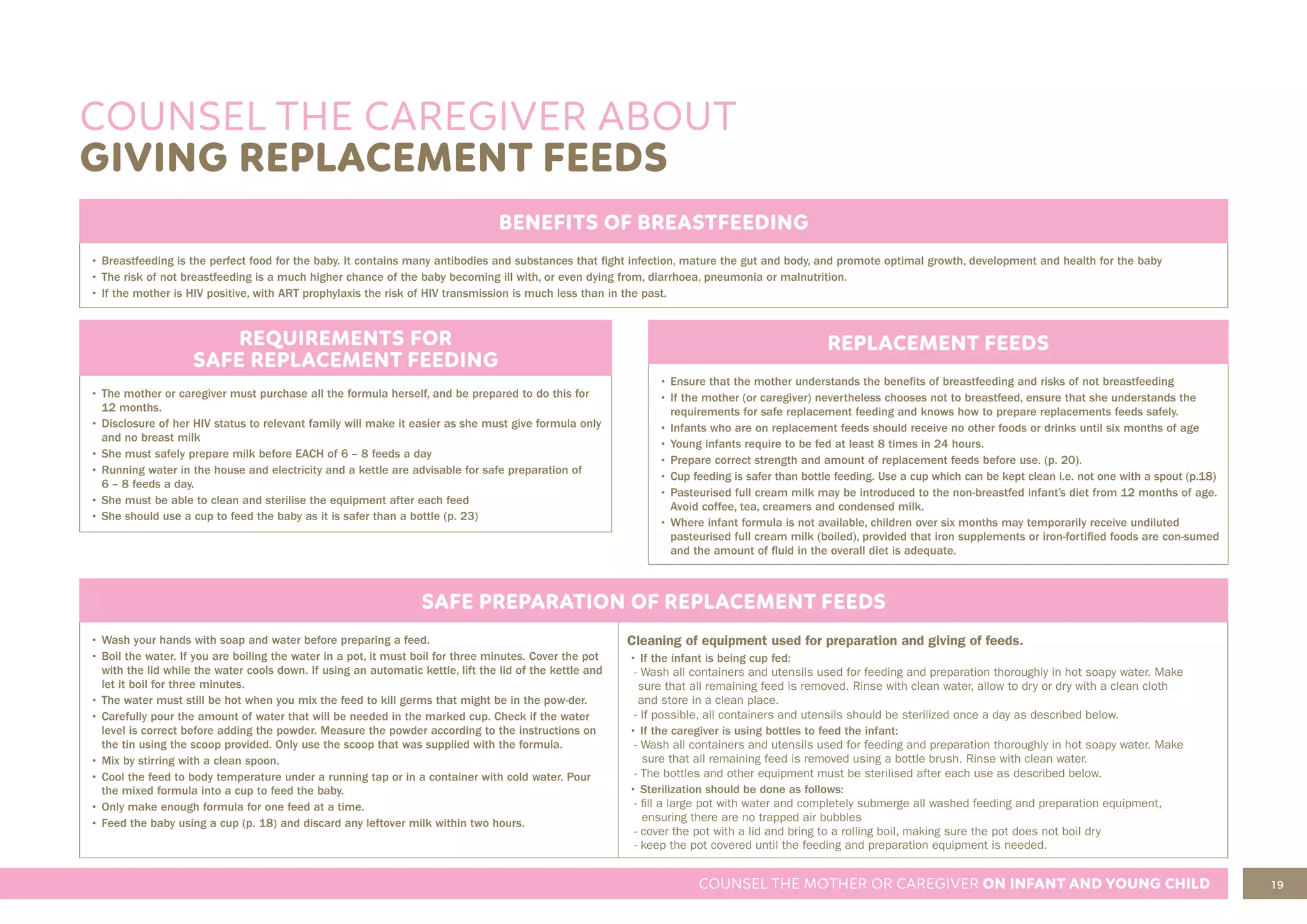

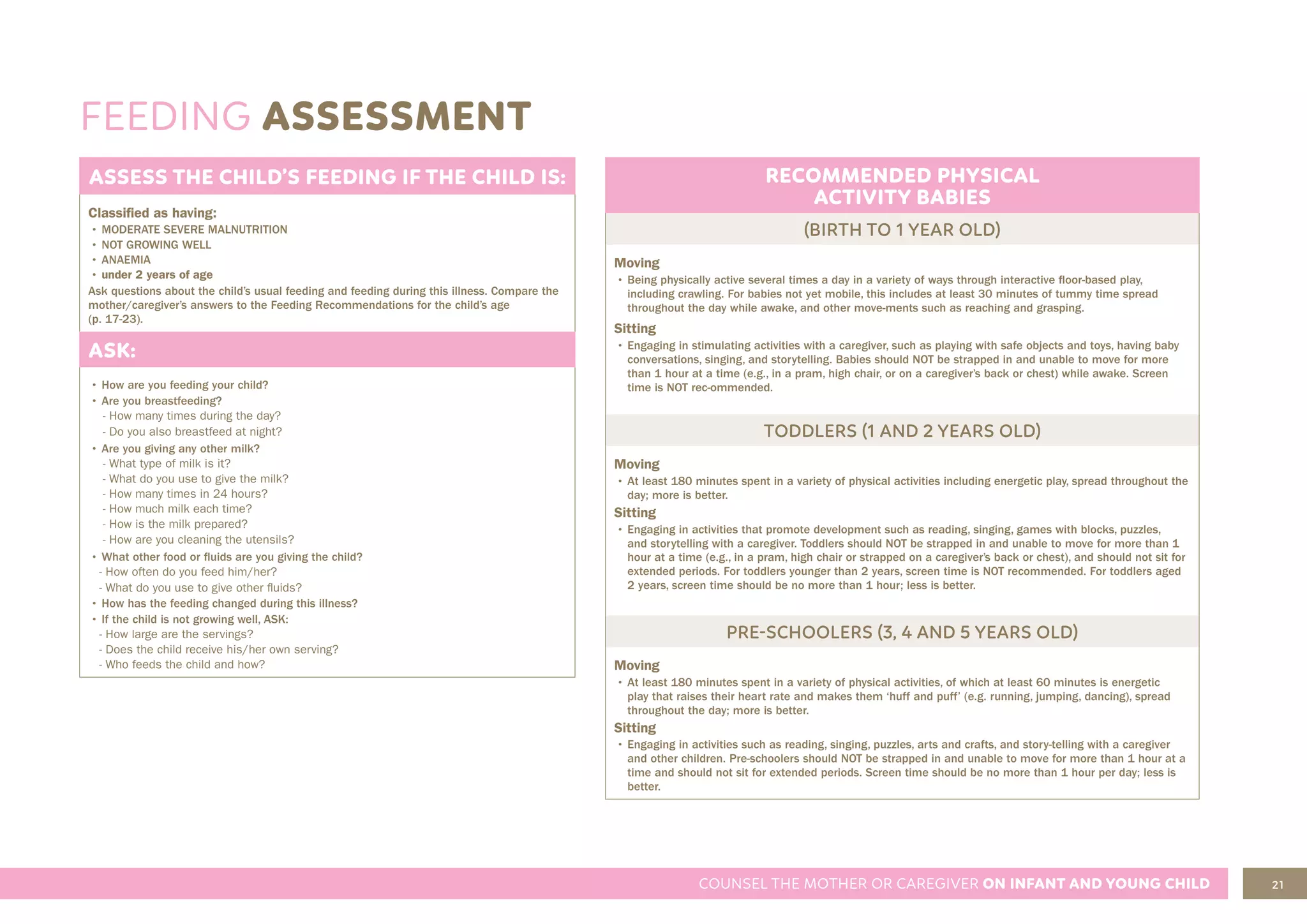
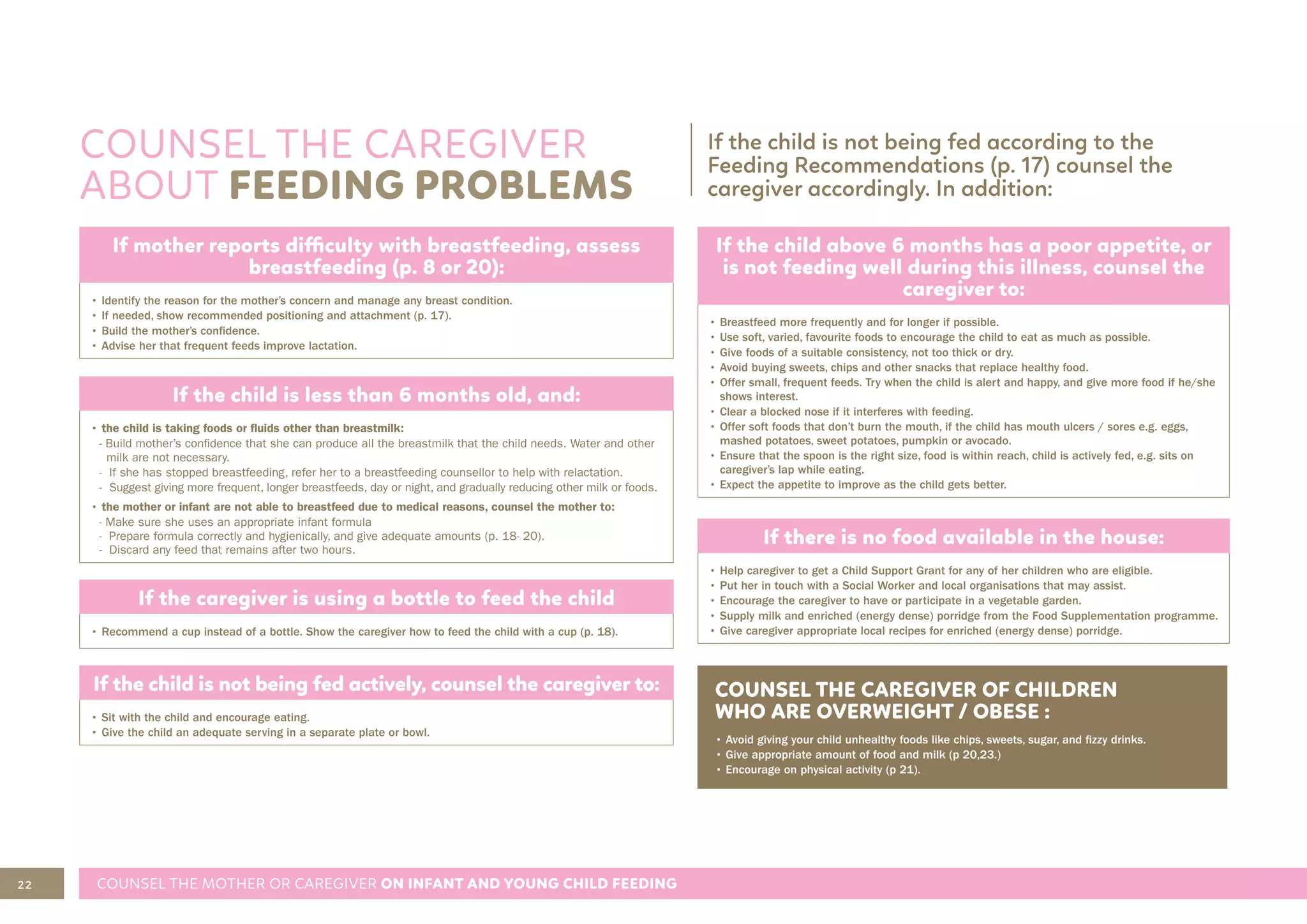
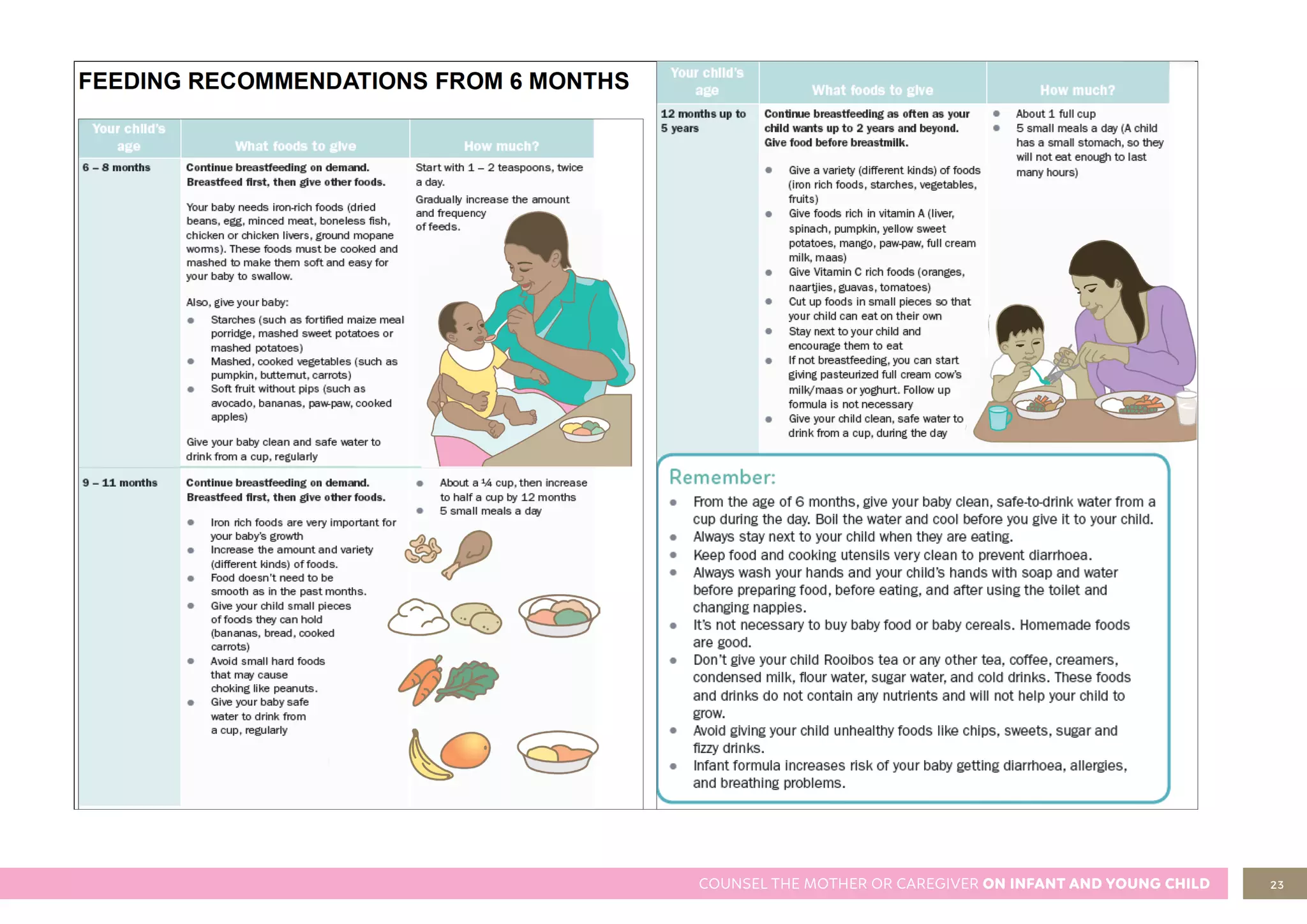

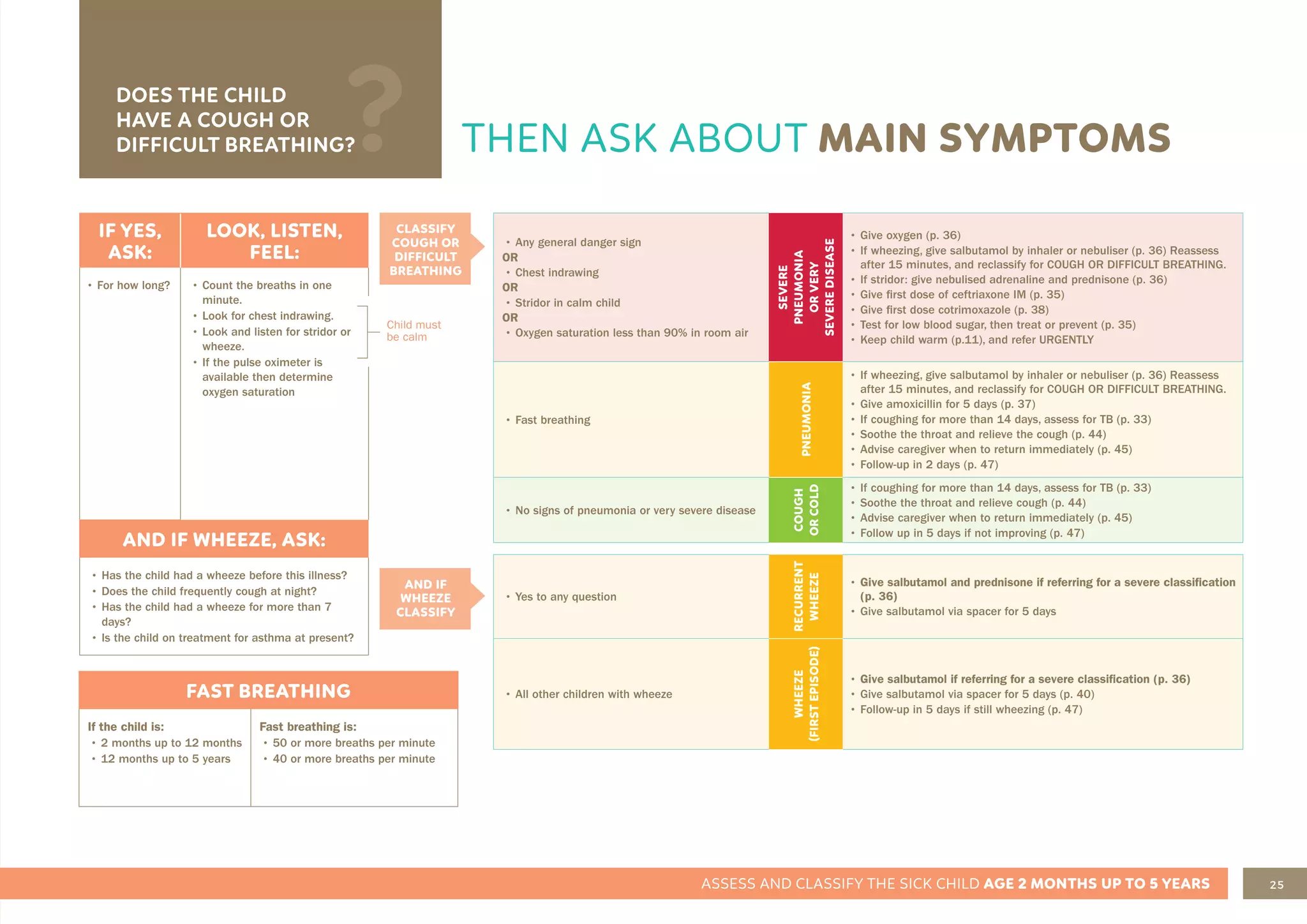
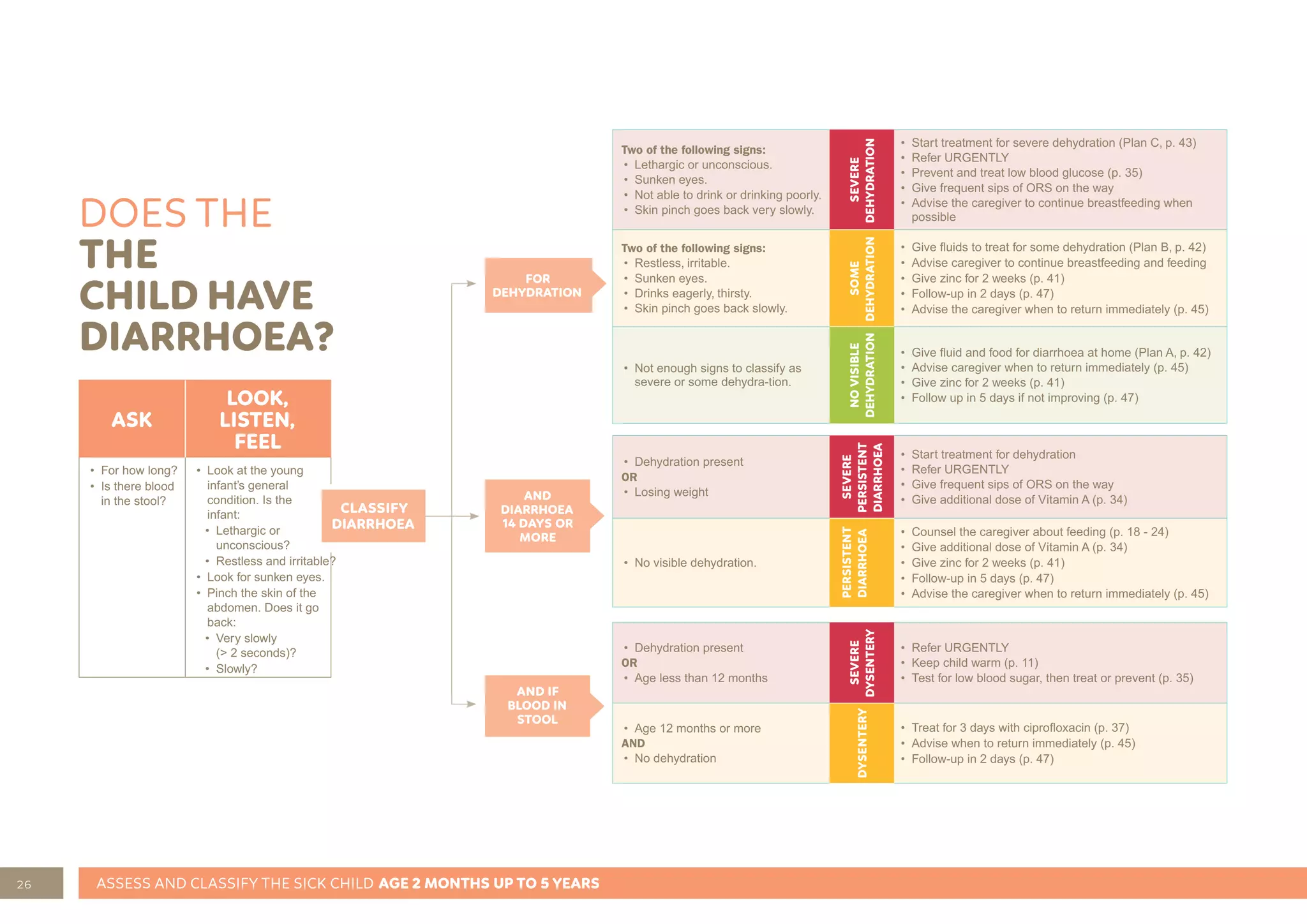
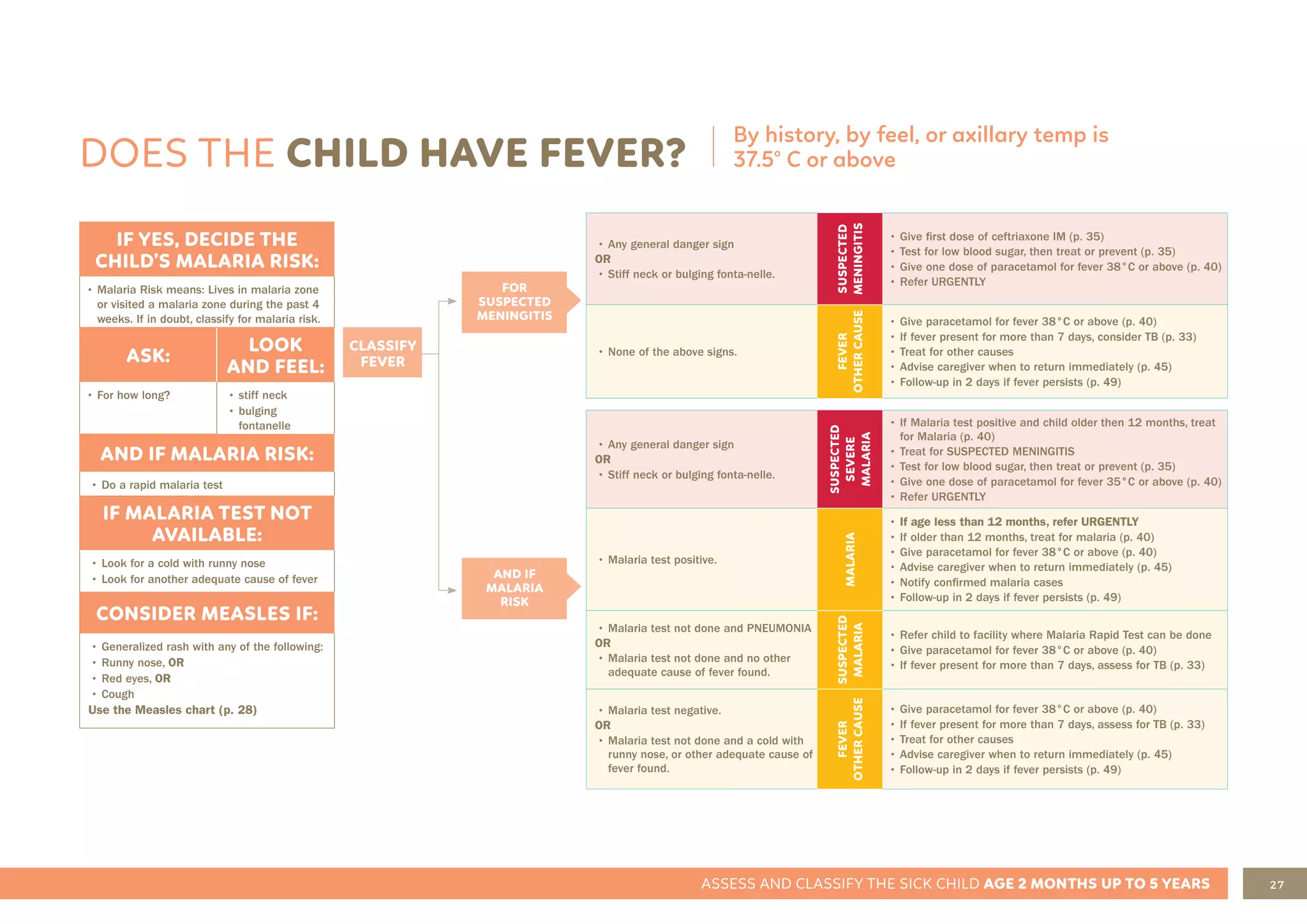
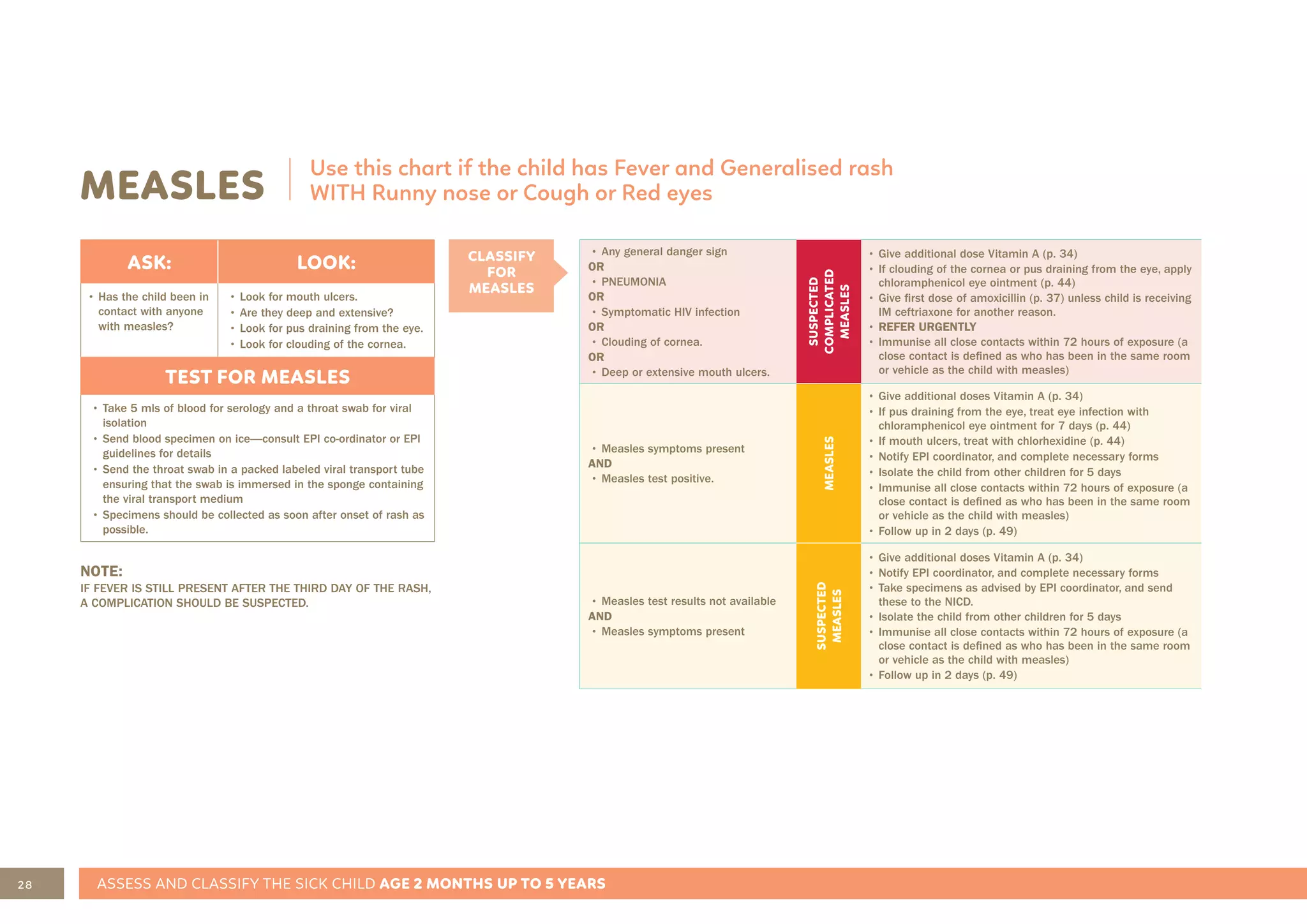

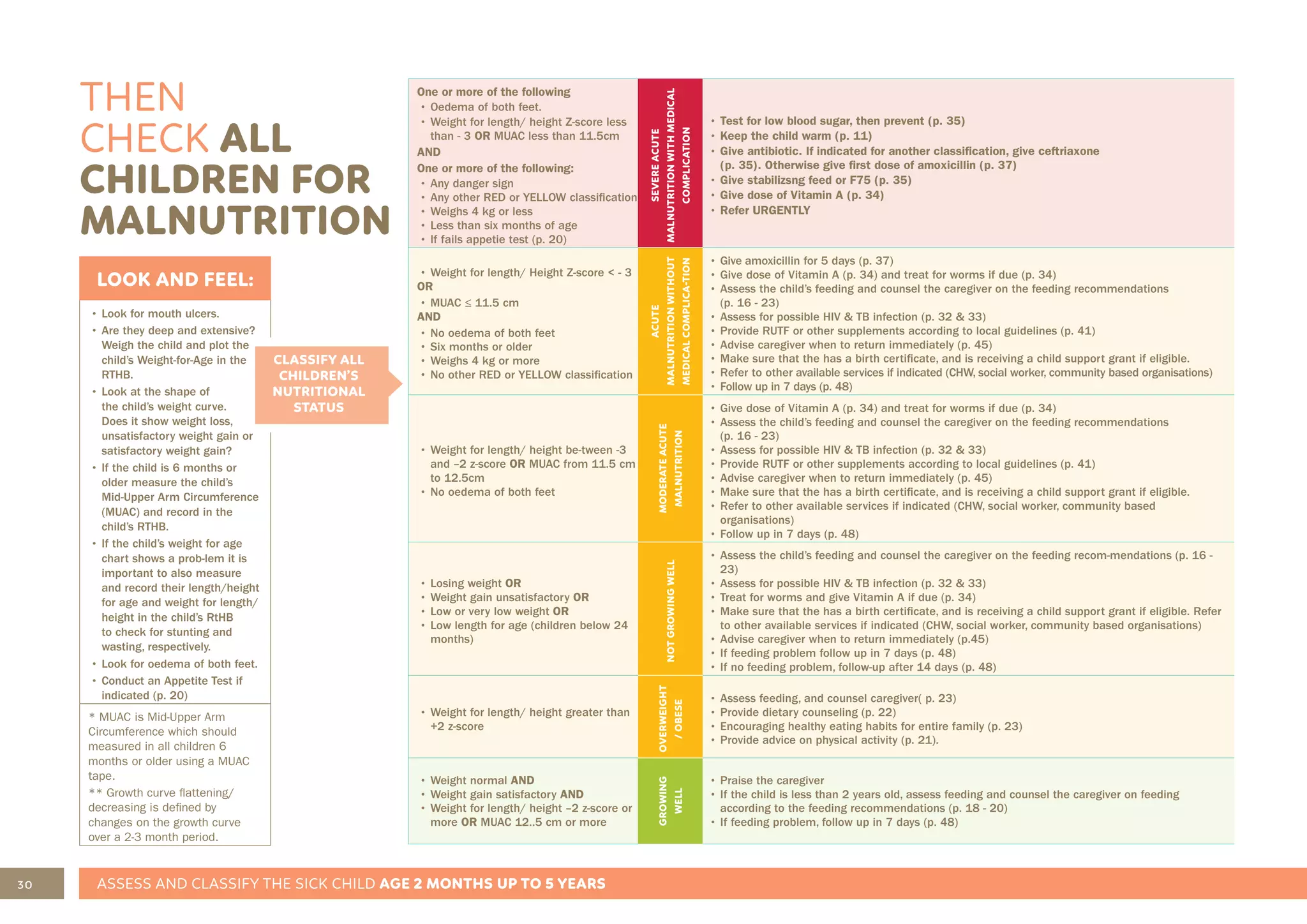
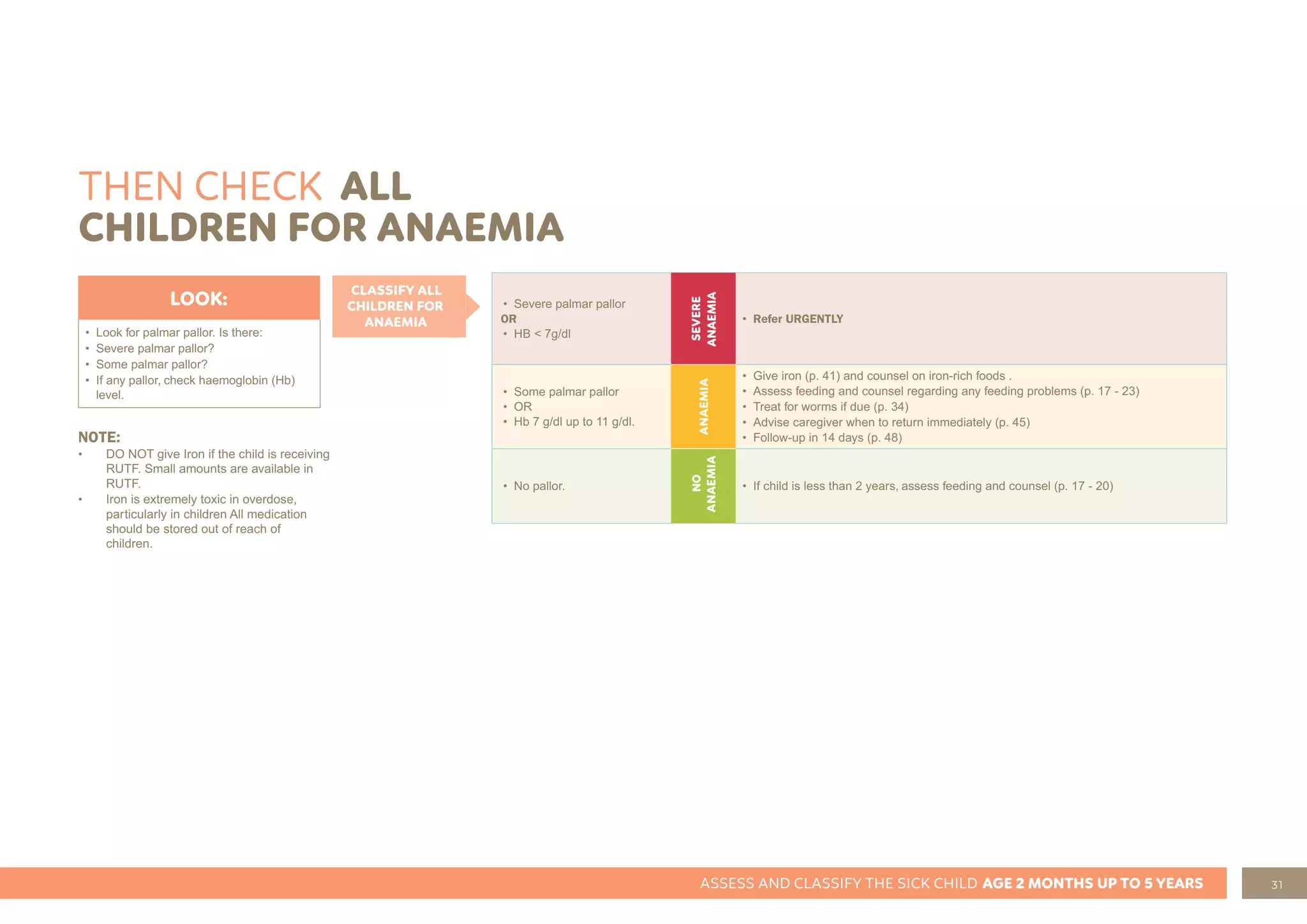
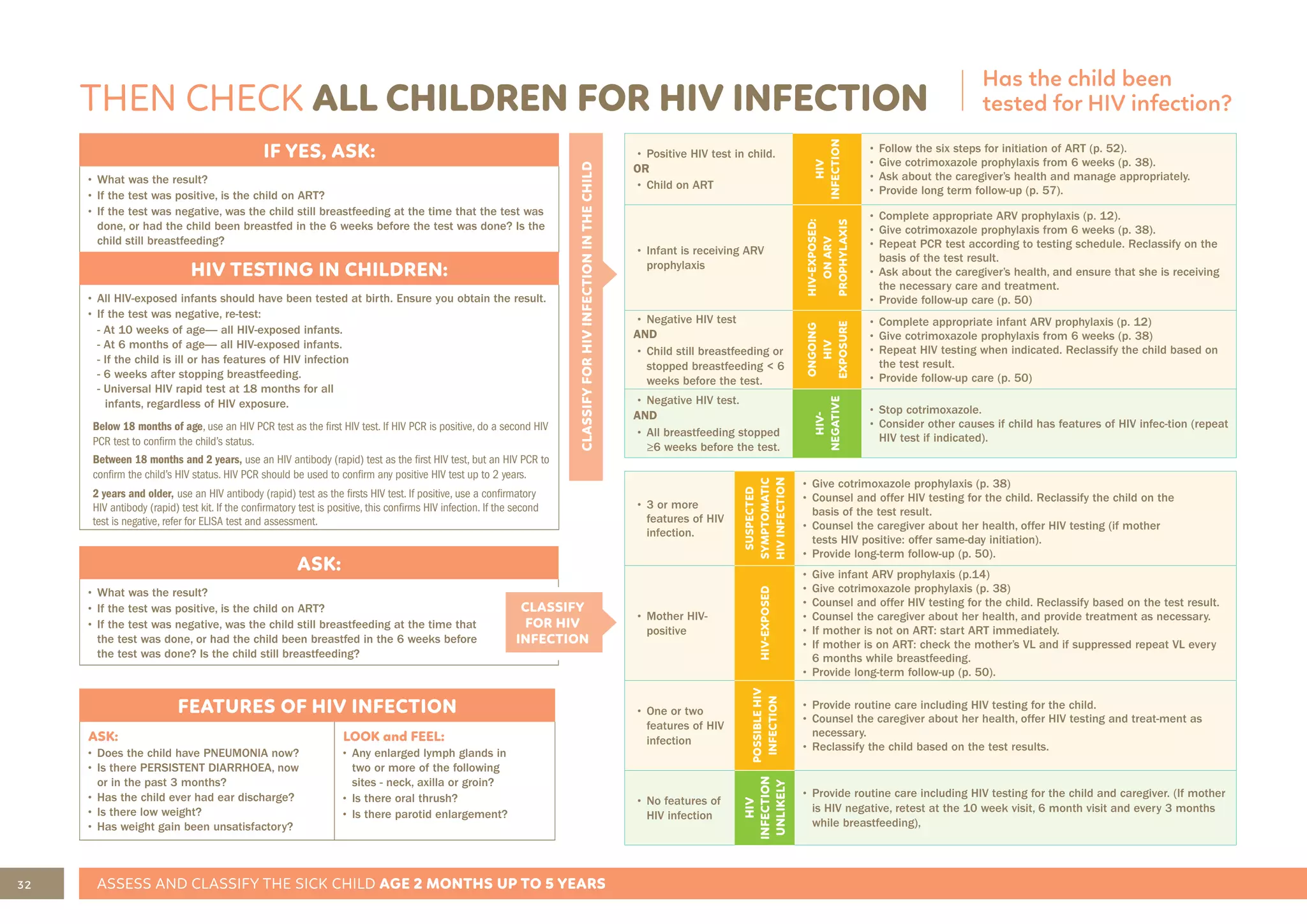
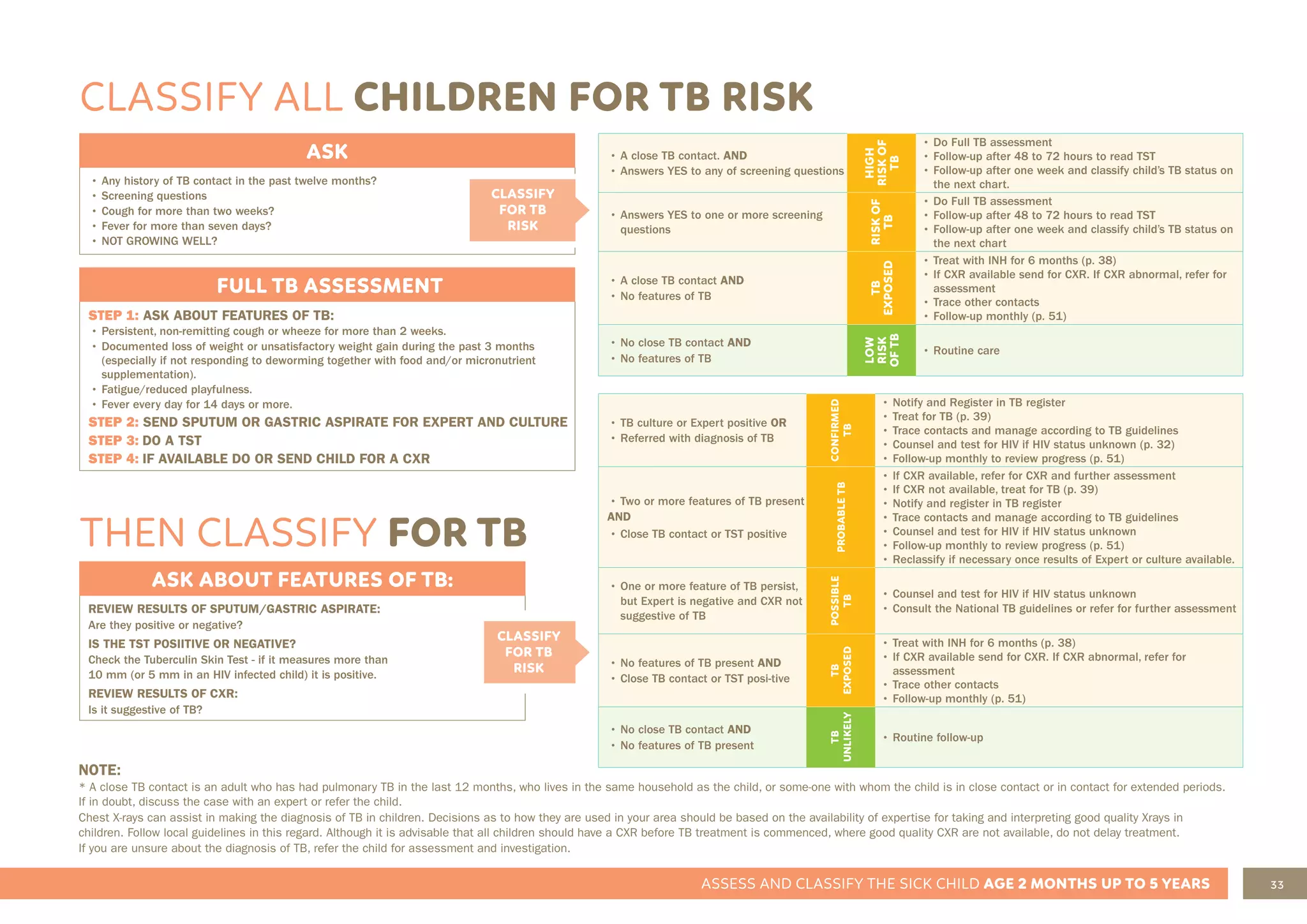
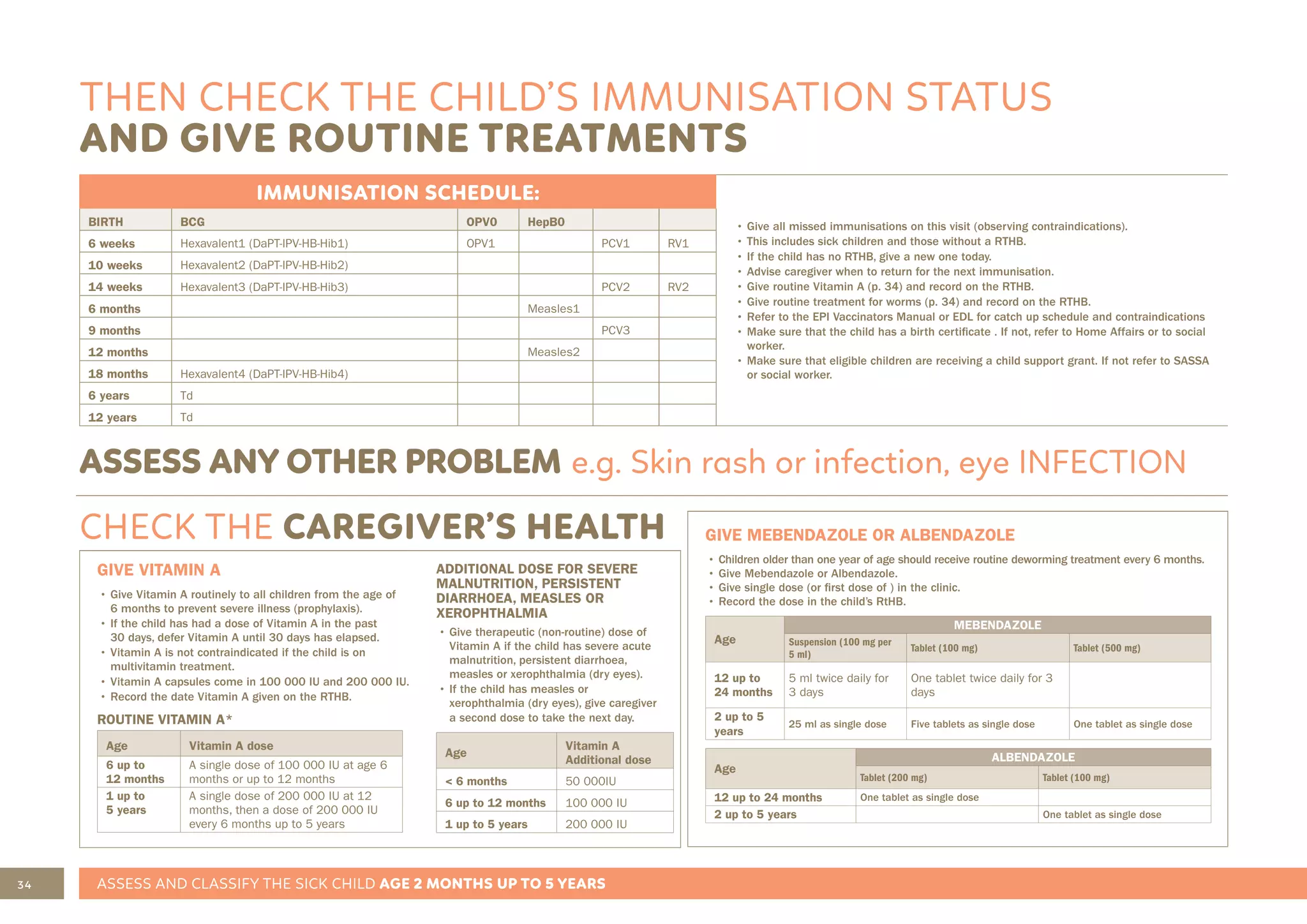
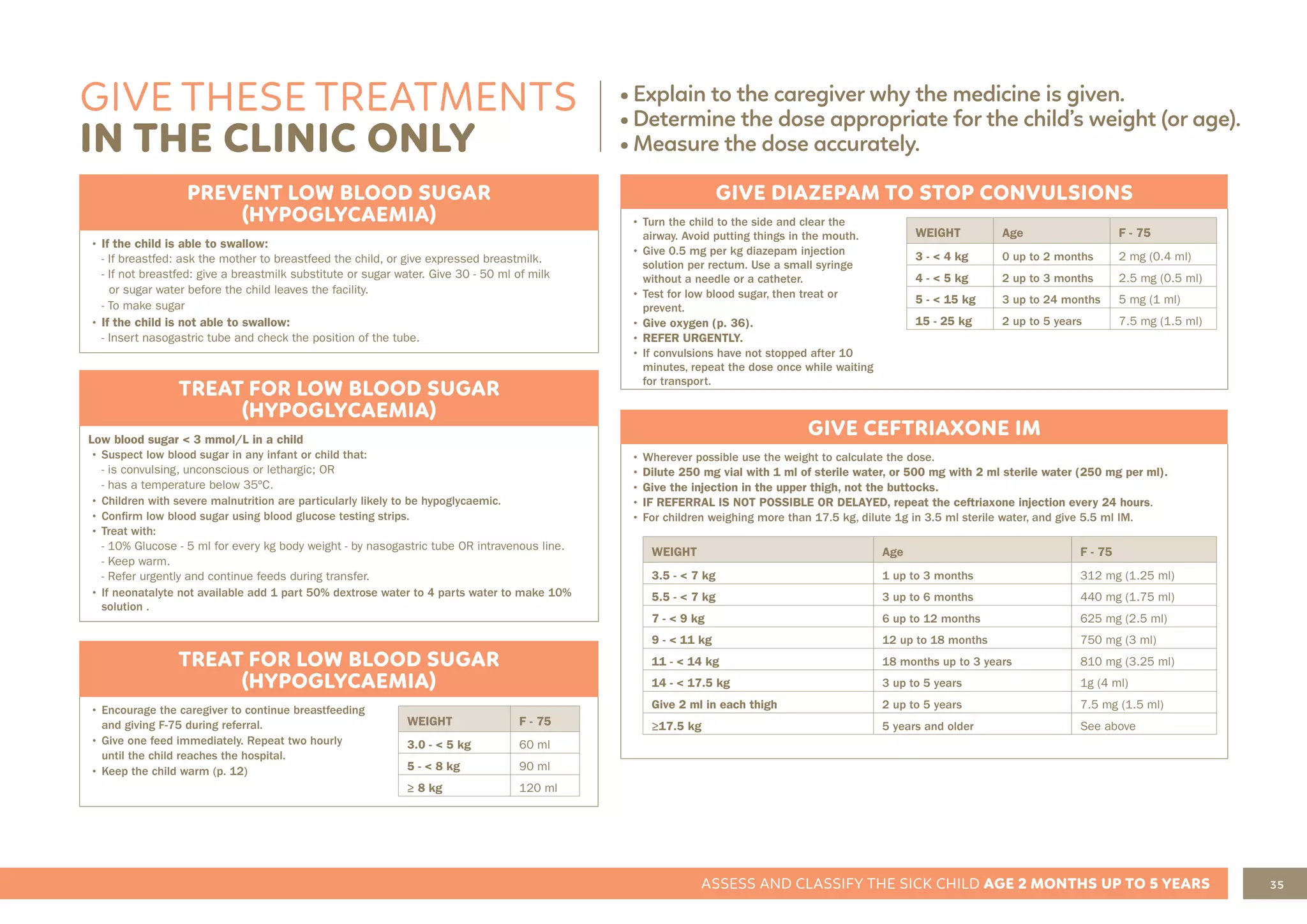

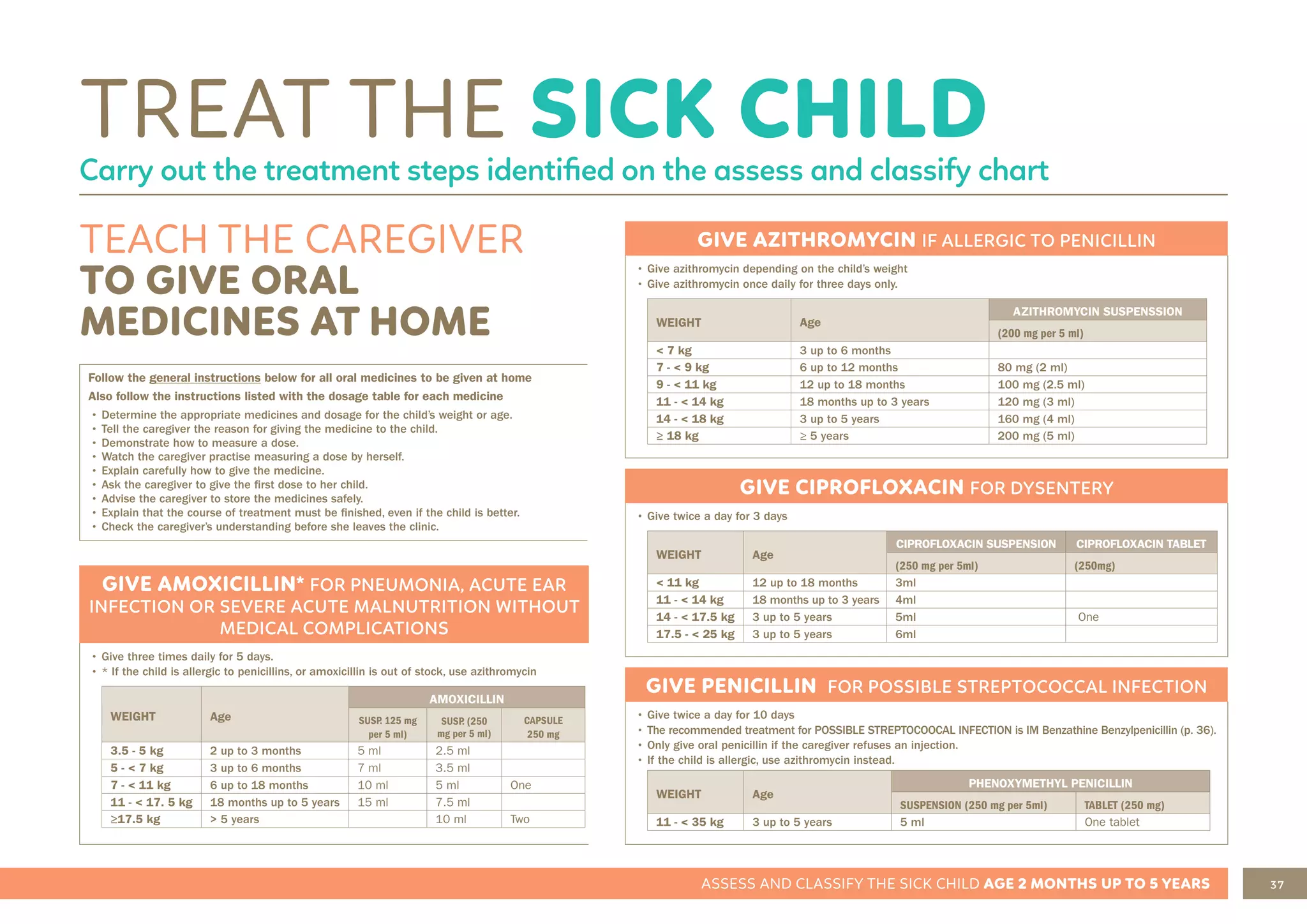

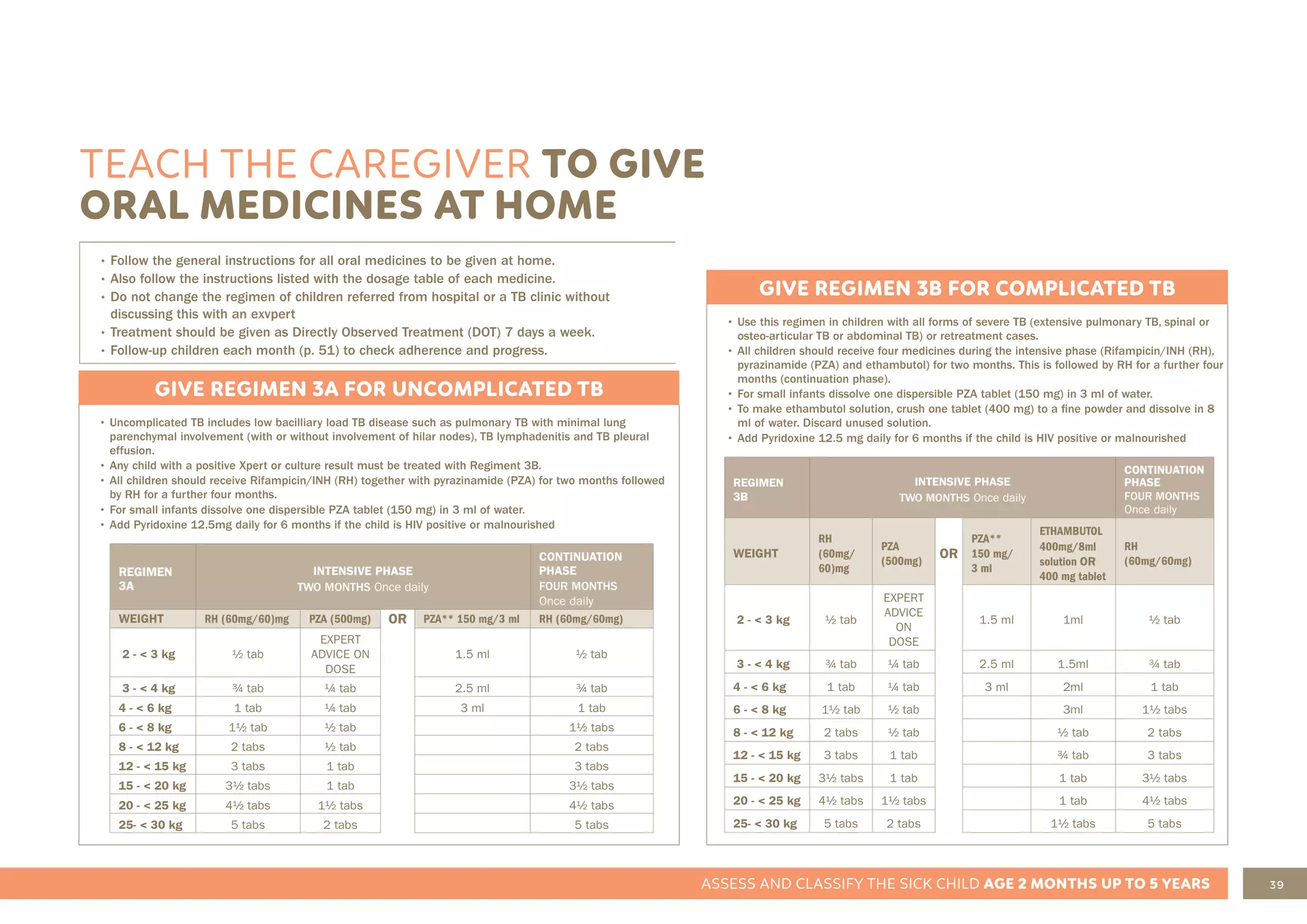
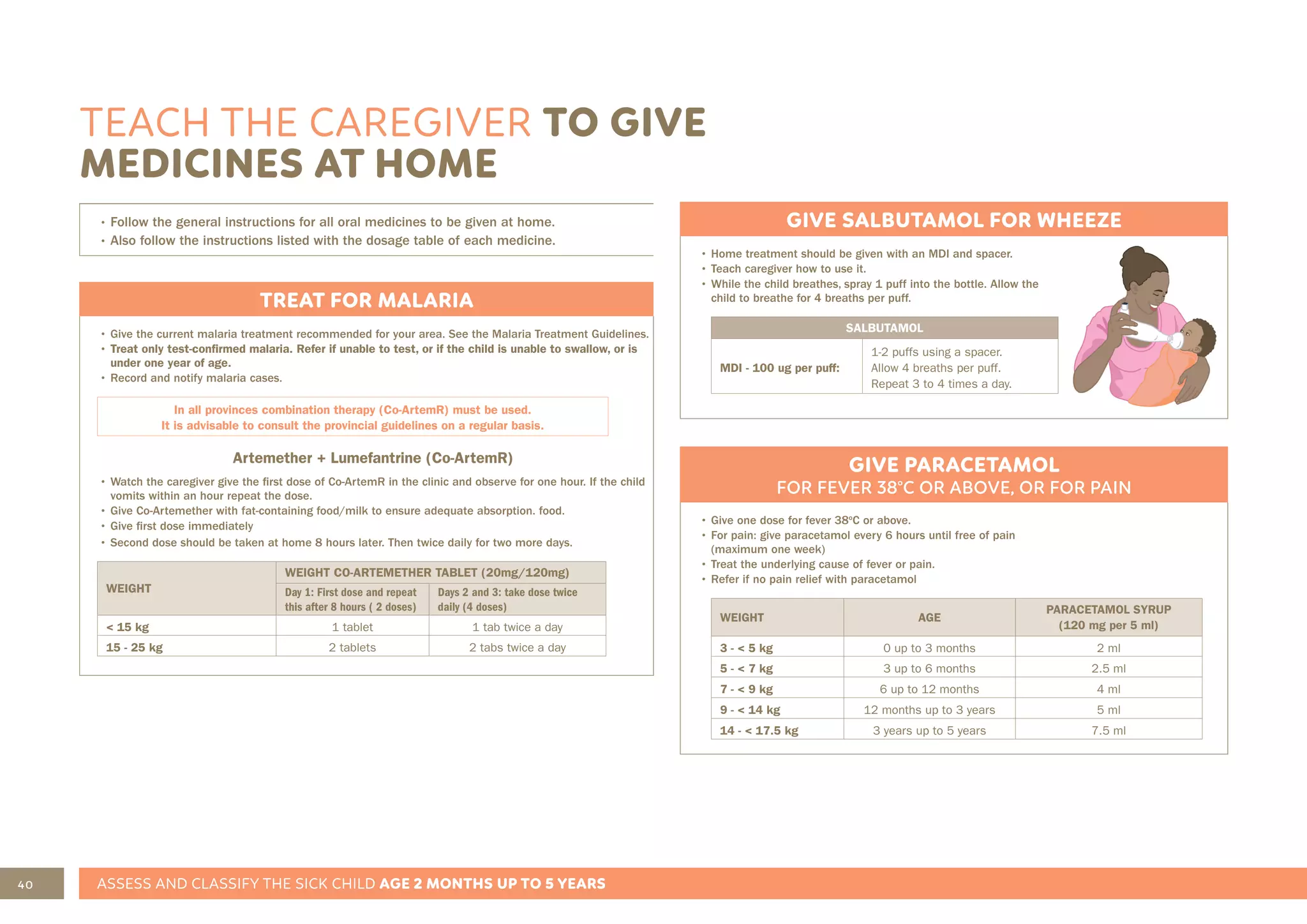
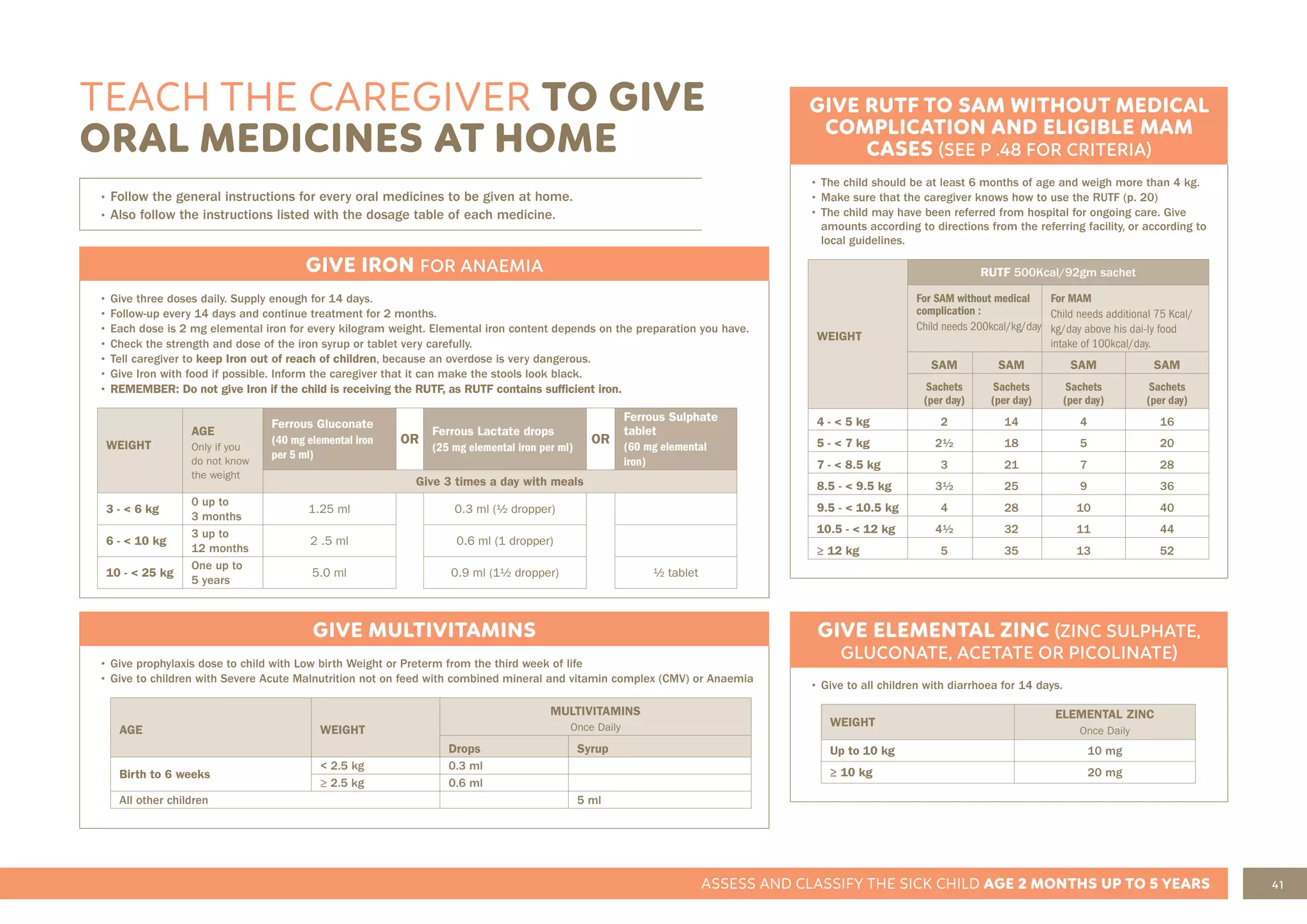

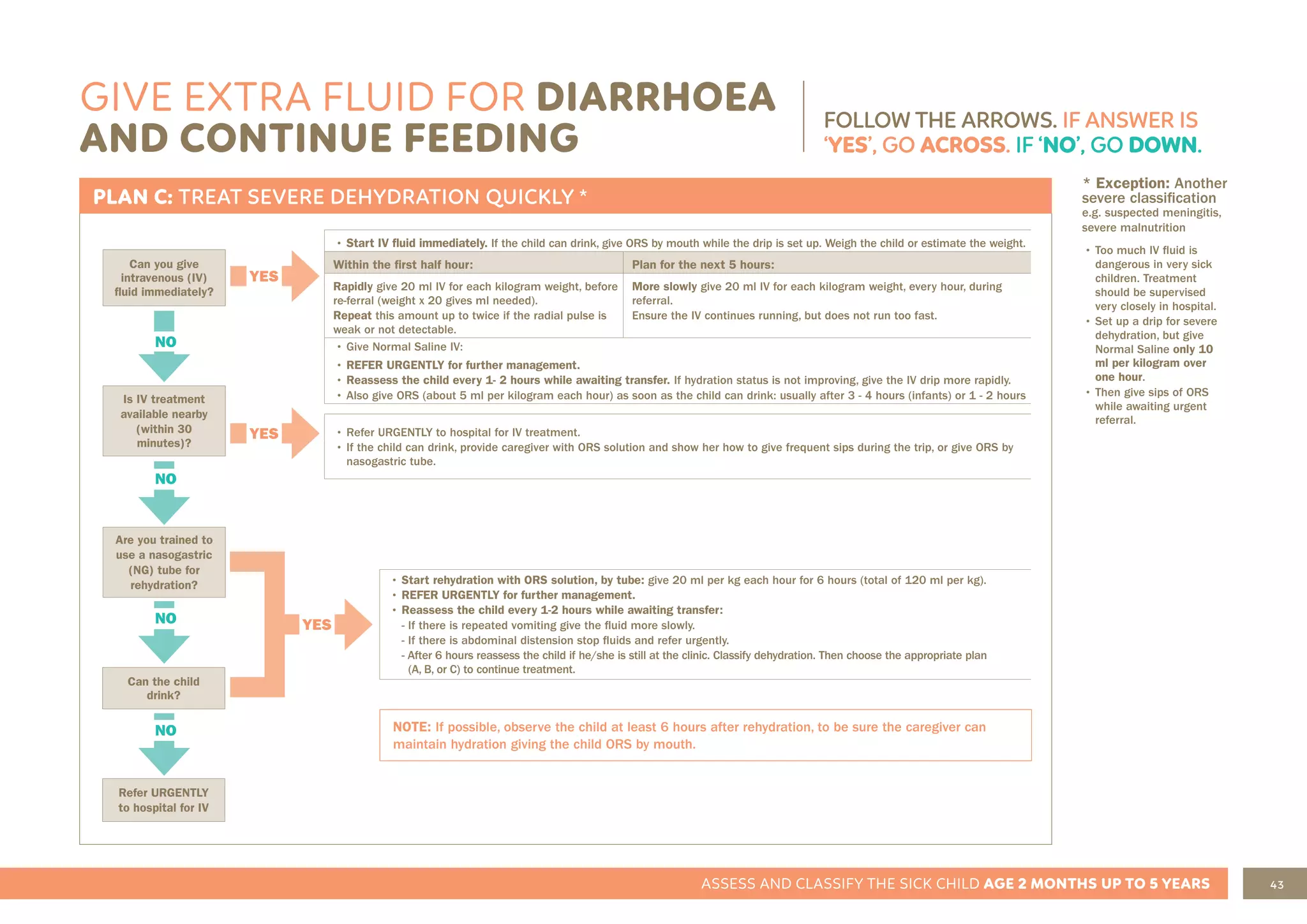
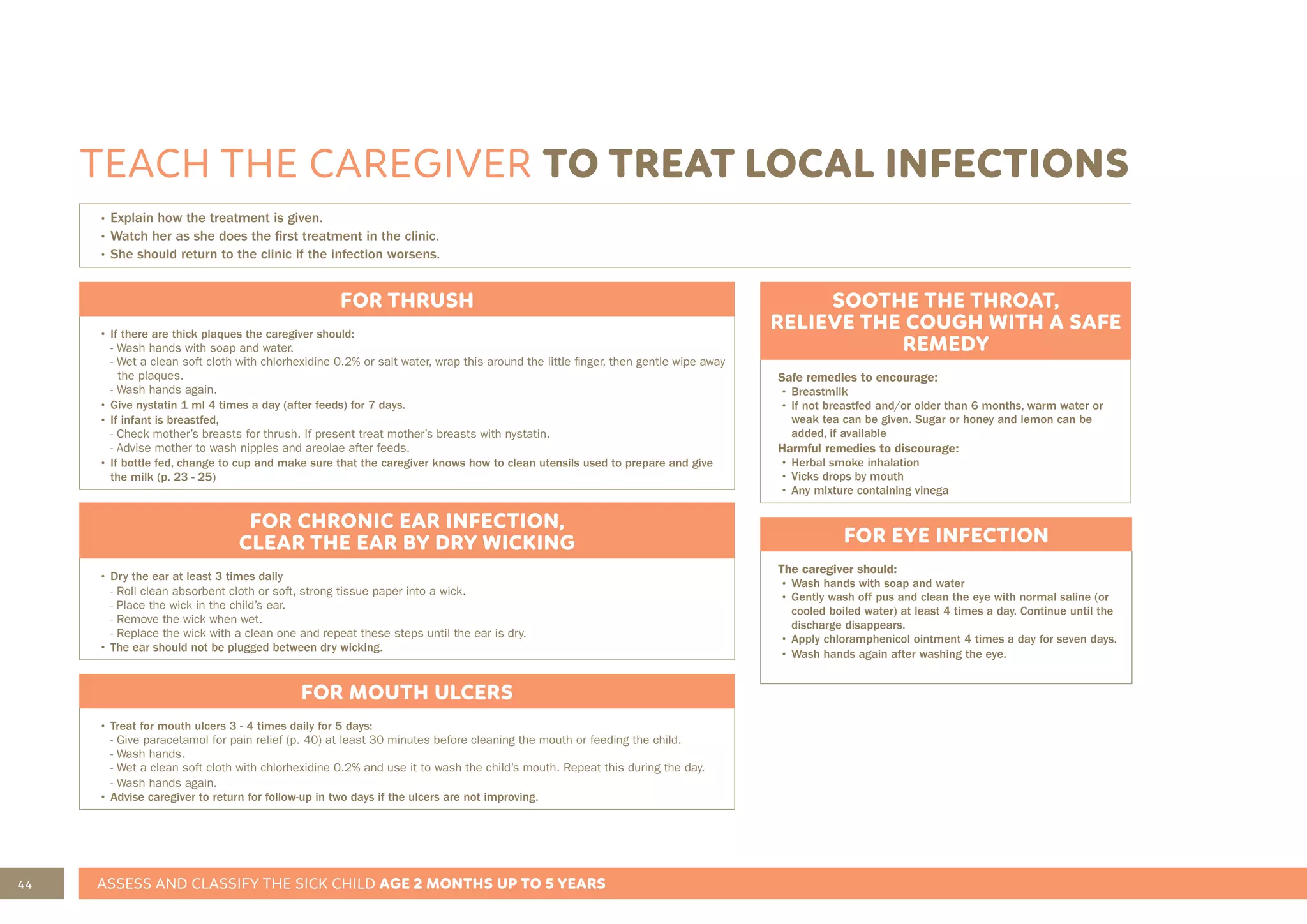
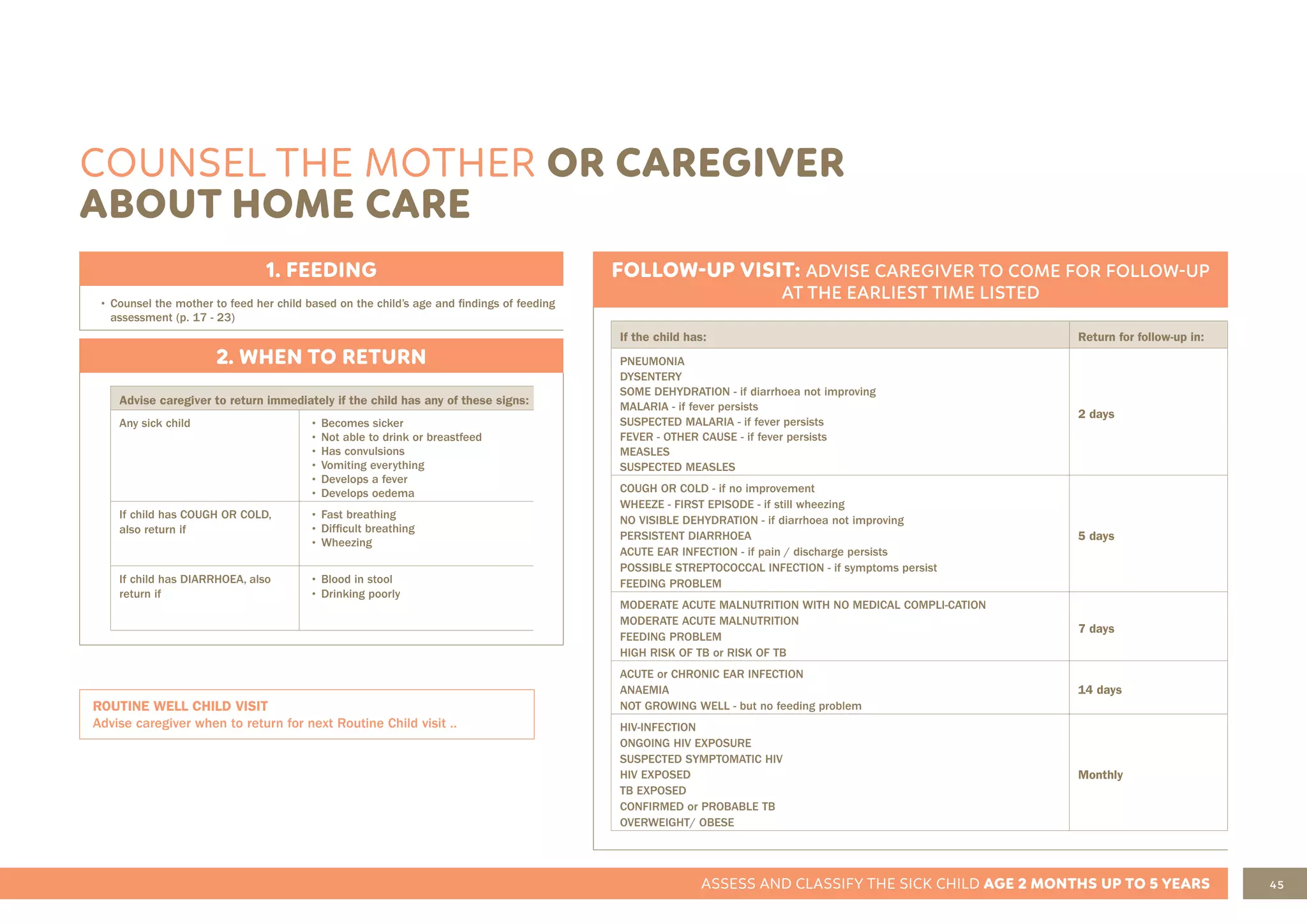
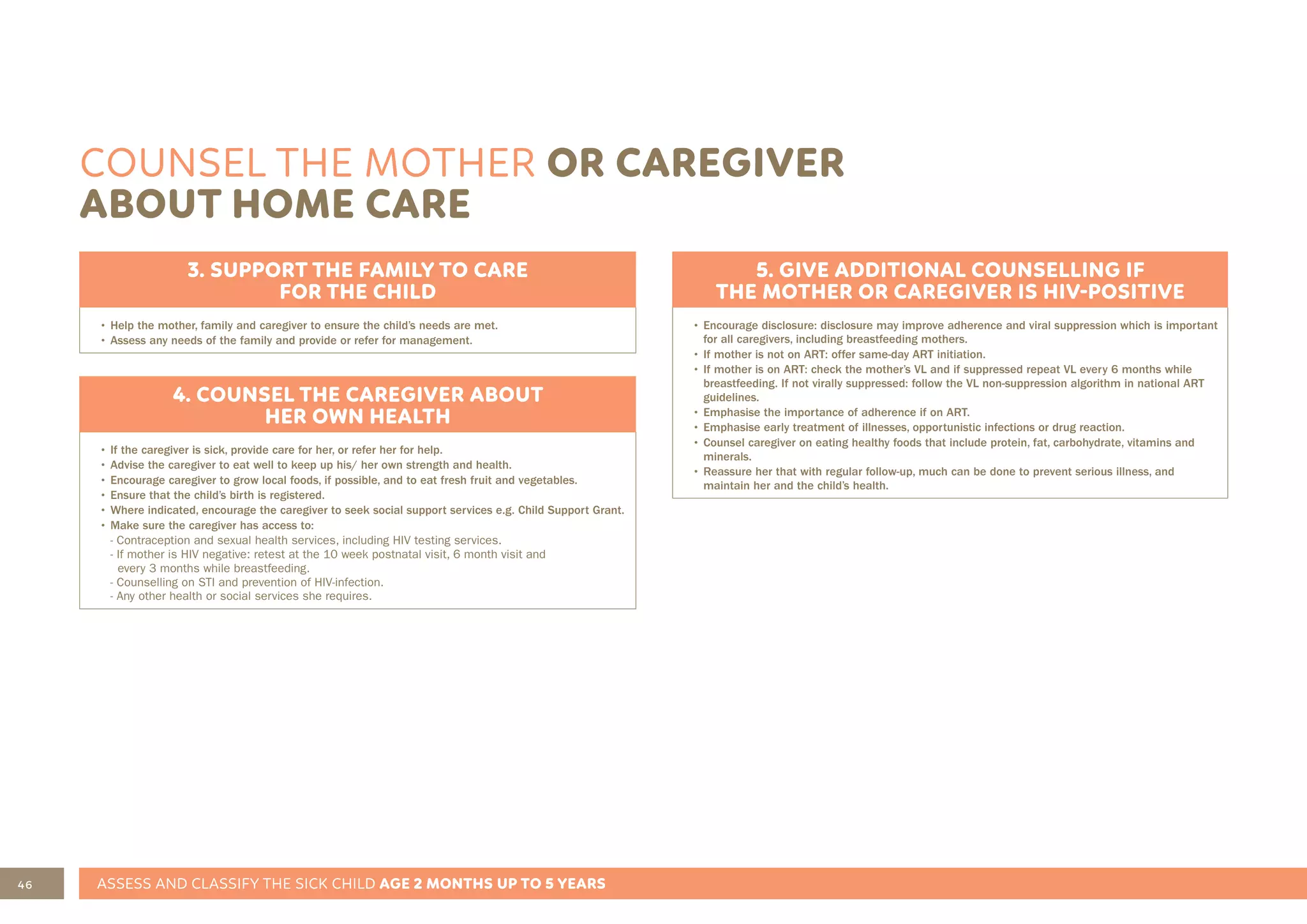
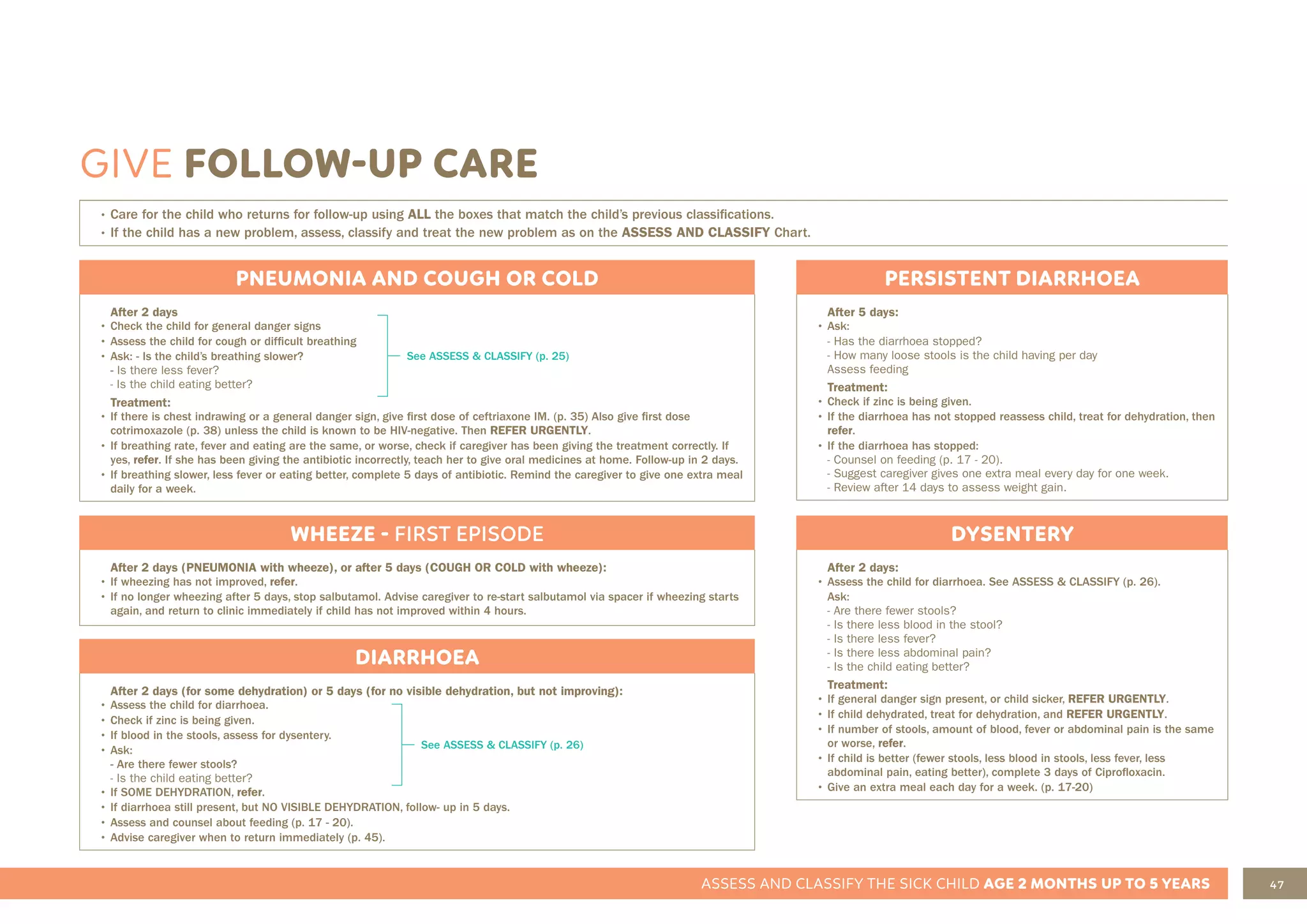
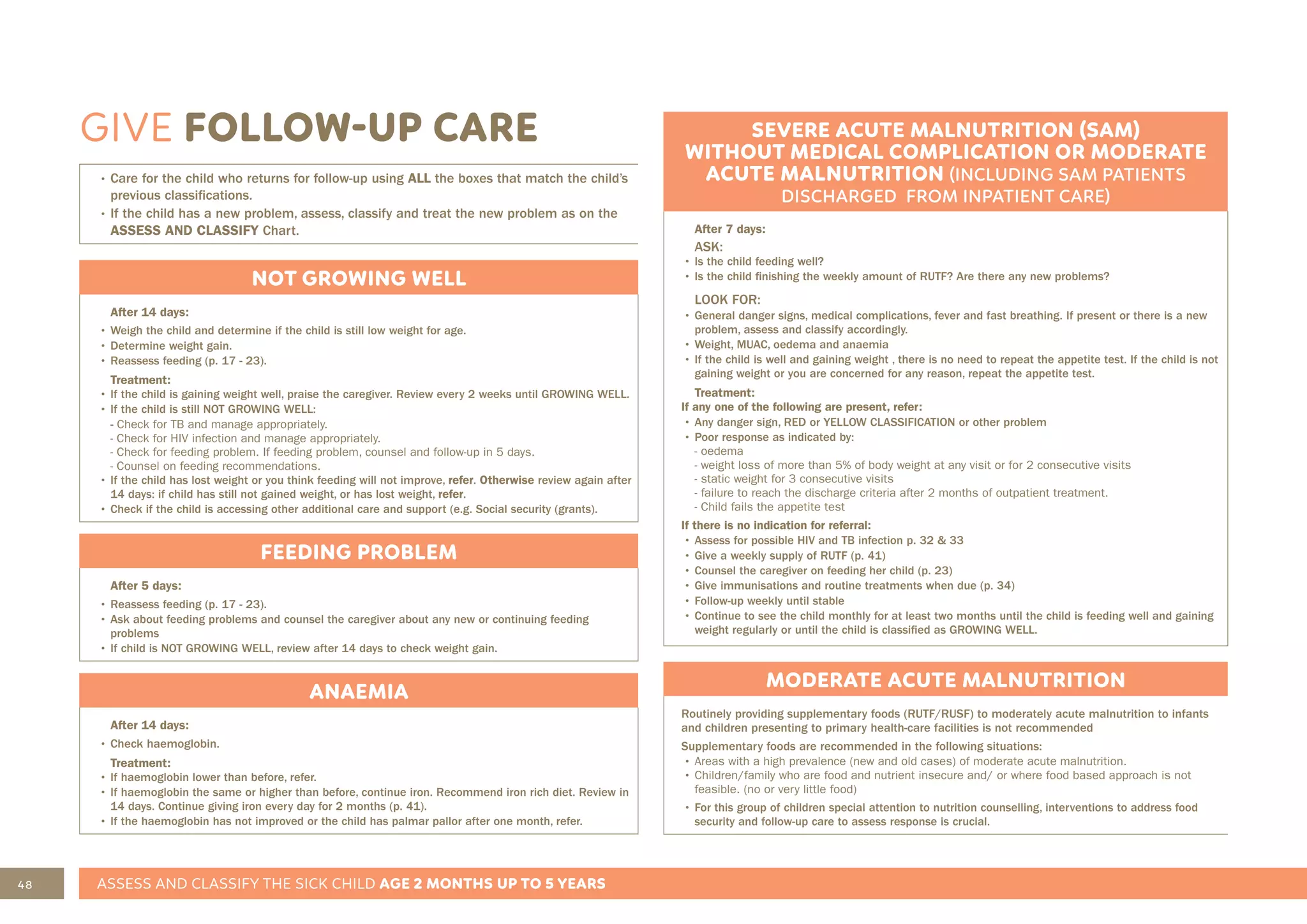
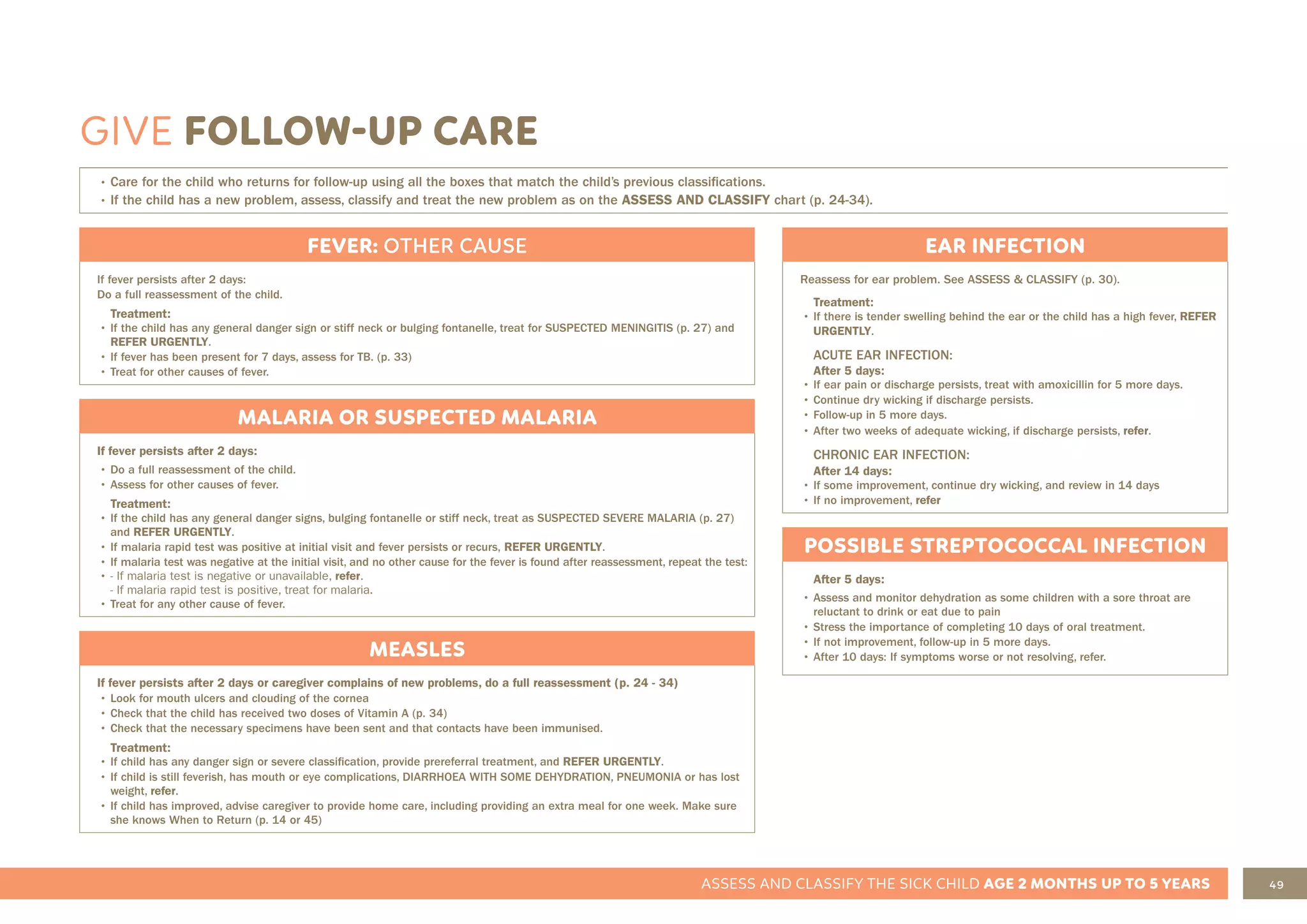


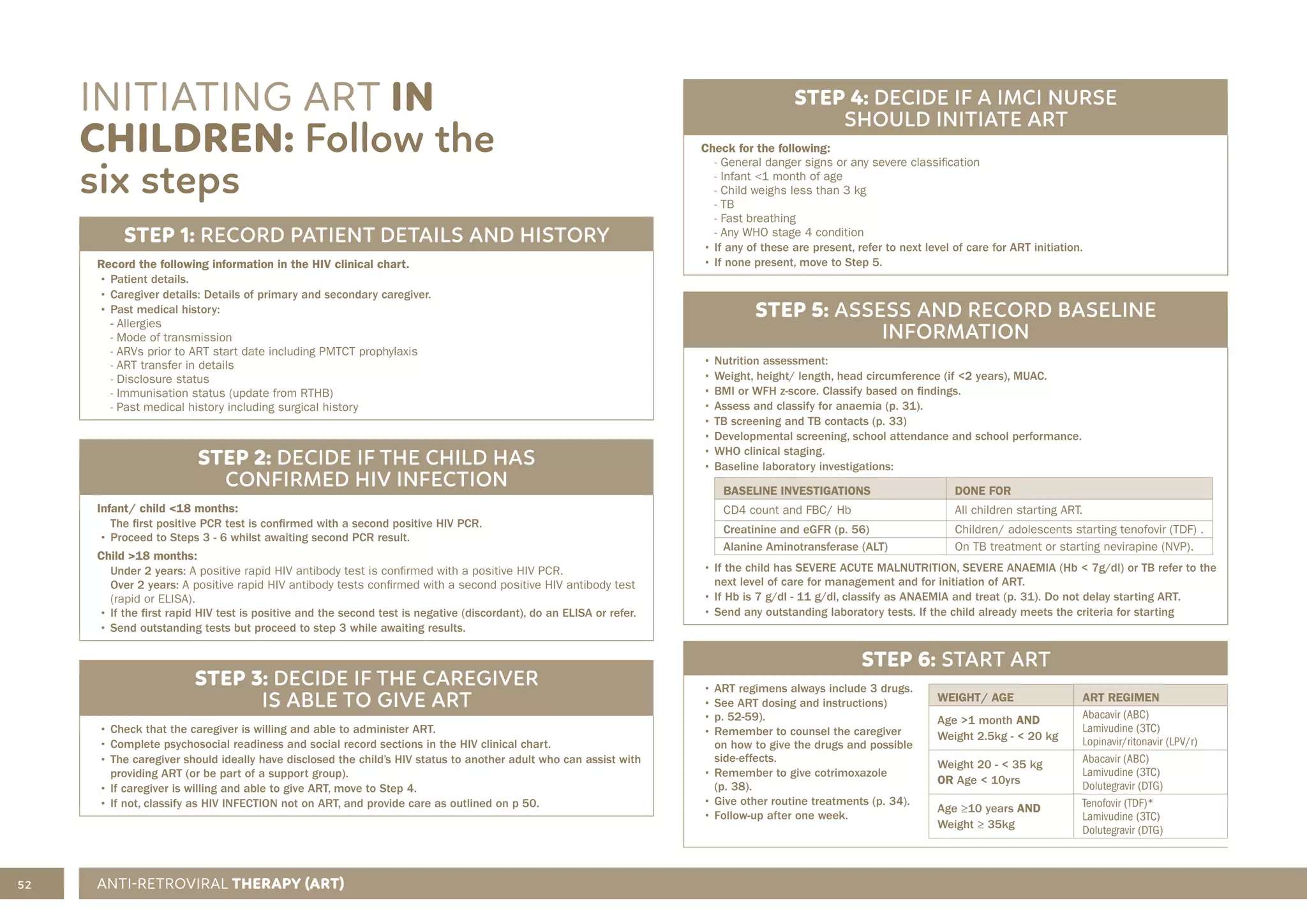
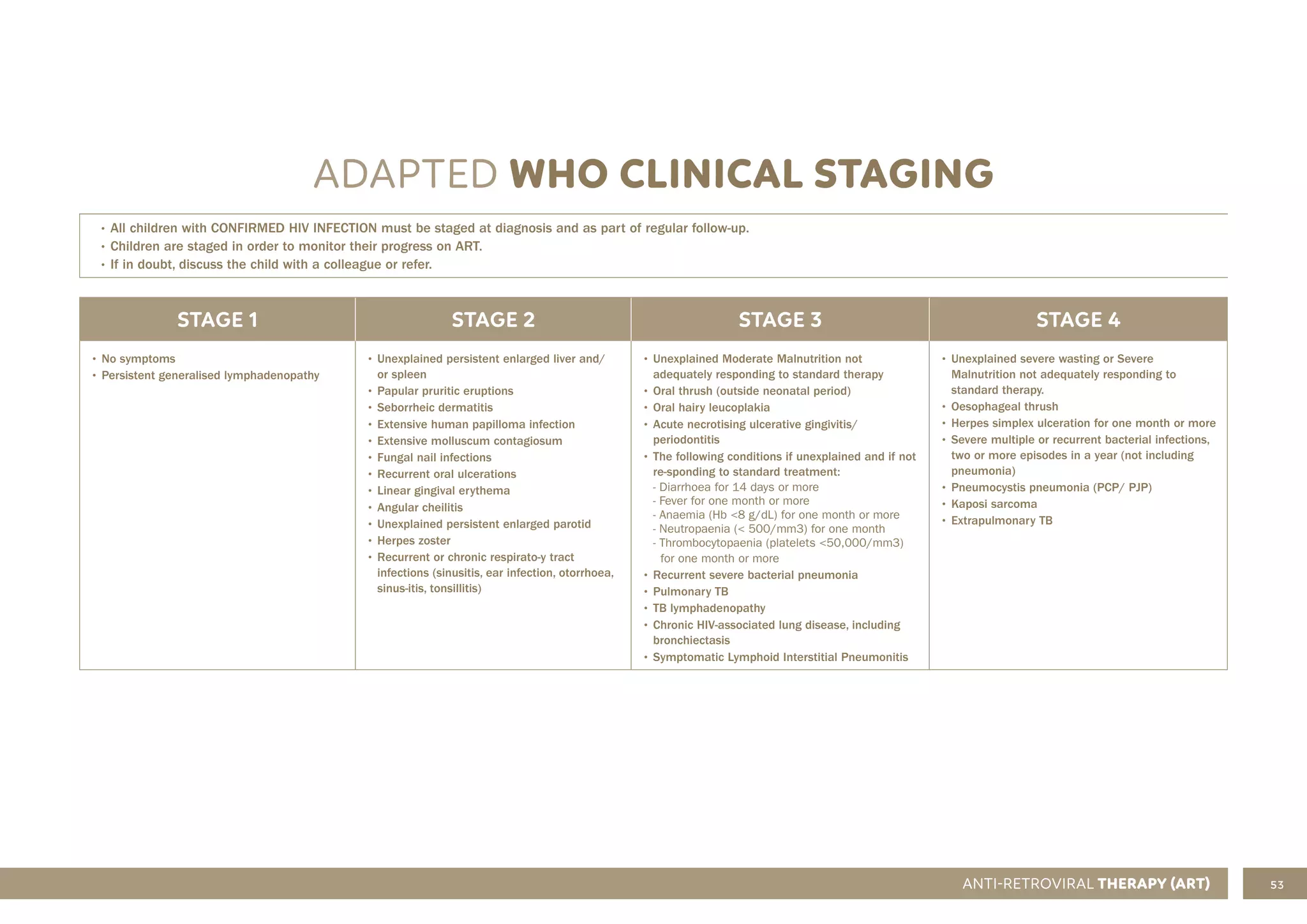
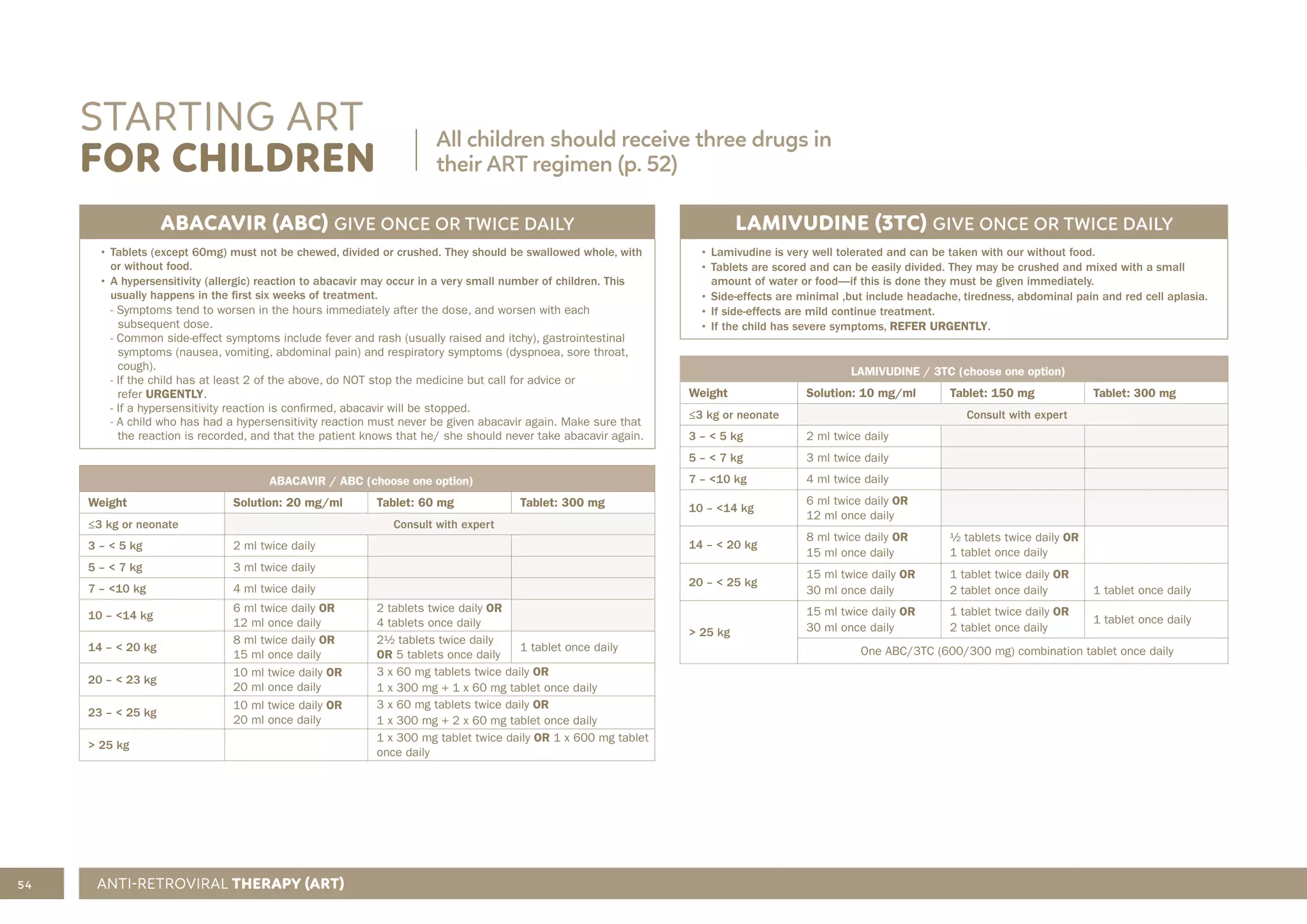

![56 ASSESS AND CLASSIFY THE SICK CHILD AGE 2 MONTHS UP TO 5 YEARS
STARTING ART
FOR CHILDREN
TENOFOVIR (TDF) GIVE ONCE DAILY
• Tenofovir is not recommended for children/ adolescents <10 years old and weighing < 35kg.
• Tenofovir is well tolerated can be taken with or without food in the morning or in the evening.
• Uncommon but important side effects of Tenofovir include reduced bone density and reduced kidney
function.
• Creatinine and estimated GFR are done before starting Tenofovir and then monitored at month 3, 6
and 12, and thereafter every 12 months.
• If eGFR <80 ml/min: start or change to ABC in place or TDF and refer.
• Estimated GFR will need to be calculated for children/ adolescents 10-<16 years:
eGFR (ml/min) = height [cm] x 40 x creatinine [μmol/l].
TENOFOVIR / TDF (choose one option)
Weight Solution: 20 mg/ml Tablet: 300 mg
TLD combination tablet
(TDF 300mg + 3TC 300mg
+ DTG 50mg)
<35 kg AND
<10 years old
Not recommended for children/ adolescents <35 kg and <10 years old
≥35 kg and ≥10 years old 300 mg 1 tablet once daily 1 tablet once daily
EFAVIRENZ (EFV) GIVE ONCE DAILY AT NIGHT
• Efavirenz is not recommended in children < 3 years and weighing <10 kg.
• Can be taken with our without food, but avoid giving with fatty foods.
• Tablets must not be chewed, divided or crushed. They should be swallowed whole.
• Capsules may be opened and powder content dispersed in water or mixed with a small amount
of food (e.g. yogurt, to disguise peppery taste) and immediately ingested.
• Side-effects include skin rash, sleep disturbances and confusion/abnormal thinking. REFER
children who develop these symptoms.
• Best given at bed time to reduce central nervous side effects, especially during the first two
weeks.
EFAVIRENZ / EFV (choose one option)
Weight Dose 50 mg tablet/ capsule 200 mg tablet/ capsule 600 mg tablet
10 – <14 kg 200 mg 1 capsule/ tablet
14 – <25 kg 300 mg
2 x 50 mg capsules/ tablets +
1 x 200 mg capsule/ tablet
25 – <40 kg 400 mg 2 capsules/ tablets
≥40 kg 600 mg 1 tablet
All children should receive three drugs in
their ART regimen (p. 52)
ANTI-RETROVIRAL THERAPY (ART)](https://image.slidesharecdn.com/2019imcichartbooklet-230227090236-858bbca7/75/2019-IMCI-CHART-BOOKLET-pdf-58-2048.jpg)
